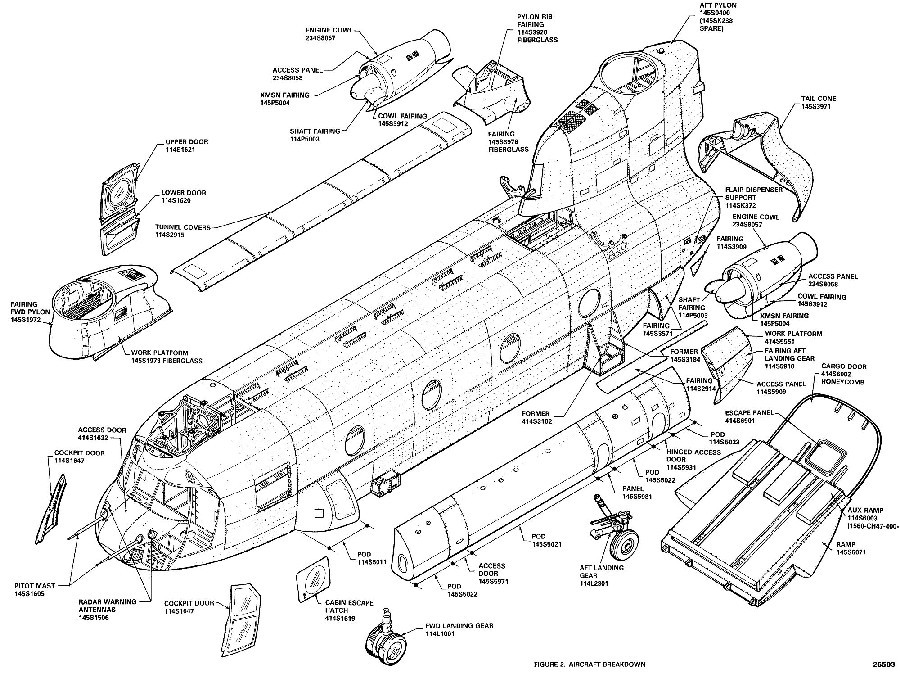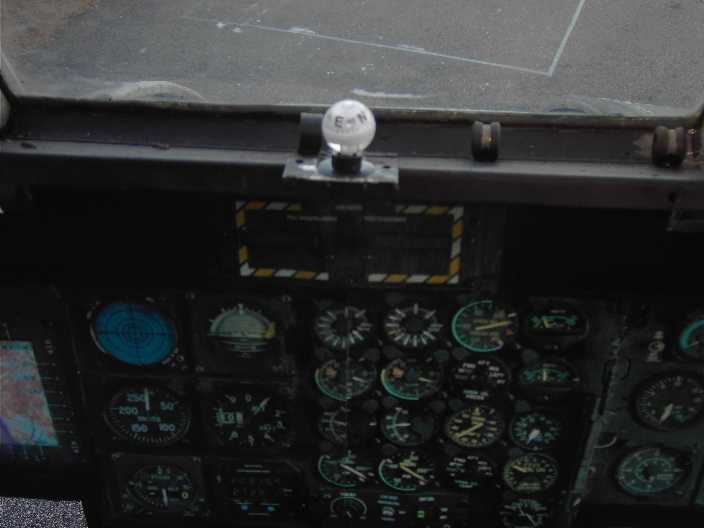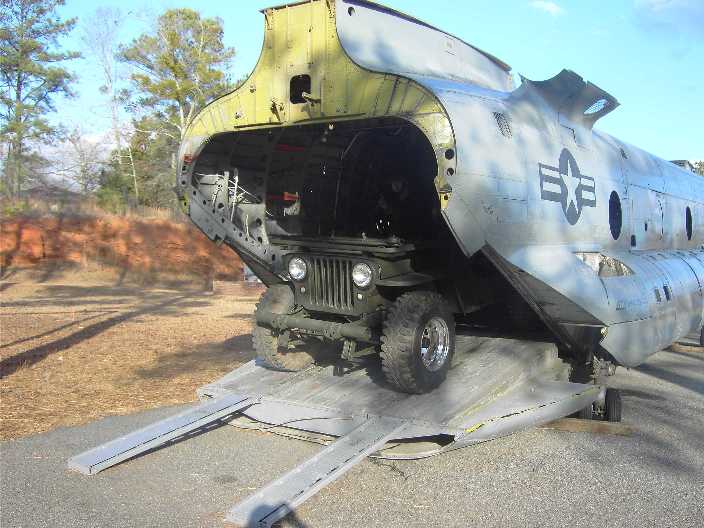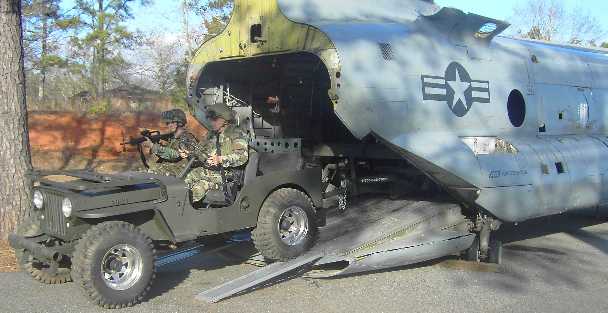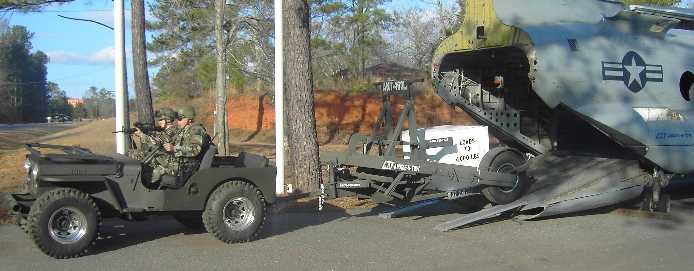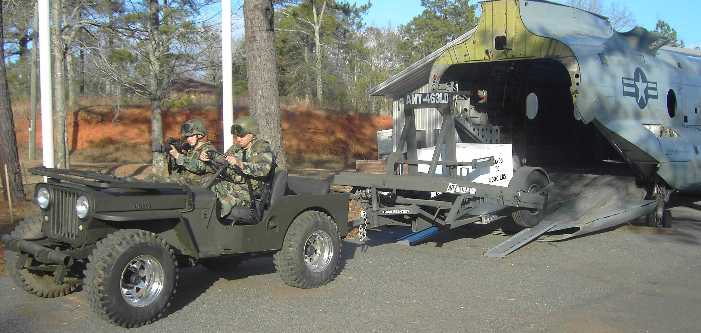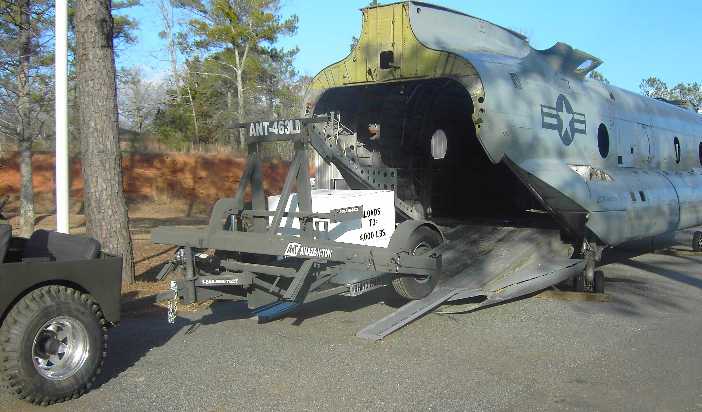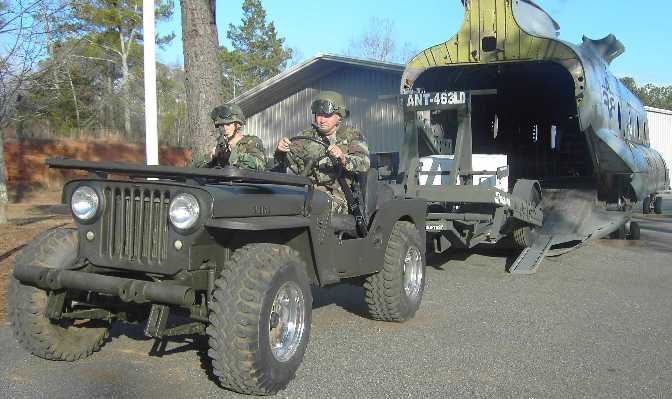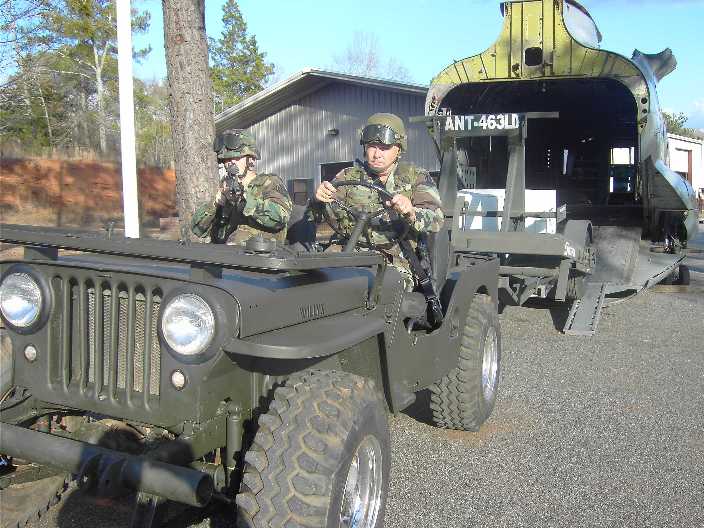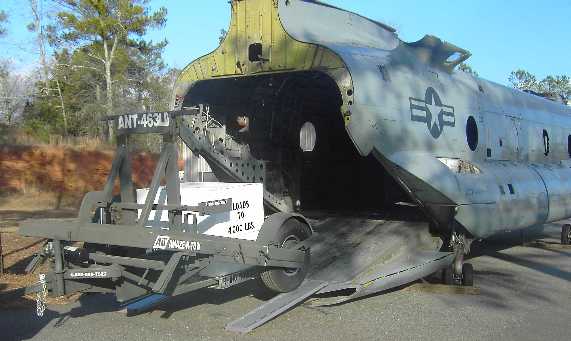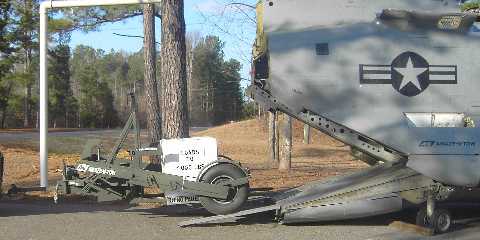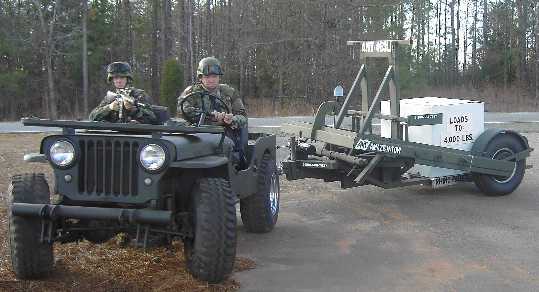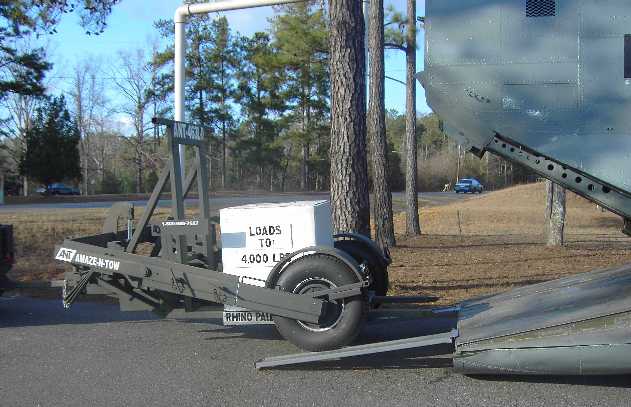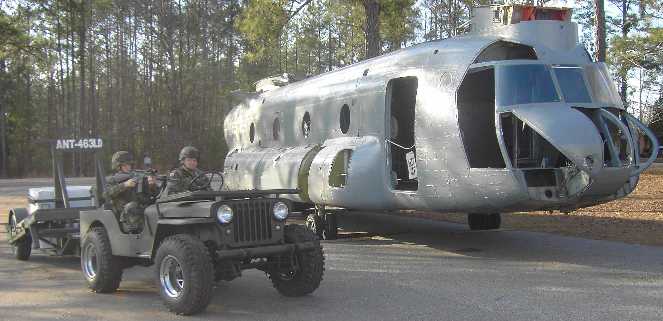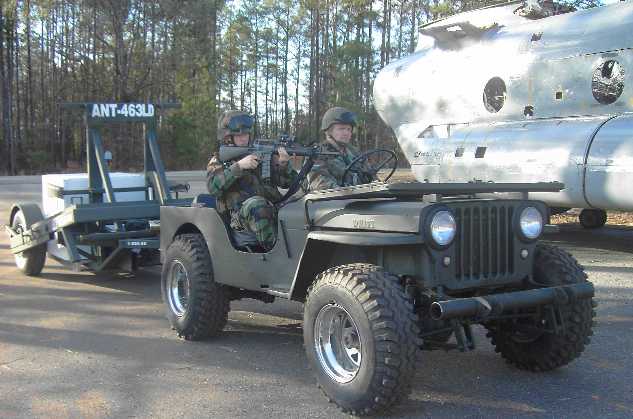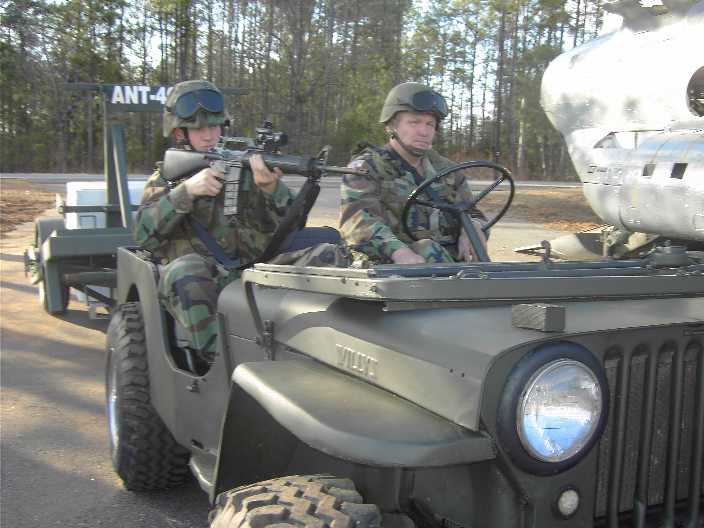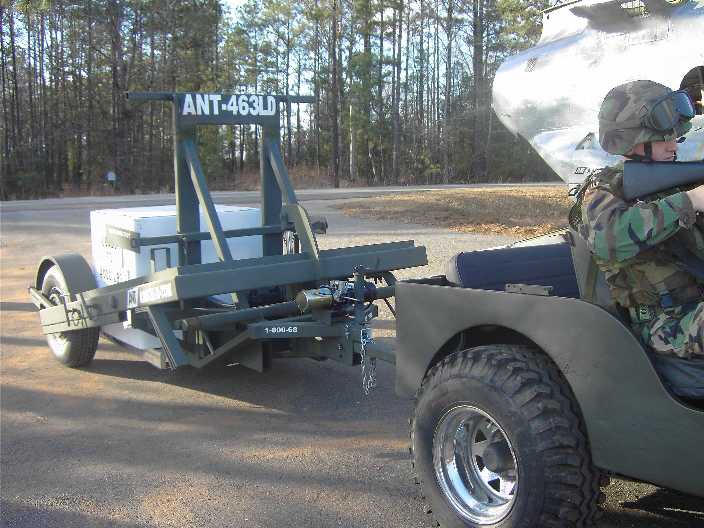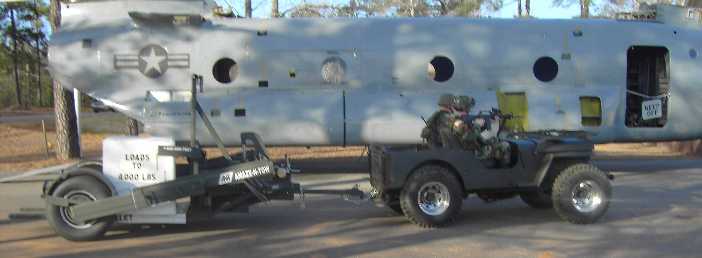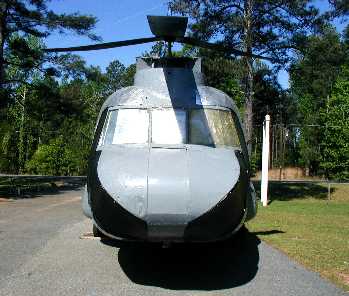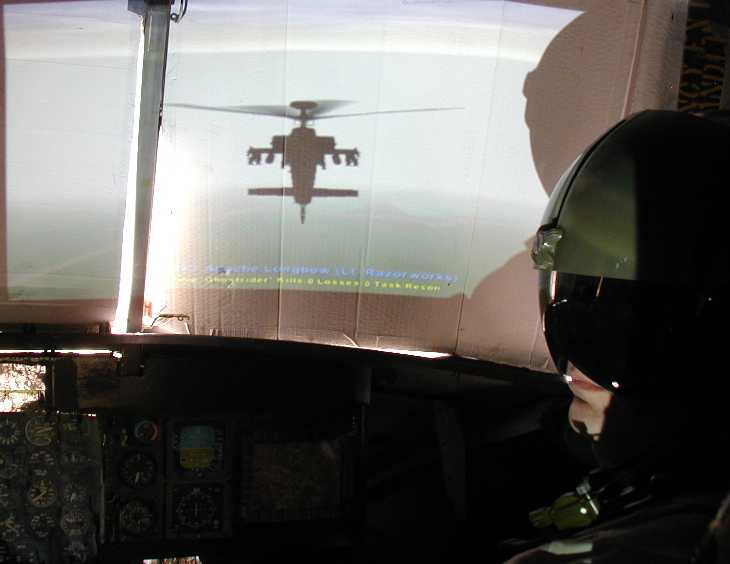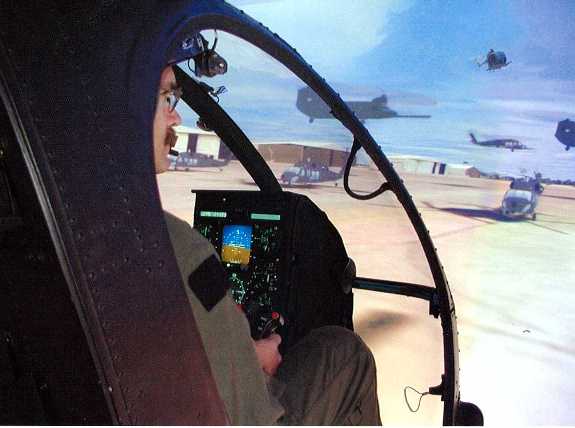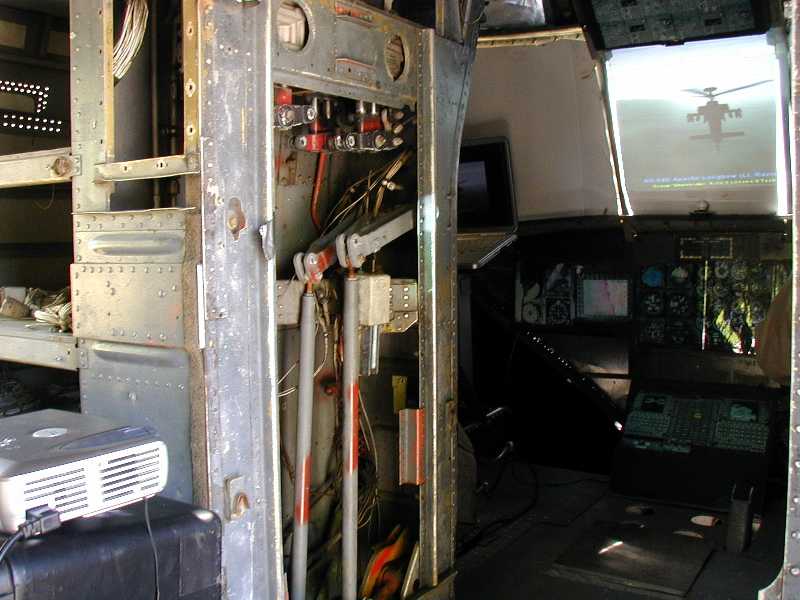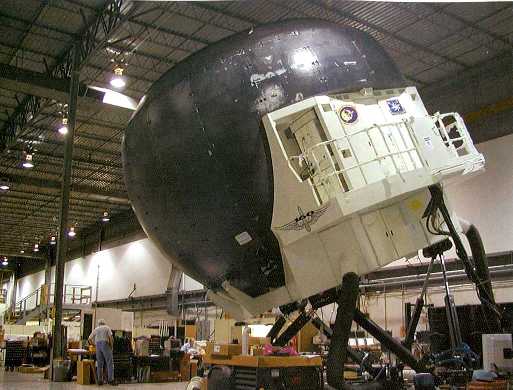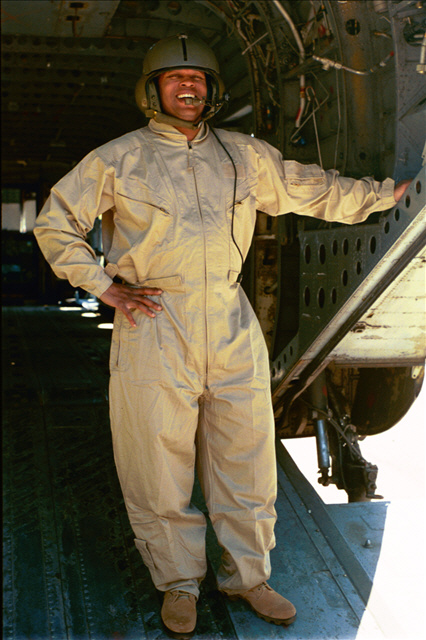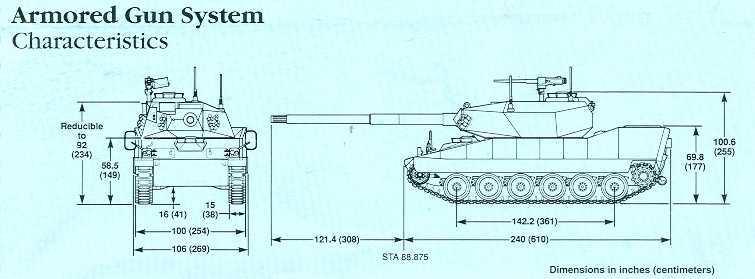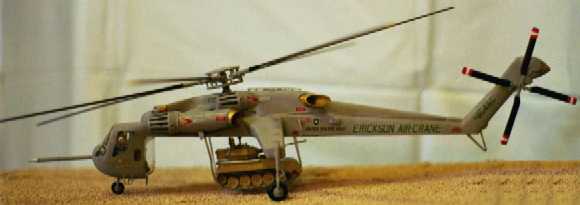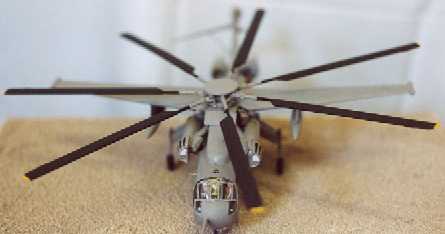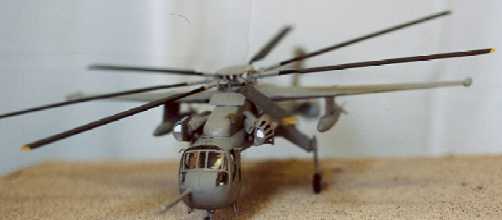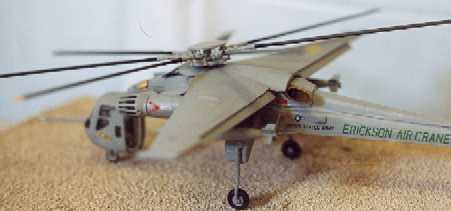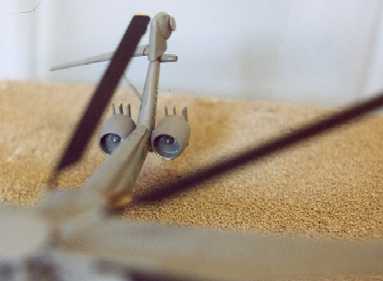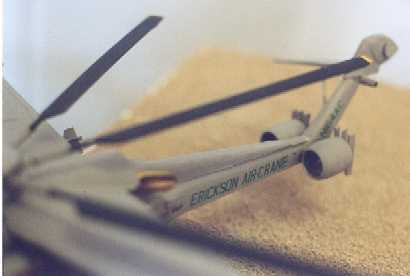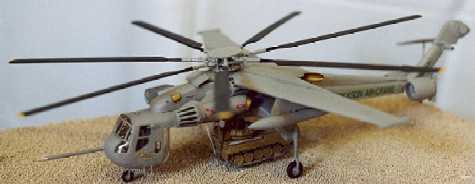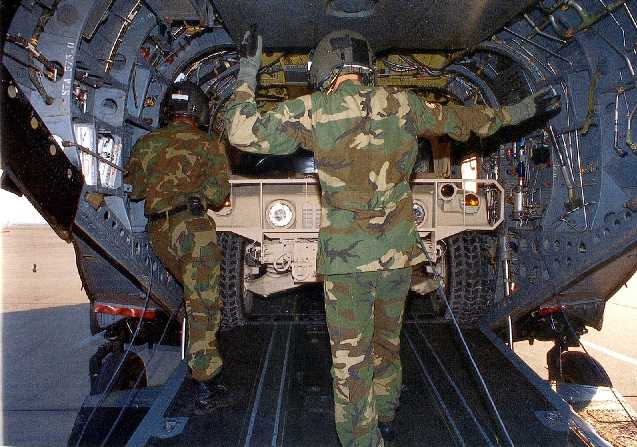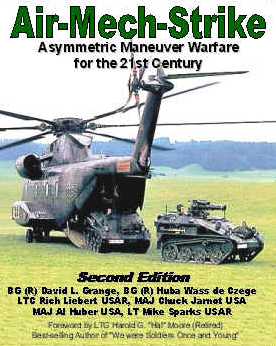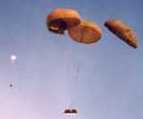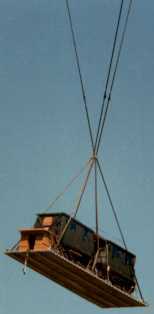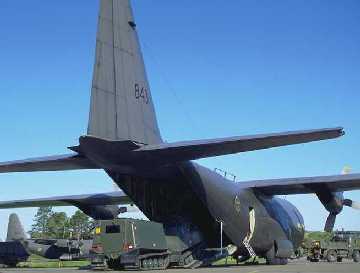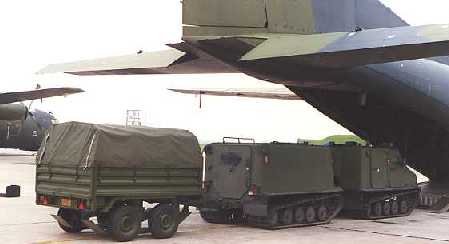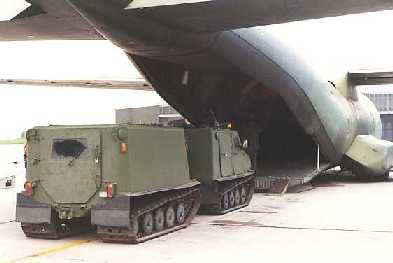 Air-Mech-Strike Study Group
Air-Mech-Strike Study Group
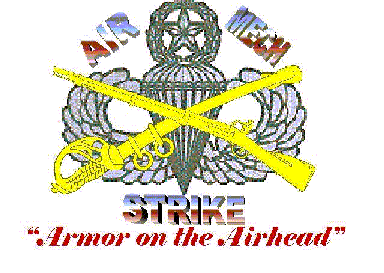
AIRBORNE!
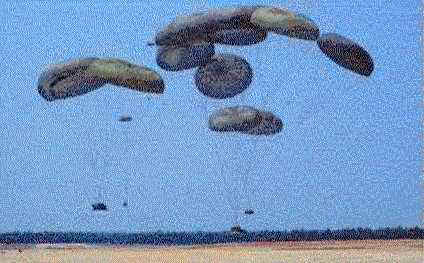
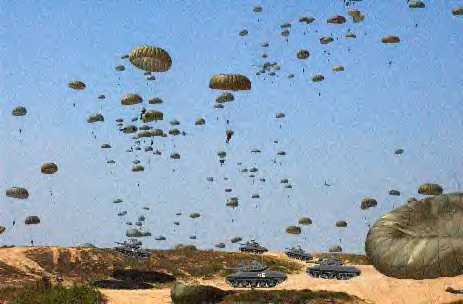
How to fully transform the U.S. Army into a "leap ahead" 3-Dimensional aircraft-delivered, shielded, "stealthy" Armor/Infantry-led combined-arms decisive strategic operational maneuver force to work in concert with heavier M1/M2 "2D" forces.
AIR ASSAULT!
WITH LIGHT TRACKED AFVs = DECISIVE MANEUVER
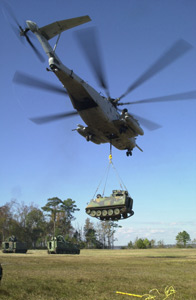
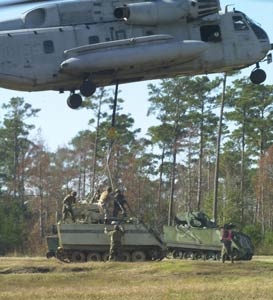

 Air-Mech-Strike Study Group Confronts U.S. Army on Past, Current and Future Force Structure & Operations!
Air-Mech-Strike Study Group Confronts U.S. Army on Past, Current and Future Force Structure & Operations!
http://usacac.leavenworth.army.mil/CAC/milreview/English/MarApr08/indexengmarapr08.asp
http://usacac.leavenworth.army.mil/CAC/milreview/English/MarApr08/BookReviewsMarApr08.pdf
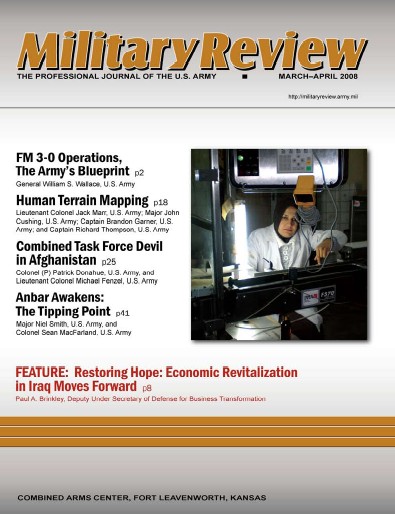
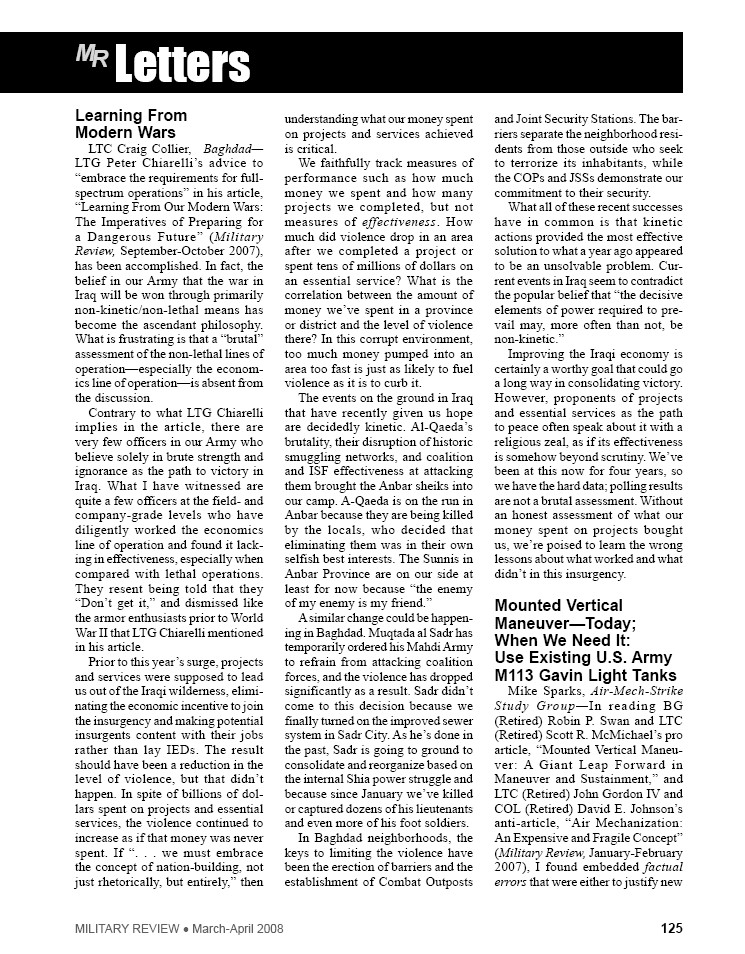
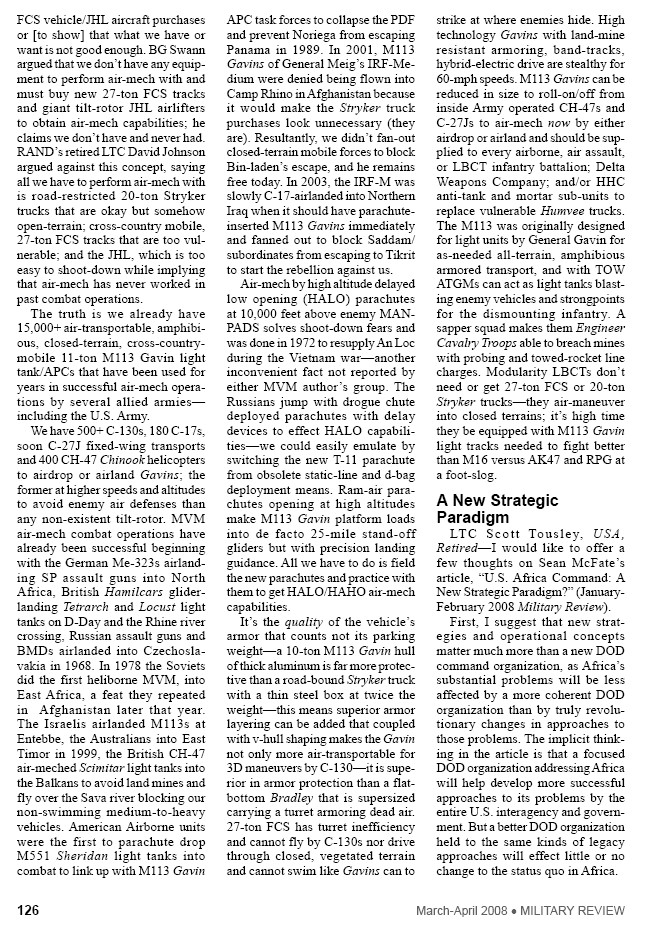
Plain Text
Mounted Vertical Maneuver Today; When We Need It: Use Existing U.S. Army M113 Gavin Light Tanks
Mike Sparks, Air-Mech-Strike Study Group
In reading BG (Retired) Robin P. Swan and LTC (Retired) Scott R. McMichael's pro article, "Mounted Vertical Maneuver: A Giant Leap Forward in Maneuver and Sustainment,"¨ and LTC (Retired) John Gordon IV and COL (Retired) David E. Johnson's anti-article, "Air Mechanization: An Expensive and Fragile Concept"; (Military Review, January-February 2007), I found embedded factual errors that were either to justify new
Page 126 March-April 2008 Military Review
FCS vehicle/JHL aircraft purchases or [to show] that what we have or want is not good enough. BG Swann argued that we don't have any equipment to perform air-mech with and must buy new 27-ton FCS tracks and giant tilt-rotor JHL airlifters to obtain air-mech capabilities; he claims we don't have and never had. RAND's retired LTC David Johnson argued against this concept, saying all we have to perform air-mech with is road-restricted 20-ton Stryker trucks that are okay but somehow open-terrain; cross-country mobile, 27-ton FCS tracks that are too vulnerable; and the JHL, which is too easy to shoot-down while implying that air-mech has never worked in past combat operations.
The truth is we already have 15,000+ air-transportable, amphibious, closed-terrain, cross-country-mobile 11-ton M113 Gavin light tank/APCs that have been used for years in successful air-mech operations by several allied armies; including the U.S. Army.
We have 500+ C-130s, 180 C-17s, soon C-27J fixed-wing transports and 400 CH-47 Chinook helicopters to airdrop or airland Gavins; the former at higher speeds and altitudes to avoid enemy air defenses than any non-existent tilt-rotor. MVM air-mech combat operations have already been successful beginning with the German Me-323s airlanding SP assault guns into North Africa, British Hamilcars glider-landing Tetrarch and Locust light tanks on D-Day and the Rhine river crossing, Russian assault guns and BMDs airlanded into Czechoslavakia in 1968. In 1978 the Soviets did the first heliborne MVM, into East Africa, a feat they repeated [with fixed-wing aircraft] in Afghanistan later that year. The Israelis airlanded M113s at Entebbe, the Australians into East Timor in 1999, the British CH-47 air-meched Scimitar light tanks into the Balkans to avoid land mines and fly over the Sava river blocking our non-swimming medium-to-heavy vehicles. American Airborne units were the first to parachute drop M551 Sheridan light tanks into combat to link up with M113 Gavin APC task forces to collapse the PDF and prevent Noriega from escaping Panama in 1989. In 2001, M113 Gavins of General Meig's IRF-Medium were denied being flown into Camp Rhino in Afghanistan because it would make the Stryker truck purchases look unnecessary (they are). Resultantly, we didn't fan-out closed-terrain mobile forces to block Bin-laden's escape, and he remains free today. In 2003, the IRF-M was slowly C-17-airlanded into Northern Iraq when it should have parachute-inserted M113 Gavins immediately and fanned out to block Saddam/subordinates from escaping to Tikrit to start the rebellion against us.
Air-mech by high altitude, delayed low-opening (HALO) parachutes at 10,000 feet above enemy MANPADS solves shoot-down fears and was done in 1972 to resupply An Loc during the Vietnam war¡ another inconvenient fact not reported by either MVM author's group. The Russians jump with drogue chute deployed parachutes with delay devices to effect HALO capabilities; we could easily emulate by switching the new T-11 parachute from obsolete static-line and d-bag deployment means. Ram-air parachutes opening at high altitudes make M113 Gavin platform loads into de facto 25-mile stand-off gliders but with precision landing guidance. All we have to do is field the new parachutes and practice with them to get HALO/HAHO air-mech capabilities.
It's the quality of the vehicle's armor that counts not its parking weight; a 10-ton M113 Gavin hull of thick aluminum is far more protective than a road-bound Stryker truck with a thin steel box at twice the weight; this means superior armor layering can be added that coupled with v-hull shaping makes the Gavin not only more air-transportable for 3D maneuvers by C-130; it is superior in armor protection than a flat-bottom Bradley that is supersized carrying a turret armoring dead air. 27-ton FCS has turret inefficiency and cannot fly by C-130s nor drive through closed, vegetated terrain and cannot swim like Gavins can to strike at where enemies hide. High technology Gavins with land-mine resistant armoring, band-tracks, hybrid-electric drive are stealthy for 60-mph speeds. M113 Gavins can be reduced in size to roll-on/off from inside Army operated CH-47s and C-27Js to air-mech now by either airdrop or airland and should be supplied to every airborne, air assault, or LBCT infantry battalion; Delta Weapons Company; and/or HHC anti-tank and mortar sub-units to replace vulnerable Humvee trucks. The M113 was originally designed for light units by General Gavin for as-needed all-terrain, amphibious armored transport, and with TOW ATGMs can act as light tanks blasting enemy vehicles and strongpoints for the dismounting infantry. A sapper squad makes them Engineer Cavalry Troops able to breach mines with probing and towed-rocket line charges. Modularity LBCTs don't need or get 27-ton FCS or 20-ton Stryker trucks; they air-maneuver into closed terrains; it's high time they be equipped with M113 Gavin light tracks needed to fight better than M16 versus AK47 and RPG at a foot-slog.
BREAKING NEWS!
Plain old "Gavin" M113 is ranked #1 by Top 10 IFV show
 http://uk.youtube.com/watch?v=CdOO1fCAOBE
http://uk.youtube.com/watch?v=CdOO1fCAOBE
AMS-SG now owns a CH-47 Chinook heavy lift helicopter to demonstrate Air-Mech-Strike!, in fact the FIRST and oldest surviving Chinook!
VIDEO: Notice the serial number, orange paint and double rear wheels!
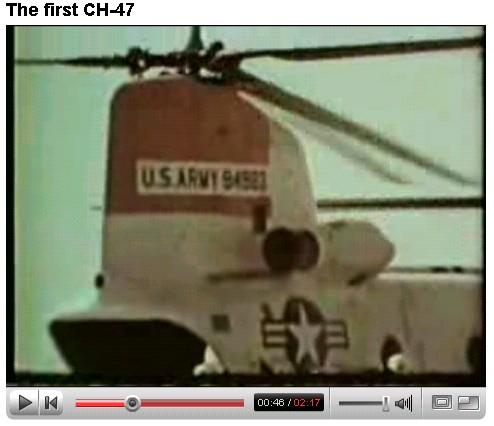
 www.youtube.com/watch?v=fepY4CvrYic
www.youtube.com/watch?v=fepY4CvrYic
Clearly the mighty CH-47 Chinook is going to be "it" for Army V/TOL air-mech capabilities until 2025 or even later...
To clearly demonstrate to any "Doubting Thomases" that light tracked armored fighting vehicles can indeed roll on/off from inside Chinooks, the AMS-SG has obtained a CH-47 Chinook to do static load tests, demonstrations and flight simulations.
MOVING TO AIR-MECH-STRIKE HEADQUARTERS
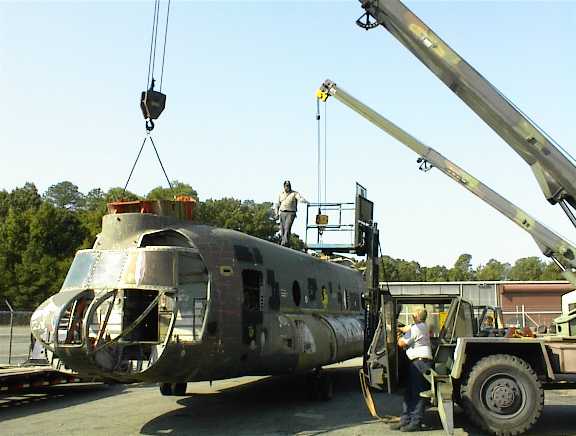
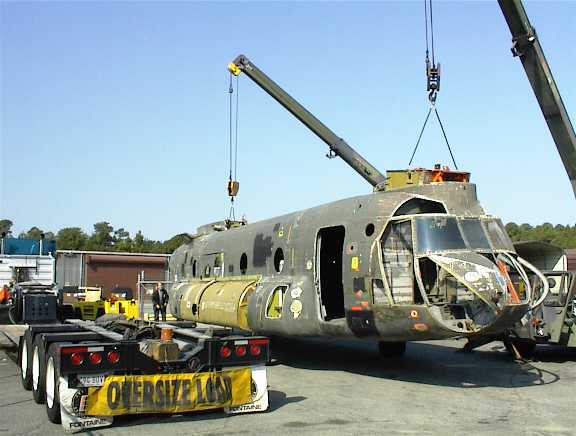
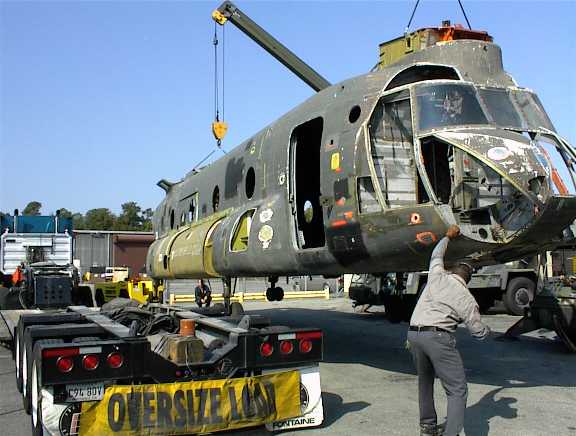
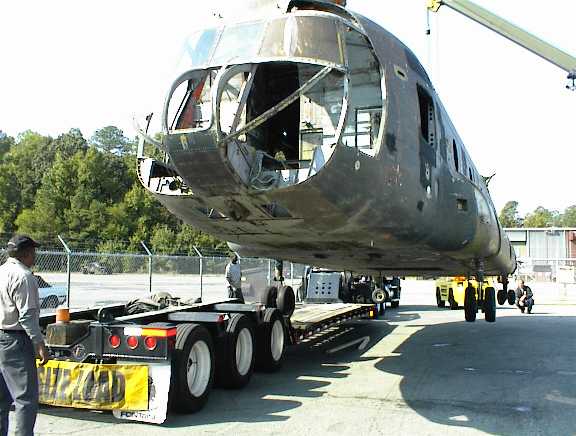
Here are some pictures of our Chinook after it arrived beaten-up after 42 years of Army use and abuse.....thanks to inventor Butch Walker of Amaze-N-Tow USA, the oldest Chinook on earth---the last surviving prototype YCH-47A---was saved from demolition and given new life as a demonstrator of Air-Mech-Strike and AMAZE-N-TOW capabilities to lead the U.S. Army into the 21st Century!
"BEFORE"
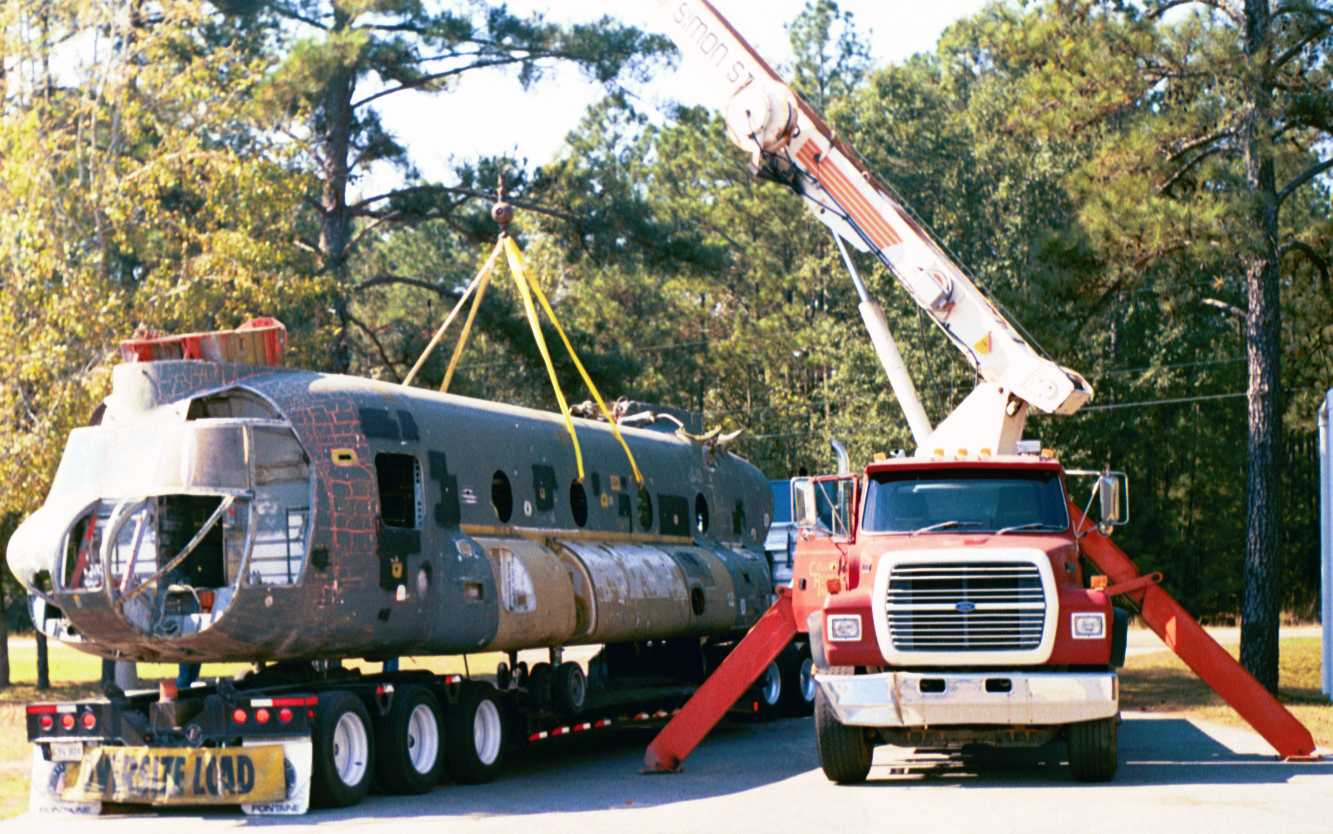
"AFTER"
Here's what our Chinook looked like after 1 week of restoration/painting in tactically-sound GRAY camouflage (get the hint, U.S. Army?) ...
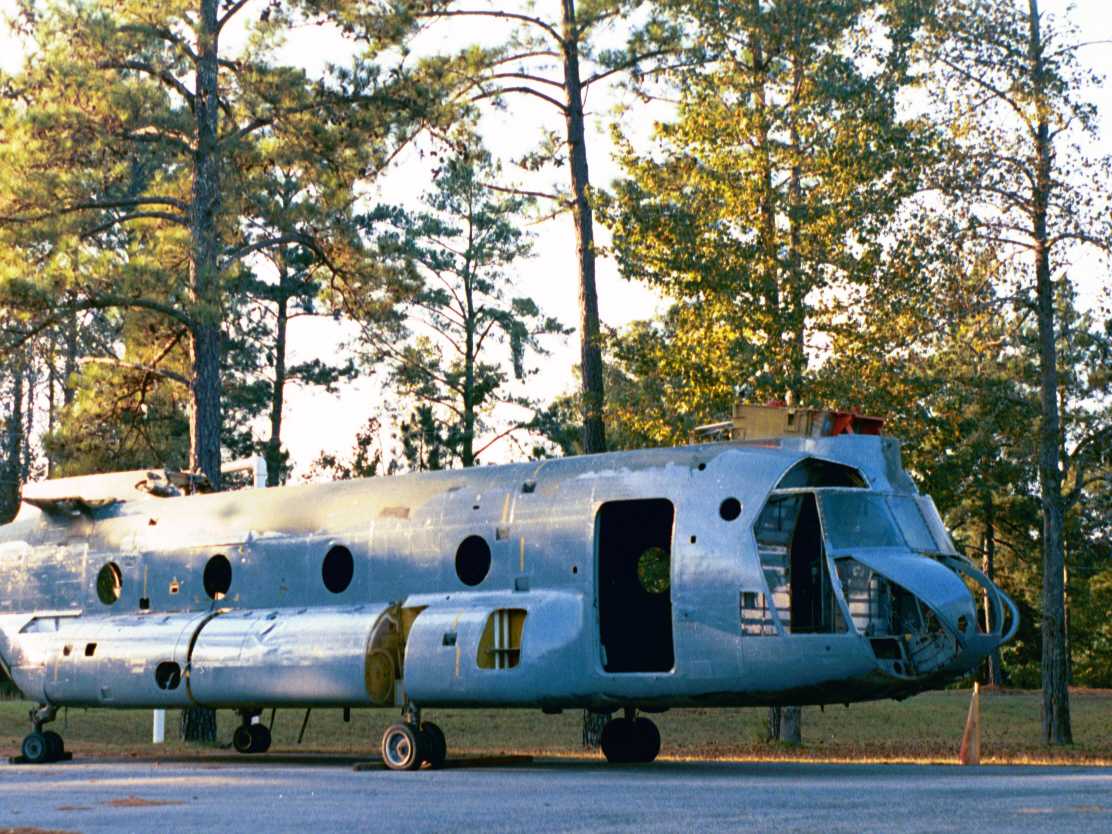
Our Chinook since its an actual helicopter will be far more realistic as a demonstrator than the typical wood mock-ups some NATO armies have to use:
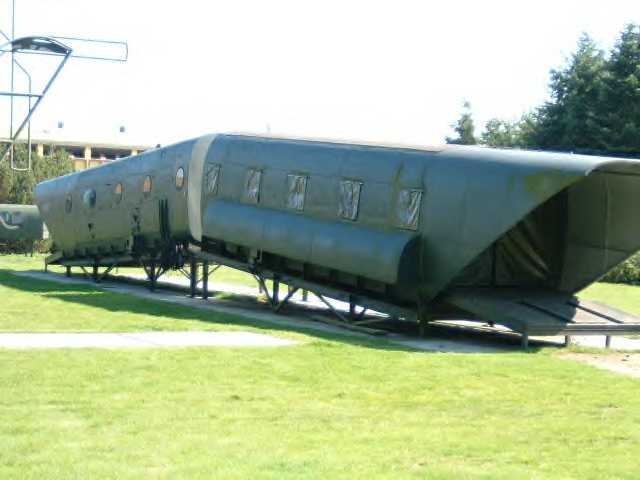
Here's how "The Ghost Ship" looks now...after our first Air-Mech simulation with an ANT-463L-D pallet trailer and 4x4 jeep, "Mr. Shotgun" Brett Walker suggested we add simulated front and rear rotors to add realism but not be so high that we lose highway transportability...
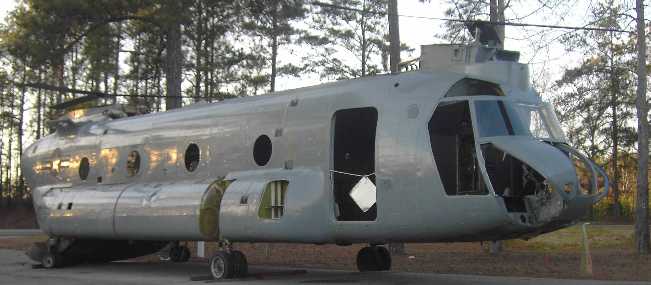

RIGHT SIDE
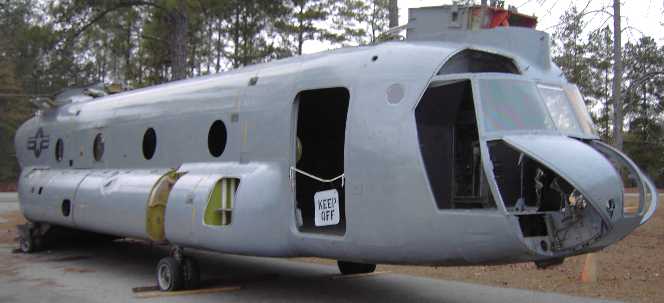

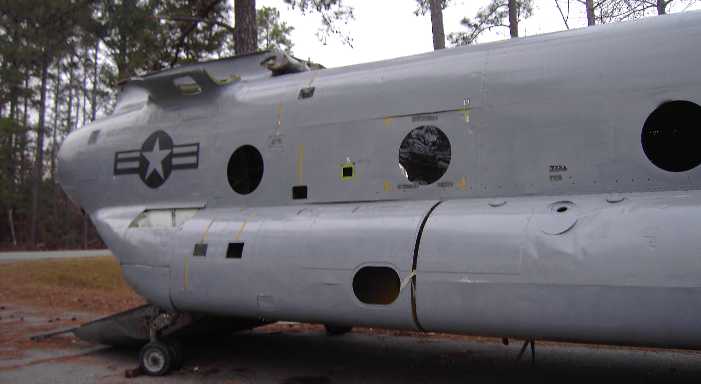
LEFT SIDE
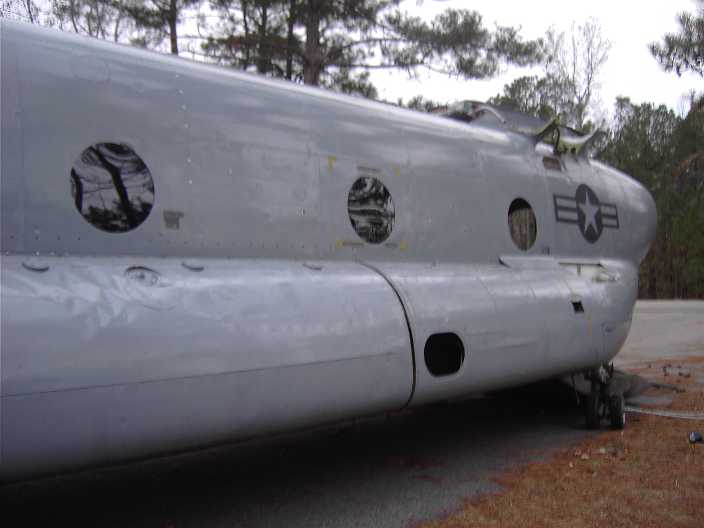
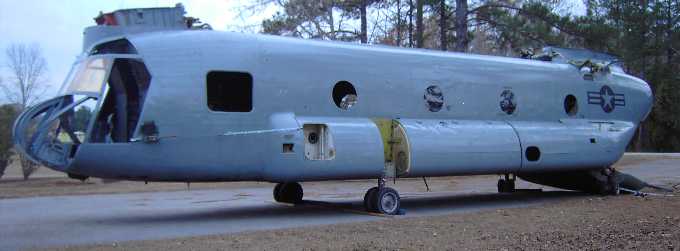
GUNNER'S POSITIONS
The Ghost Ship is now armed with two M60 7.62mm x 51mm NATO medium machine guns....
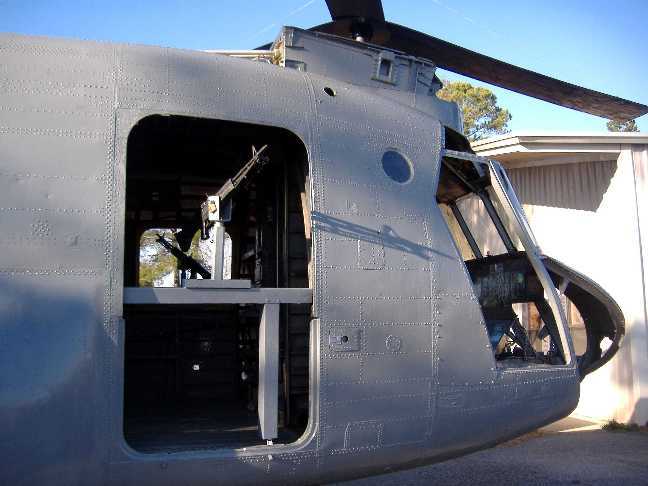
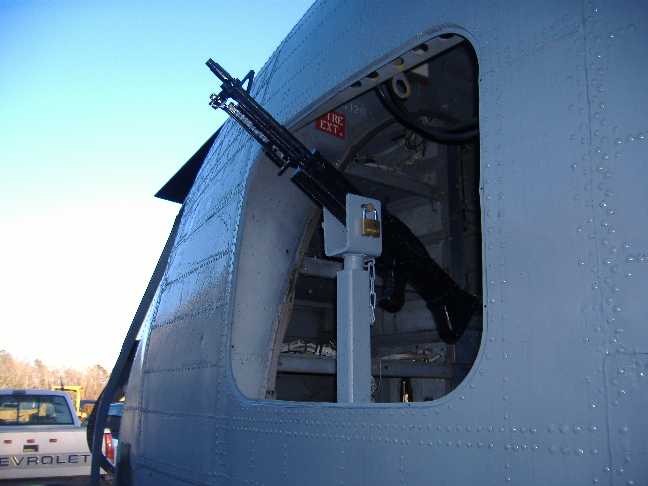
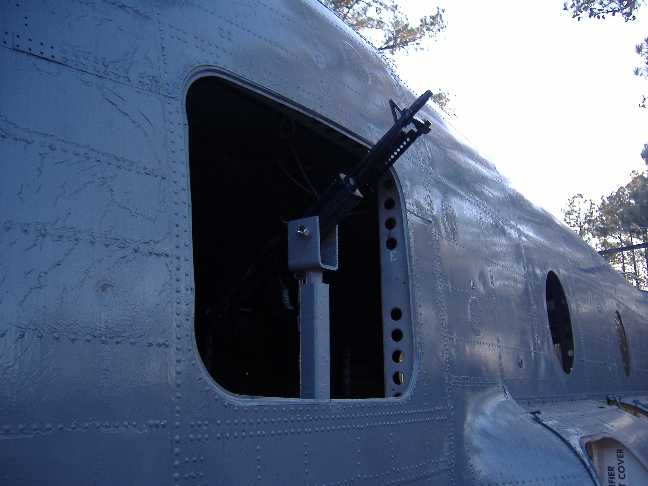
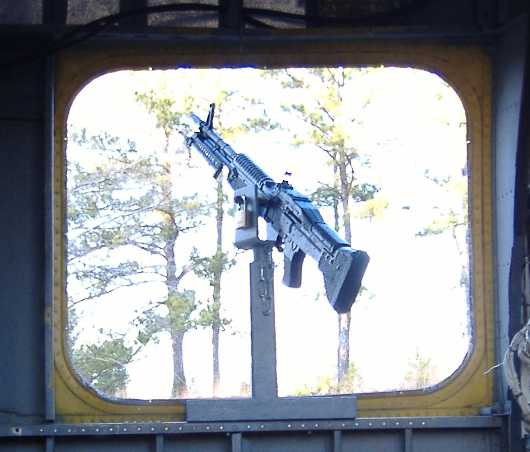
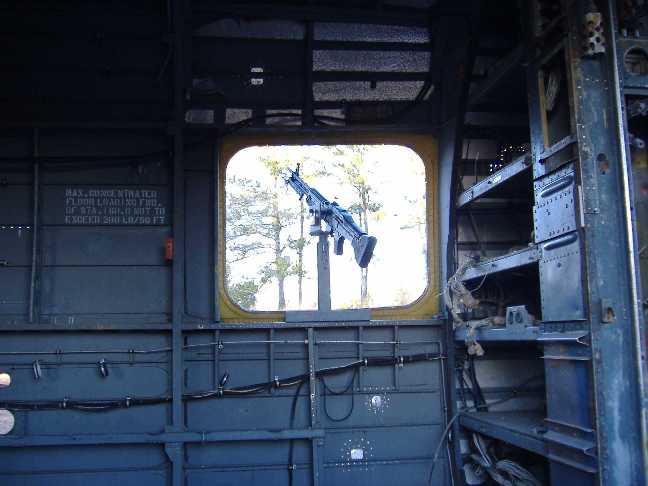
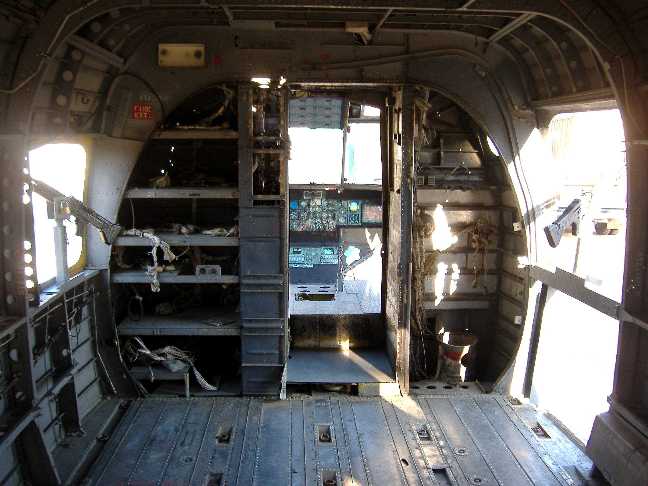
TOP AREA

The front of the "Ghost Ship" Chinook with rotor hub attached
REAR AREA
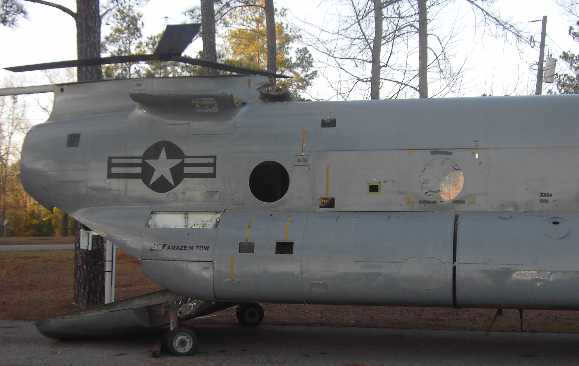
With simulated rear rotor hub attached...

We added an information sign with all-weather compartment to hold brochures and business cards...

COCKPIT AREA
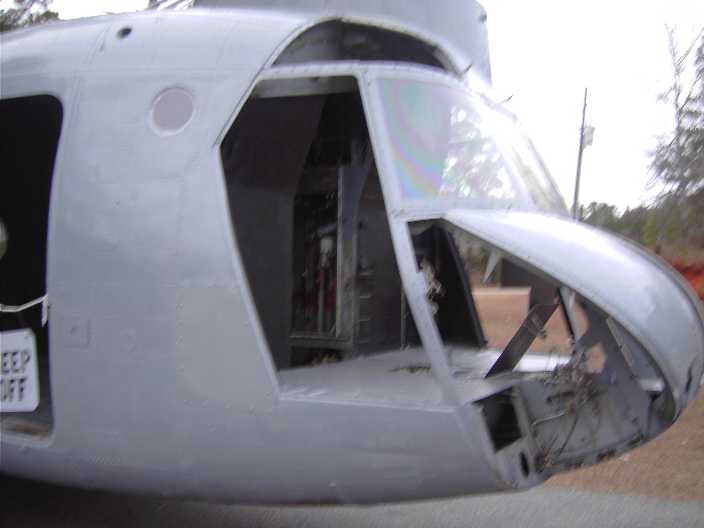
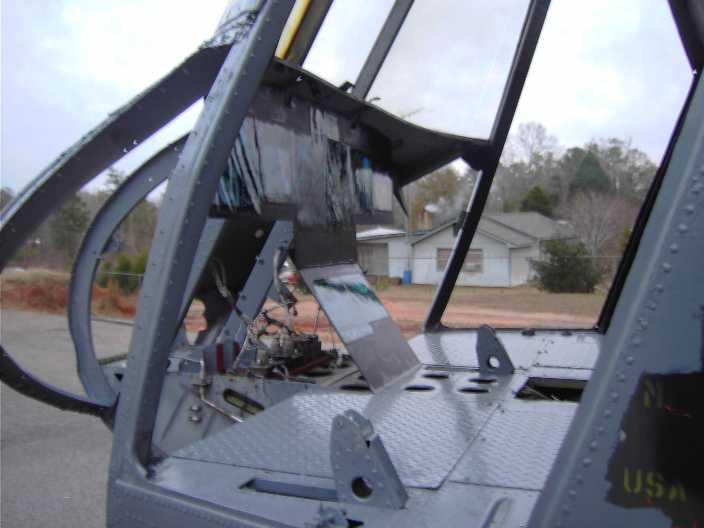
...and with a simulated CH-47F all-glass cockpit display...
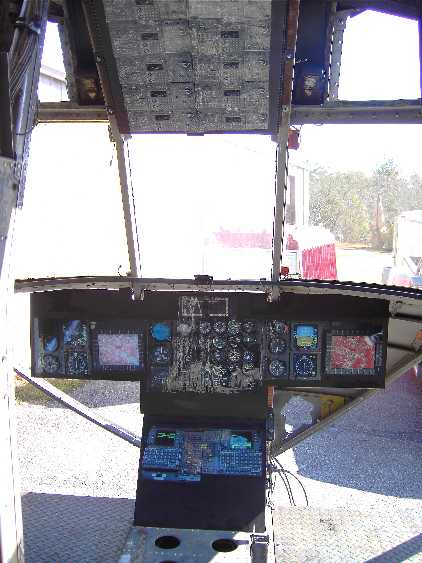
On top, we add a back-up, floating magnetic compass...
Here, we experiment with projecting a flight simulator program onto the covered front windshield of our Chinook...
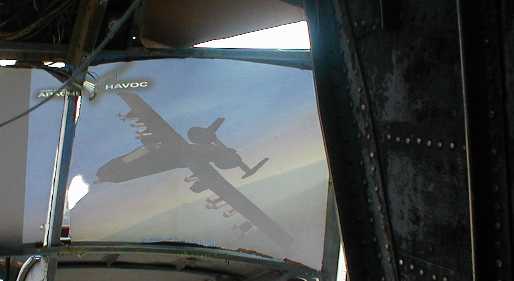
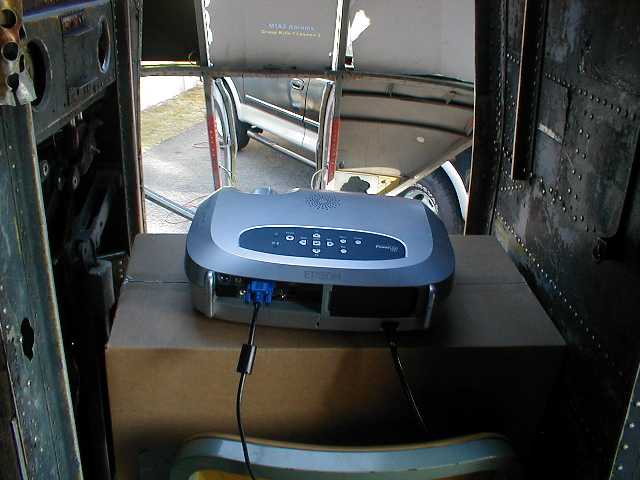
2 x Combat Soldiers + 4x4 Jeep + Amaze-N-Tow Trailer + RHINO pallet with 4K of supplies + CH-47 = 3D air-mechanized, palletized logistics
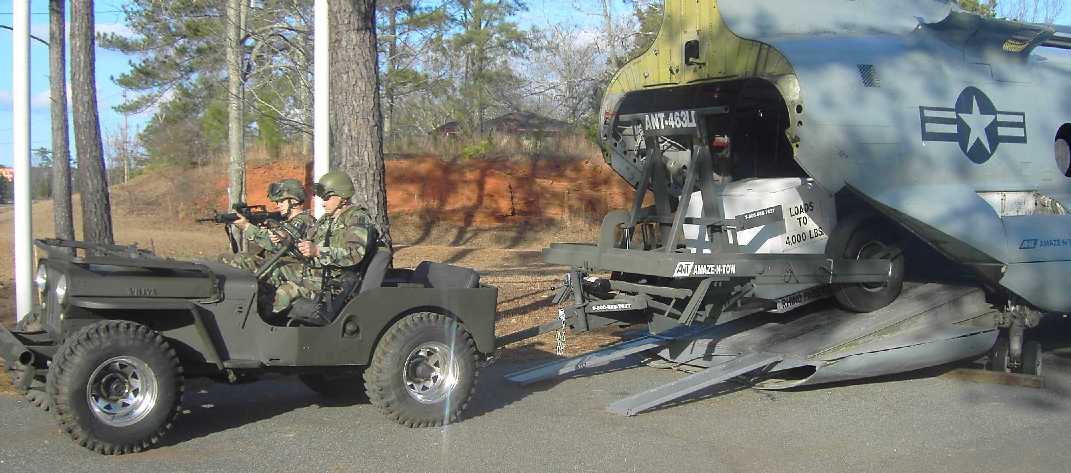
We used a generic, CH-47 internally air-transportable 4x4 jeep as the prime mover for our ANT-in-action pics from our Chinook. This is far better than the anemic M-GATOR golf cart but it is by no means an endorsement of us of ANY unarmored trucks when we need armored tracks---we just don't have a Lynx or Mini-Gavin available right now.
Click on pic for Full-Size version
AMS IN ACTION: ANT-463LD combination trailer & MHE fork-lift rolling off a CH-47 Chinook combat-ready!
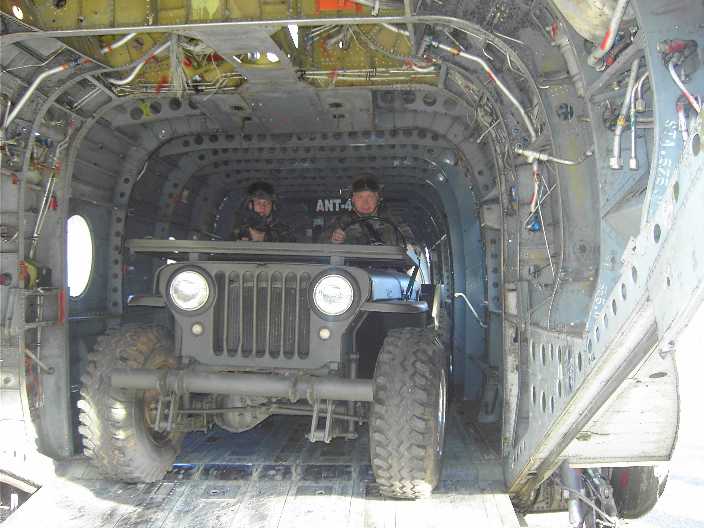
Here is a simple simulation we could create for the Soldiers in back as they ride or walk in from the rear ramp....
Bench seats in back of Chinook (we wouldn't have anyone sit on floor since that's where the light tracked AFV would be)
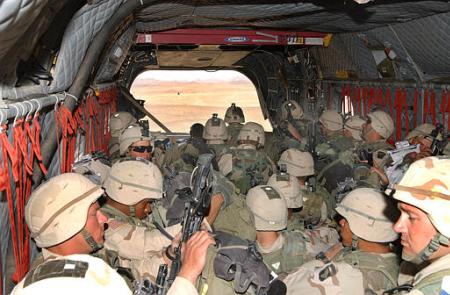
To their front behind the pilot area we'd show an CH-47-in-action video on continuous loop using a wide-screen TV/DVD player combo:
www.combatreform.org/ch47inaction.wmv
Here's an excellent web page by retired Army Aviator Glenn Bloom explaining how the CH-47 flies and is controlled:
And a video clip we made on how the mighty Chinook flies:
Here, the pilot, 1LT Mike Sparks USAR, looks back as the "Apache Havoc" flight simulation is projected onto the white inner cockpit panels. We used Razor Work's Apache Havoc flight simulation because it enables the Chinook to be ARMED with a 30mm autocannon in the nose, which we advocate be done to all CH-47s to improve frontal firepower and protection.
Here's how the $ multi-million-dollar U.S. Army A/MH-6 "Little Bird" flight simulator projects the screen from behind the cockpit framework:
a. Coverings on the fuselage to not let any light in
Here's a view of the motion creating actuators of the very expensive A/MH-6 "Little Bird" flight simulator. Eventually, we will place the entire Ghost Ship on a trailer with hydraulic actuators to increase flight realism, provide highway mobility while retaining ability to demonstrate static loads...the Army's CH-47D Chinook simulator [TM 55-6930-212-10] only uses a front nose section on hydraulics, too.
On April 1, 2006, Butch Walker Enterprises, makers of the Amaze-N-Tow forklift pallet trailer and the Air-Mech-Strike Study Group (AMS-SG) conducted Operation: GHOST SHIP to demonstrate to a contingent of Morningside Baptist Church members the capabilities of the U.S. Army's CH-47 Chinook heavy lift helicopter now in combat in Iraq, Afghanistan and around the world, and to salute our troops that use this amazing aircraft.
To the left of Miss Jackson is her co-pilot and her boyfriend, Zach Walker....who remove their helmets on cue...to his left are the two crew chiefs/door gunners...Austin and Brett Walker. Brett Walker set up the sound system for the event....
Click here to hear the Might CH-47 Chinook Fly-By
...as Miss Jackson and Zach Walker man their pilot (right) and co-pilot (left) seats to fire up the flight simulator for take-off!
AMS for Stability Operations: CNN and General David Grange blow-the-whistle on the HMMWV and Stryker truck fiasco in Iraq that is killing/maiming our troops
Watch General Grange every Thursday Night at 6PM Eastern Standard Time on CNN's Lou Dobbs Tonight TV show!
Retired General Slams Army For Failure To Release Armored Gun System
BY NATHAN HODGE, DEFENSE TODAY August 27, 2004
In an interview with Defense Today, retired Brig. Gen. David Grange said the Army needs to deliver the M8 Armored Gun System (AGS) to the 82nd Airborne, which wants an air-droppable light tank for "forced entry" operations such as airfield seizure and other missions."If they're not going to do this for the 82nd, it's a big mistake," Grange said. "The 82nd needs it." The 82nd Airborne, which is likely to rotate back to Iraq next year, wants the extra combat punch a lightweight armored gun would provide, and earlier this year, the division asked the Army to approve an operational requirement for AGS, which is made by United Defense, L.P. (UDLP) Equipped with an automatically loaded 105-mm cannon, the tracked AGS is designed for low-velocity airdrop, and can roll on and off of a C-130 Hercules tactical airlifter.
AGS was cancelled in 1997, but four complete vehicles were delivered. Delivery of those vehicles to the 82nd Airborne has remained on hold while the Army studies the feasibility of airdropping the Stryker Mobile Gun System (MGS), a wheeled vehicle made by UDLP rival General Dynamics. Grange, who now is executive vice president and chief operating officer of the Robert R. McCormick Tribune Foundation, a non-profit organization, said, "Airborne units and air-assault units need some type of a light tank, some type of a gun system. We should have had the Armored Gun System. We should have done that, [but] we never did-that program was cancelled."
During Operation Iraqi Freedom, elements of the 3rd Infantry Division, a heavy mechanized unit, captured Baghdad International Airport. According to Grange, airborne and air assault (helicopter-borne) units need extra firepower and protection for such critical operations. "I've been in airborne, air assault and Ranger units most of my life, and once you go in and secure an airhead, you're just keeping your fingers crossed as you're waiting for an armored link-up," said Grange.
As part of its effort to transition to a more rapidly deployable future force, the Army is investing heavily in the Stryker family of wheeled armored vehicles. Grange, who stressed that he has "zero relations" with defense contractors, suggested that those funds might be better spent upgrading light armored vehicles like the tracked M113, which has been in service since the 1960s.
"They're air-droppable, there's a version you can put a gun system on as well as a troop carrier, and we could have taken a lot of the light units and given them some mobility and protection," he said. "Not whole divisions-like the whole 10th Mountain and the 101st Airborne-but enough of them to give them some maneuverability and some punch."
The Stryker, Grange added, "I personally think was a waste of money because we had already so much stuff in the inventory we could have modified."
Stryker has been touted as a major success by Army leadership, which points to the deployment of the first Stryker Brigade Combat Team to northern Iraq as evidence of their capability. Proponents of the Stryker say the vehicles, which run fast and quiet, offer superb situational awareness and stealth, traits especially critical in urban combat. [Editor: Strykers and other wheeled trucks are road bound and easily ambushed. If you want stealth and 60 mph speeds in addition to cross-country mobility, use band tracks on tracked tanks.]
However, Stryker has come in for criticism recently, particularly after a Government Accountability Office report suggested that the vehicles were too heavy for effective transport by C-130 aircraft. Sen. John Warner (R-Va.), the chairman of the powerful Senate Armed Services Committee, has pledged
to hold a hearing on the issue.
The Stryker MGS, part of the Stryker family of wheeled armored vehicles, has not been airdrop certified, although the service recently airdrop tested a surrogate vehicle that was weighted down to simulate the MGS. The surrogate, a Stryker Engineer Support Vehicle, was dropped from a C-17 Globemaster III, a larger, more powerful airlifter than the C-130.
Grange suggested that Stryker variants are not practical for airdrop and rapid deployment missions if they can only be delivered by C-17. "The [C-]130 is intra-theater," he said. "C-17s are great, if you have enough of them. But as you know, there's a finite number of them. And they are more inter-theater instead of intratheater."
One member of Congress, Rep. Robin Hayes (R-N.C.) been lobbying the Army for the delivery of AGS to the 82nd Airborne, which is based in his home district. "He's trying to do everything he can for the 82nd Airborne in a timely manner," said a press aide to Hayes. "They'll probably be going back to Iraq. And he wants to make sure that they have the systems they need."
Master Sgt. Pam Smith, a spokeswoman for the 82nd Airborne, said the division still has a need for the AGS. "We do have [a requirement] but we have not been told a date that we're supposed to receive it," she said. "We'd love to have that system." The four AGS vehicles currently are warehoused in Pennsylvania. A UDLP source said a full complement of AGS parts and a "combat spare" also are available.
DOBBS: The U.S. Army is sending hundreds of armored Humvees to Iraq to protect troops from attacks by insurgents. But tonight, there are new fears that the armor on those reinforced Humvees is still inadequate to provide protection
for our Soldiers.
Senior Pentagon correspondent Jamie McIntyre has the report.
(BEGIN VIDEOTAPE)
JAMIE MCINTYRE, CNN MILITARY AFFAIRS CORRESPONDENT (voice-over): With U.S. troops still dying in deadly roadside attacks, the Pentagon is spending $400 million racing to replace the Army's basic thin- skinned Humvees with reinforced up-armored versions. But the better armor is still not providing adequate protection, writes a four-star general in a memo obtained by CNN.
"Commanders in the field are reporting to me that the up-armored Humvee is not providing the solution the Army hoped to achieve," writes General Larry Ellis, commanding general of the U.S. Army Forces Command, in a March 30 memo to the Army chief of staff.
Critics say, even with better armor, the Humvee's shoulder-level doors make it too easy to lob a grenade inside. Its four rubber tires burn too readily. At two tons, it is light enough to be overturned by a mob.
General Ellis wants to shift Army funds to build twice as many of the Army's newest combat vehicle, the Stryker, which has eight wheels, weighs 19 tons and when equipped with a special cage can withstand an RPG attack. "It is imperative that the Army accelerate the production of Stryker vehicles to support current operations," Ellis says.
But critics say the Army is overlooking an even cheaper, faster solution than the $3.3 million Stryker, the thousands of Vietnam-era M-113 Gavin personnel carriers the Army has in storage which can be upgraded with new armor for less than $100,000 apiece. Neither the Stryker nor the Gavin offer 100 percent protection. Some U.S. troops have been killed in the top-of-the-line M1-A1 Abrams tank. But the more armor, the better chance of survival.
(END VIDEOTAPE)
MCINTYRE: In his memo, General Ellis pleads for quick action, lamenting that, while the U.S. is at war, some in the Army seem to be in a peacetime posture. He writes: "If our actions impede the ability to train, equip or organize our Soldiers for combat, then we fail the soldier and the nation" -- Lou.
DOBBS: And General Ellis' remarks and note come a year after that war began in Iraq. What is -- what is taking so long for the command structure of the U.S. Army, the U.S. military, to provide the equipment that our men and women need in Iraq?
MCINTYRE: Well, I think the short answer is that they misestimated the threat that they would be facing at this point. They have been trying to adapt as time went on. They have been rushing the armored Humvees into theater, but now they are realizing they don't provide enough protection either. What General Ellis wants to do is quick action to get the authority to shift some funds around and ramp up production of the Strykers, so you can get more of those into
the combat theater.
But, as I said, some of the critics say they should look to some of the vehicles they already have in storage. They think they can get them there even faster. I think General Ellis is reflecting some of the frustration that the Army feels it can't act fast enough to get enough protection to its troops.
DOBBS: General Ellis, a four-star general. Who put him in charge of looking into this? What is, if you will, his portfolio?
MCINTYRE: Well, he is commanding general of the U.S. Army Forces Command. So his main job is training and equipping. And, of course, he's writing this memo to the Army chief of staff, who is the main person in charge of training and equipping the Army, General Schoomaker. So the right people are focused on the problem. The question is how soon will they have the solution?
DOBBS: Well, for the sake of our men and women in uniform in Iraq, let's hope very quickly.
Jamie, thank you very much -- Jamie McIntyre, our senior Pentagon
correspondent.
The military believes about 2,000 insurgents and foreign fighters are now holed up in Fallujah. The marines are hoping those insurgents will surrender their heavy weapons. But the troops are preparing to assault the city if the insurgents do not disarm.
I'm joined now by our CNN military analyst, General David Grange.
General, good to have you with us.
RETIRED BRIG. GEN. DAVID GRANGE, CNN MILITARY ANALYST: Thank you, Lou.
DOBBS: I have to ask you, first, what is your reaction to Jamie McIntyre's report and the statement by General Ellis that, point blank, our command structure seems in some respects to be in a peacetime posture, while our men and women in uniform are in war in Iraq?
GRANGE: Well, Lou, I know the leadership of the Army and I don't think they are in a peacetime mind-set.
However, I do agree totally that armored vehicles need to be sent to Iraq immediately to solve some of these problems with the Humvees. First of all, the -- any armored vehicle can take a certain kind of hit and be destroyed or incapacitated. However, Humvees are not the answer. It's too light-skinned, even the up-armored, for some of these actions, whether it be resupply or combat missions that the troops have.
The interim solution is to take the inventory that was just shown on the broadcast of the old 113s, armor those, and use those immediately in Iraq to protect the troops.
DOBBS: General Grange, you are talking about what was popularly known as the APC, the armored personnel carrier, thousands of them, Jamie McIntyre reported, in storage and ready to be rearmored if necessary. Under current armor, could the APC still be serviceable, that is protect our troops in Iraq?
GRANGE: There's no 100 percent protection, but it would provide much more protection than a Humvee and they are readily available and can be up-armored quickly. The Stryker is going to take too long to produce that many. So I'd get something out there now during this very intense period in Iraq.
DOBBS: General, the question has to be asked, this is the 21st century. The U.S. military is supposed to be the most advanced and focused and technologically advantaged force in the world. Yet what appears to be at least at first blush when we have men and women without sufficient armored vests, when they don't have armored vehicles, even the old APC, it does raise a question, what in the world has gone on with our command structure? Because we've got men and women dying there.
GRANGE: Well, that's true. And it's -- when you are a commander on the ground, it's very frustrating when you don't get the things that you think, at least you think that you need. We relearn lessons from every war.
(CROSSTALK)
DOBBS: General, excuse me. Let me be clear in my question, if I was not. I'm not worried about the commander at the company level or the battalion level. I'm talking about the command structure of the United States military, the Pentagon.
GRANGE: Yes, the upgraded vehicles need to be sent to Iraq immediately. They should have already been there. The Humvee is not the answer. I think there was the -- the assessment that the transition after the maneuver warfare to the stability and support operations were not be as violent as it's become was off-base a little bit. But it can be fixed now. Let's do something now and at
least provide the needed protection and maneuverability that can be afforded now with the assets that we have. It's still not too late to do something.
DOBBS: Twenty-two -- 2,500 Soldiers, rather, now around Najaf, the U.S. marines surrounding Fallujah. Negotiations continue, which are being honored in the breech here. What is your -- your assessment as to the risk and the necessity of entering in particular Fallujah?
GRANGE: Fallujah, I have a problem with the cease-fire. There are some people that generally want it in Fallujah, some of the civilian leaders. But the hard-core insurgents are going to continue when they want to attack coalition forces, unless they are disarmed.
The city has to be continue to be isolated. You have to separate as many of the civilians from the insurgents as possible. You have to control key terrain and the services provided to the city itself. And you have to take down enemy strongholds as you find them. It's the only way to ensure lasting peace in this particular city. I believe there's a lot of them, insurgents, in there and that's one reason they want to negotiate.
DOBBS: Do you think we should not be negotiating? Mark Kimmitt, General Mark Kimmitt, said capture or kill Muqtada al-Sadr. And the response so far has been, negotiate.
GRANGE: Well, in Fallujah, that out to be taken care of right now. I think there's some time for Sadr. Even though he's maintaining weapons, he's building up his supplies for a fight, I think that that can be worked out, I really do, with some senior Shiite clerics. But, in Fallujah, that's the immediate problem. That has to be taken care of. I think it's OK to have a cease-fire to give it a chance.
The coalition should give it a chance. But I would not test it too much with those marines. In other words, if it looks like it's not working, then be on with it and get on with it and take care of the insurgents in that town once and for all.
DOBBS: General David Grange on point, thank you.
AMS for 3D Maneuver Warfare: Army "fiddles" with mythical FCS and mythical heavy lift helicopters while our Soldiers burn in Iraq: Air-Mech-Strike 3D maneuver can and needs to be done today using existing equipment
Stop trying to fit 20 tons of FCS to into 15 ton helicopters...If you can't raise the Bridge.....
Maybe you use light tracked tanks under 12 tons that fit inside CH-47F/CH-53Xs instead of the 20-30 ton Stryker/FCS cash cows?
A 11-ton M113A4 Gavin can be made roadside bomb and RPG resistant with a C4ISR network-centric warfare package, hybrid-electric drive, band tracks etc. for under $500,000. It can even be narrowed to fit inside a CH-47F/CH-53X. Beats wheeled FCS trucks at $10 million each in 2012, doesn't it?
Erickson AirCrane of Oregon could mate the CH-53e's powerful 3 engines and 7 bladed rotors to their S-64 SkyCranes to create a 20-ton AMS heavy lift helicopter. Piasecki can make the CH-47F/CH-53X fly 200 mph for 2,000 faster with their ring-tail compound helicopter technology to effect the "vertical maneuver" we desire. See photos below. Do we want to just TALK about vertical maneuver or DO IT?
We call this "Air-Mech-Strike" and its all in our book. Maybe more Generals should read it?
www.defensedaily.com/cgi/rw/show_mag.cgi?pub=rw&mon=0304&file=0304vertical.htm
BREAKING M113 GAVIN NEWS!!
http://portal.telegraph.co.uk/news/main.jhtml?xml=/news/2004/04/28/wirq128.xml
By David Rennie in Washington
Armoured cars being sent to Iraq are not up to the job, according to a senior United States army general, prompting calls for Pentagon chiefs to swallow their pride and reactivate thousands of mothballed Vietnam-era armoured personnel carriers.
With improvised bombs, rifle fire and rocket-propelled grenades taking an ever deadlier toll on coalition forces, the Pentagon is spending £225 million to replace thin-skinned versions of the Humvee, the US military's ubiquitous jeep-like transport, with an "up-armoured" model, as fast as they can be churned off the production line.
Humvees are proving easy prey on the streets of Iraq
Commanders have shuddered as troops attached home-made armour plating and even sandbags to ordinary Humvees, whose thin skin, canvas doors and shoulder height windows have made them highly vulnerable to attack.
The new, armour-plated Humvees have been touted by Pentagon chiefs as the best solution to complaints from the field about the standard version of the vehicle.
But Gen Larry Ellis, the commanding general of US army forces, told his superiors that even the armoured Humvee is proving ineffective.
In a memo leaked to CNN television, he wrote: "Commanders in the field are reporting to me that the up-armoured Humvee is not providing the solution the army hoped to achieve."
Reports from the field say that even with armour plating, the Humvee's rubber tyres can be burnt out by a Molotov cocktail, while at two tons, it is light enough to be turned over by a mob.
Gen Ellis said it was "imperative" that the Pentagon instead accelerate production of the newest armoured personnel carrier, the Stryker, which weighs 19 tons and moves at high speed on eight rubber tyres.
But the Stryker has many influential critics who say it is too big to be flown easily on the military's C-130 transport aircraft, and too cumbersome to manoeuvre in narrow streets. Instead, they want the Pentagon to turn back the clock and re-deploy thousands of Vietnam-era M-113 "Gavin" armoured personnel carriers, which are still used by support and engineering units, and are held in huge numbers by reserve units.
Gary Motsek, the deputy director of support operations for U.S. Army materiel command, said: "I have roughly 700 113-series vehicles sitting pre-positioned in Kuwait, though some are in need of repairs. I have them available right now, if they want them."
New heavy-lift helicopters could give the U.S. military unprecedented rapid-deployment capability, but first the Pentagon must attack budgetary problems and inter-service rivalries.
By John R. Guardiano
Army generals dont always speak well about the marine corps. The two services have long enjoyed a healthy, and sometimes not-so-healthy, rivalry. The competition has intensified now that the marines are returning to Iraq to replace Army units.
So it was newsworthy when, three months ago, the Army's Chief of Staff, Gen. Peter J. Schoomaker, went out of his way to praise the marines procurement of the V-22 Osprey.
The reality is that that kind of capability allows you to move at C-130 speeds and C-130 distances, Schoomaker said. Its huge in terms of what it means for battlefield mobility and agility. And I think the marine corps, when it gets the V-22, is going to find itself able to operate further out over the horizon.
This is something that the Army is going to get informed about, Schoomaker added. Part of what were looking at is transformation of Army aviation, and were going to have to look at those kinds of speeds and distances.
Schoomaker, a former head of the Special Operations Command, was brought out of retirement last August by Defense Secretary Donald Rumsfeld to shake up an Army many observers think has become too bureaucratized and inflexible.
Its not that the Army intends to procure the V-22. Schoomaker clearly stated the service will not. There is nobody right now thats thinking about buying a V-22 for the Army, he said.
However, the capability that the Osprey brings to the battlefield twice the speed, three times the payload, and six times the range of a conventional helicopter, with the ability to self-deploy clearly does interest Schoomaker. Such capability could address the Army's increasingly stringent heavy-lift requirements.
I want to see what's beyond the V-22, he said. There's a dimension beyond that. Its like V-22 capability with a CH-47-size box or a C-130-size box the advanced tactical transport tilt-rotor.
Schoomaker was referring to Bell Helicopter Textron's proposed quad tilt-rotor, one of many ideas now being floated to address the Army's need for more capable heavy-lift, intra-theater logistical supply aircraft.
All of the services require enhanced heavy-lift capability. However, the requirement is most pressing for the Army and Marine Corps, the two services tasked with landing troops on the ground, typically in distant and austere environments with no nearby landing bases.
Schoomaker, in fact, referred to the militarys experience in Afghanistan, where marines and Special Operations Forces were inserted on the ground from ships 900 mi. offshore via helicopters, mostly CH-53E Super Stallions. The mission was successful, but it clearly strained the logistical capabilities of the U.S. military.
Indeed, these helicopters had to be refueled four times en route to Afghanistan. The Osprey would have required just one or two refuelings and it could have performed the mission twice as fast, Schoomaker noted. This speed advantage would make the V-22 considerably less vulnerable to rocket-propelled grenades. Moreover, unlike the CH-53E, the Special Forces CV-22 (and perhaps the marine corps MV-22) will employ Defensive Infrared Counter Measures (DIRCM) to defend against shoulder-fired missiles.
The problem for the Army and the marine corps is that these types of difficult and challenging missions are now the rule, not the exceptionand the rule surely will grow more exacting on the U.S. military. The Super Stallions, after all, made the trek to Afghanistan over friendly, non-hostile airspace. But what happens when thats not the case, as it was not in Iraq?
For the U.S. military, Iraq and Afghanistan are the future, said Tom Donnelly, a military analyst with the American Enterprise Institute in Washington, D.C. The problems were encountering there are going to repeat themselves in future conflicts.
I think Turkey got everyones attention and its become a real catalyst for change, said Mark Gibson, a retired marine corps aviator who now analyzes future concepts for Bell. People realize that even our allies may not allow us to stage operations from their territory, so we need to rethink how we do things.
Turkey did not permit the United States to launch an invasion of Iraq from its territory. This denied the U.S. military a northern front in the war, thus permitting thousands of anti-American armed insurgents to escape the Army and marine forces to their south. These insurgents have since launched a powerful guerilla operation that has bedeviled the U.S military and killed more American troops than were killed during major combat operations last spring.
The Army has heeded this lesson, which is why the service seeks greater heavy-lift capability, said Col. Ellis Golson, director of the Combat Development Directorate at Ft. Rucker. It took a good bit of time to get the 101st [Airborne Division] up to Mosul, he said. And when we do airlift them in, they're limited by how far they can walk, because we can't put a mounted maneuver force on the ground.
But if that were possible through a more capable heavy-lift aircraft, then the Army would have great asymmetric capability. For example, an enemy might know where U.S. airplanes are being staged, but that location could be entirely separate from where American infantry forces are coalescing.
If you're going to execute operational maneuver, then you're going to need the capability to put a force down in a position of advantage whenever and wherever you want, Golson explained. Otherwise youre limited to linear [military] effects.
Golson said that it is too early to speculate on the performance specifications that the U.S. military wants in a new heavy-lift aircraft. However, it is well known within the industry that the Army requires an aircraft that can transport its 20-ton Future Combat System (FCS), and that the service seeks to extend its heavy-lift range to around 500 km. roundtrip. Cruising speeds in excess of 200 kt. also are desired.
The use of heavy-lift rotorcraft to vertically envelop the adversary with the FCS force package has shown significant promise in war games and simulation models, reported the Rand Corp. in a 2003 study.
The Pentagon, consequently, has commissioned a Joint Vertical Aircraft Task Force to focus the military's acquisition and technology efforts on manned, vertical aviation. As Michael W. Wynne, the acting under secretary of defense for acquisition, technology, and logistics, explained in a July 25 memorandum:
Planning and funding for vertical aircraft science and technology investment, infrastructure, research and development, and procurement do not adequately reflect the warfighters reliance on these important assets. Task force recommendations, he wrote, will affect the Fiscal 2005 and 2006 budgets.
The task force is focusing on vertical heavy-lift aircraft because that is the U.S. militarys most pressing, unfulfilled aviation requirement, task force members said.
The Army's only cargo helicopter, the CH-47 Chinook, has performed well in Iraq and Afghanistan and thus been utilized for troop assault missions as well as logistical supply efforts. However, the Chinooks performance underscores the increasing importance of vertical heavy-lift aircraft to the U.S. military, analysts said.
I think that among the Army aviation modernization requirements, the need for modernizing heavy lift is probably more pressing than the need for new attack or utility helicopters, said Loren Thompson, an analyst for the Lexington Institute in Arlington, Virginia.
Given the threats that we face, the Apache is more than adequate and the BlackHawk is doing fine. Where we have a problem is in an increasingly decrepit cargo helicopter that cant really do the type of logistical support that rapid deployment requires. Its getting a little worrisome, Thompson said.
Added Richard Aboulafia, an aviation analyst with The Teal Group in Fairfax, Virginia: Theres no question that vertical mobility and heavy-lift capability are of huge importance to an Army that is trying to reinvent itself for this century.
Emerging Technologies
The Pentagon's director of transformation, Vice Adm. Arthur K. Cebrowski (Ret.), has dubbed the military's requirement for more capable rotary-wing aircraft an area of potential regret. These are areas that are not funded at the kind of level that is likely to produce a result which is consistent with the actual available technology, Cebrowski said in a recent speech.
Were moving to the non-continuous battle space, which is profoundly enabled by advances in information technology. Those advances will come to naught if there are not corresponding advances in battlefield mobility, particularly vertical mobility. Heavy-lift capability also is essential to supporting operational maneuverability, Cebrowski noted.
Yet, NASA closed down its National Full-Scale Aerodynamics Complex in May because of a lack of funding. The Ames Research Center in Sunnyvale, California, houses two full-scale wind tunnels40x80 ft. and 80x100 ft., respectively that are instrumental to developing new rotorcraft technologies, industry officials said.
Moreover, NASA zeroed out rotorcraft research funding in Fiscal 02 and 03. Some of that money was later restored, and the agency has since agreed to fund aeronautics research with at least $15 million annually. But $15 million represents just 2530 percent of what this funding stream used to be, said Rhett Flater, executive director of the American Helicopter Society International in Alexandria, Virginia.
Funding is especially important now because seed money spent today will go a long way toward identifying what is technologically feasible and cost-efficient, industry officials said.
We can build anything, said retired Army Col. Waldo Carmona, who now leads Boeings advanced rotorcraft research efforts. We just need to know what the military wants
Boeing manufacturers the Chinook and is co-producing the Osprey with Bell.
The company insists, though, that it is not wedded to any particular aircraft type or technology, but instead is investing in basic modeling and simulation research to illustrate the tradeoffs involved in any potential solution.
Every configuration has pros and cons, whether its cost, speed, or lift efficiency, Carmona said. However, he added, these are technologically exciting times.
We can do things with rotor blades that were unthinkable 10 years ago. We have fuel-efficient engines that can reduce fuel consumption by 35 percent and still extend the aircraft's range. Weve made great advances in transmission design. Our manufacturing processes are better. We now use smarter, composite materials, Carmona said.
Sikorsky officials agreed that if the financial commitment is there, great technological progress can be made; however, theyre skeptical about whether enhanced vertical lift capability is a true Pentagon priority. Even within the rotorcraft world, there are a lot of bills to pay, cautioned Kit McKeon, Sikorsky's director of Army business development.
McKeon said Sikorsky has a number of new technologies that it could develop to address the militarys need for a more capable heavy-lift aircraft, but he declined to identify these technologies because they are proprietary.
Sikorsky has publicly proposed a coaxial-design, three-engine helicopter that could lift upwards of 25 tons. This aircraft would not provide the dramatic increases in speed and range promised by the Bell quad tilt-rotor. Nor would it match that aircrafts promise of vast internal cabin space for heavy-lift transport. Cargo instead would have to be transported by hook beneath the aircraft.
Sikorskys coaxial-design heavy-lift helicopter, though, would cost substantially less than the quad tilt-rotoran estimated $50 million a copy versus $100 million a copy, respectively, industry analysts said.
Wanted: Leap Ahead
The problem is that the joint U.S. military doesnt really know what it wants in the way of a future heavy-lift aircraft, when exactly it wants it and at what cost. But without leadership from the Pentagon, the various services go their separate ways.
The marine corps, for instance, has committed to a remanufacture of the CH-53E. The new CH-53X should be flying in 2012 and the marines expect to take delivery of the last such helicopter in 2022, said Maj. David Dowling, the Corps' CH-53X requirements officer.
The horrible truth is that CH-53X funding ramps up right around the time that CH-47 funding ramps down, Aboulafia said. The Army is scheduled to take delivery of its last new F-model Chinook in 2018. The aircraft then has a useful service life of at least 20 years.
The CH-53X and CH-47F would give the services significant improvements in range and payload. However, they are still old airframes that do not provide the technological leap-ahead capability that is necessary for 21st century conflicts, analysts said. Indeed, neither the CH-53X and CH-47F can ferry the Army's Future Combat System, which is scheduled to enter service in 2012.
The Office of the Secretary of Defense needs to knock heads together between the Army and marine corps for integrated requirements and give this mission the priority it deserves, Thompson said. Our weapon systems are becoming more and more precise, but our logistical capabilities aren't keeping pace with these improvements.
USMC admits V-22 cannot even air-mech a pathetic "armored" HMMWV truck: time to cancel the flying deathtrap
www.spacedaily.com/upi/20040608-17423100.html
PAMELA HESS, Pentagon correspondent for UPI interviewed marine General Magnus on June 8, 2004:
The marine corps has had to install up to 1,800 pounds of armor plating on Humvees and other vehicles to protect marines against roadside bombs and rocket-propelled grenade attacks. The armor has been permanently welded onto about 3,000 vehicles so far with another 1,000 to go. The problem is what will happen to these vehicles after the war.
"That has pretty interesting implications. A Humvee has 1,800 lbs. of armor on it, now it can't even be lifted by the V-22 at the distances you want. And what does 800 to 1,800 pounds of armor do for you in Africa? Gets a very well-armored vehicle stuck in the mud," Magnus said.
The extra weight poses near-term problems as well. The vehicles were designed to carry a certain payload; the extra weight stresses the frame and reduces the amount of equipment they can haul, forcing three vehicles to carry a load one could otherwise handle. It also breaks door hinges and bolts, forcing more maintenance in the field and putting a further demand on other vehicles.
CH-53 HLH + M113 Gavins, AmphiGavins and M8 Buford/Thunderbolt Armored Gun System Light Tanks = Air-Mech-Strike NOW not FCS fantasies that never happen
Since there is no money to create a 25+ ton Heavy Lift Helicopter (HLH) from scratch to fly the mythical "Future Combat System", we need to adapt an EXISTING helicopter like the Erickson Aircrane S-64 (streamlined external loading) or the Sikorsky CH-53E to air-mech ACTUAL light tanks that EXIST like the M113 Gavin, its ship-to-shore amphibious cousin, the M113 AmphiGavin and the M8 Buford (105mm gun), Tracer (30-40mm autocannon) and Thunderbolt Armored Gun Systems (AGSes). Sikorsky's CH-53 HLH could internally load these vehicles and have them roll-on/off to enable full flight performances not possible when dangling vehicles with sling-ropes like a 1960s Godzilla vs. JSDF "B" movie. Here are some interesting artwork from the Sikorsky brochure. The M113 Gavin family at just 72 inches high and 98 inches wide at its tracks EASILY roll-on/off and do not need visual representation. What is fascinating is that the M8 AGS can with its big cannon RO-RO into/out of the CH-53 HLH!
CH-53 HLH
Interior Height
2.600 metre [m] equivalent to: 102.36096 inch [in]
Interior Width
2.950 metre [m] equivalent to: 116.14032 inch [in]
Interior Length
10.200 metre [m] equivalent to: 401.56992 inch [in]
AGS
Height: 100.6 inches
Width: 106 inches
Weight should be 16 tons with band tracks, good enough for 100 mile range mission
AMS co-author LTC (R) Jarnot says with rolling runway take-off you can lift 20% more payload which can be fuel and/or:
If you have in-flight refuel probes like USMC CH-53Es have now, you simply take-off with light fuel load and fill up in flight from a KC-130 for maximum range
GOOD NEWS FINALLY!
www.defensenews.com/story.php?F=1463488&C=america
The U.S. marine corps is working on a new variant of the CH-53E Super
Stallion helicopter- the CH-53K - designed specifically for the combat
missions the heavy-lift aircraft is doing more and more often.
"This helicopter [the CH-53 family] was never envisioned to operate
tactically," said John Milliman, a spokesman at Naval Air Systems
Command, Patuxent River, MD. But for the last several years, the -53E
has been operating as part of the assault wave, rather than just the
supply line.
"The K, from the get-go, is going to be designed to go in harm's way,"
Milliman said. "For marines on the ground, that means that it will be
better able to support them no matter where they are."
The redesign is also intended to reduce the amount of maintenance
required by the CH-53, whose complexity makes it the Navy Department's
most expensive aircraft to operate, with 44 hours of ground labor
required for each hour in the air, he said. The -53K is expected to
show a 45% reduction in maintenance time and costs.
An initial $8.8 million contract with Sikorsky Aircraft, Sikorsky, CT,
was signed Jan 3. The first flight of the Super Stallion replacement is
expected in November 2011 with deliveries to the fleet in 2015. All 156
helicopters are expected to be in the air by 2021.
More Legs, Better Armor
The -53K will have ballistic armor under its cockpit and in the floor
of its cargo bay. Three phases of armor vulnerability tests are under
way at the China Lake Naval Air Warfare Center, said Col. Paul
Croisetiere, heavy-lift program manager for the marine corps at Naval
Air Systems Command.
While there will be far fewer seats on the 53K - down to 30 flip-up,
crashworthy seats from the 55 on the 53E, which had none rated for
crashes - the elimination of the center row of seats will help focus
the helicopter's mission.
"Passengers are the primary mission of the V-22 [Osprey], with its
speed advantage," Croisetiere said, whereas the 53K "has a significant
payload advantage and a primary mission of equipment transportation.
They will be complementary aircraft," Croisetiere said.
The -53K will be able to handle more than twice the external cargo of
the -53E - 27,000 pounds versus 12,100 - and can handle a maximum
weight of 84,700 pounds, a 16% increase. The new copter also will be
able to internally load two Humvees, one light armored vehicle or up to
30 leathernecks.
Fourth-generation rotor blades, designed and manufactured by Sikorsky,
will be more effective and will better weather harsh desert conditions.
Combined with advanced, more powerful engines and the latest in
gearboxes, the new aircraft is expected to significantly increase the
combat radius compared with the -53E. "Engine technology has moved a
long way" since the design of the current 53s, Croisetiere said.
The new helicopter's footprint will be only 6 feet narrower, so you
won't be able to fit more on the decks of amphibious ships, Sikorsky
representatives said. But they will be easier to handle and move aboard
ship. The smaller footprint won't mean space will be sacrificed. The
back of the helicopter will actually be stretched to accommodate 463L
pallets, or even Humvees.
Even with all the technological improvements, the look and feel of the
variant will be similar to that of the -53E, only more powerful.
Logistics in the -53K will be based on those developed for the Joint
Strike Fighter, allowing for easier interoperability among aircraft and
for training purposes, and lowering costs.
The -53Ks are projected to cost about $56.6 million each, making it one
of the most expensive aircraft the marine corps has ever fielded,
according to Croisetiere.
The nine-year program is expected to cost about $18.8 billion from
design to flight.
E-mail: gputrich@marinetimes.com
EXCLUSIVE TO THE 1ST TSG (A)! MEET THE CH-53E SkyCrane!
We spliced a very-hard-to-find 1/72 scale model kit MH-53E Sea Stallion's 3 engines, main and tail rotors to a 1/72 scale CH-54/S-64 SkyCrane to illustrate what we could do today to effect SeaBasing and Air-Mech-Strike since Erickson AirCrane is now building NEW "Aircranes". No model kit exists for a 17-ton M8 Buford AGS so we did the best we could and hooked up a 8-ton Scimitar light tank with a sizable turret to illustrate somewhat that the CH-53E SkyCrane could be the AMS delivery means for a M113 MTVL Gavin/M8 Buford/Tracer 3D maneuver force. Note that the CH-53E SkyCrane has Infared CounterMeasures (IRCM) and an in-flight refueling probe to extend its range indefinitely if tankers are available.
PHASE II: CH-53E SPEEDCRANE: Strategic Reach through Piasecki VTDP technology
These are pics of the CH-53E SkyCrane modified into a fast compound helicopter with wings and Piasecki Vectored Thrust Ducted Propeller (VTDP) units for forward thrust and counter-torque directional control. This "SpeedCrane" could do 200+ mph and have a 2,000+ mile range.
Using a rolling take-off we get a 25% increase in payload via transitional lift thanks to the wings and forward thrust units.
Meet the CH-53E SpeedCrane!
VTDP Compound Helicopter Details
Carrying a Light tank by Streamlined External Loading (SEL)
FOR MORE CH-53E SKYCRANE & SPEEDCRANE DETAILS: aircraftphotos.htm
Here is the best pic we have to date of the Mi-26 Halo's huge rear opening with a 7-ton Bv206S ready to load...the Bv206S is a "Chinook stuffer" so a little bit higher and wider is the rough outline of the CH-47's interior for way of comparison.
www.aeronautics.ru/archive/vvs/mi26-01.htm
The Mi-26 routinely lifts 20 tons and the new "M" model is supoosed to have even greater payload capability. Cost is just $10M each. Bottom line is the current U.S. Army and USMC brass are not serious about doing their job which includes Air-Mech 3D maneuver so we can get the Bin Ladens and Saddams of this world before they can do a nuclear 9/11 attack on America and the former are playing with $30M paper studies for fantasy JHLs that will never be built. We know for a fact we can air-mech now with existing M113 Gavins and M8 Buford/Thunderbolt AGS light tanks from C-130s by supplying them to our light infantry units. We can and should enlarge the CH-53X to fit M113 Gavins and M8 Buford/Thunderbolt light tanks inside. Another here & now option would be to buy a handful of Erickson AirCrane S-64s with CH-47F engines. Instead of taking that $30M and buying actual heavy lift helicopters we are wasting it on non-sense studies and power point demonstrations.
LOWER THE RIVER FOR EXISTING HELICOPTERS TO DO AIR-MECH
The thing we should do certainly is shrink a M113 into a "Mini-Gavin" infantry carrier so it fits inside a Chinook and equip all of the 101st with them at $200K each. The "M113 1/2" Lynx recon/scout vehicle will just squeeze in and out of the 90-inch wide CH-47 fuselage, so all we need to do is reduce the M113 Gavin's width to be a more comfortable 86 inches wide from the current 98 inches to make a new "Mini-Gavin".
Bv206S option would be $650 each. A detachable light ASP-30mm autocannon on either the Mini-Gavin or the Bv206S, makes them "female" tanks as well as armored personnel carriers/infantry fighting vehicles.
To make a "male tank" with a big gun that fits inside a CH-47D/F or existing CH-53E is difficult--but not impossible. In fact, its already almost been done except it was too wide and a bit too heavy (needs to be under 12 tons): the AAI "RDF Light tank" from the 1980s:
Retired Army Colonel Charles Lehner writes:
"Mike, when I was chief of the Land System Division at the Defense Advanced Research Projects Agency (DARPA), I started a project called Armored Combat Vehicle Technology. ACVT was soon embraced by GEN Bernard Rogers, C/S Army, and BG Al Gray, Director of Combat Developments at Quantico. Our primary objective was the development of a helicopter-transportable light tank. I contracted with Gene Stoner at Ares for the development of a 75mm High Velocity Automatic Cannon, and with Win Barr at AAI Corp for the development of the 75mm telescoped ammunition (a depleted uranium Armor Piercing Fin Stabilized Discarding Sabot round and a High Explosive Air Defense round with Navy Mark-404 IR proximity fuze).
AAI also built a 14.5 ton light tank using a cut-down M113A3 chassis. We put on a demo at the Boeing Plant in Philadelphia carrying the light tank under a CH-47D helicopter on a short sling flying nap-of-the earth at 110 knots. The gun fired at a rate of 1 shot per second. A burst of 4 shots was enough to bring down a jet fighter flying evasively at about 4000 meters range and kill a Hind or Havoc Helicopter at about 4000 meters range (both with a probability of a kill of about 90%. A 3-shot burst with APFSDS rounds would kill a T-72 Tank head-on at about 2000 meters range with a probability of kill at about 90%. I believe that the light tank is in a combat vehicle museum in Manassas, VA. I also believe that Ares still has a 75mm cannon at Port Clinton, Ohio, along with a number of rounds of ammunition. TRASANA at White Sands ran a Force-on-Force Carmonette simulation that showed the Light tank performing better than the M-1 tank in a delaying action scenario in the Fulda Gap in Germany.
I contacted the Asst. Commandant at the Air Defense School at Fort Bliss who was very much interested in the 75mm gun, but the missile advocates picked the Martin Air Defense Anti-tank (ADATS) system which turned out to be too expensive; so the Air Defense guys wound up with a Stinger mounted HMMWV instead. The multi-purpose 75mm gun is by far the most cost-effective anti-tank/assault/anti-aircraft weapon system!"
Very Respectfully,
Charlie Lehner
This took place during a very troubling time period in the Army's history where the heavy invincible tank duelers ran the Army and they hated the light infantry and anything that would help them. Now the pendulum has swung the other way with light egomaniacs running HQDA who don't want to do anything that smacks of the heavy tracked tankers!
Phil West on his "Tankita" web pages describes in excellent detail the many options we have to create "male" tanks that would indeed be helicopter air-transportable:
www.angelfire.com/art/enchanter/tankita2.html
We can certainly have a lighter gun turret than the RDF's 75mm ARES autocannon to be much lighter than its 14 tons on either a cut-down M113 Gavin or Bv206S hull (see UDES-XX-20 pics further down on this web page).
Clearly, CH-47s are too noisy to direct deliver troops safely and these foot troops lack mobility to get fleeting enemies. CH-47s and CH-53s are noisy and enemy can easily chose to be long gone by the time they land. Foot troops lack the mobility to catch up with enemies forewarned and more mobile on foot via terrain familiarity and light personal loads via caching supplies, horses and in pick-up trucks.
What ground vehicles can go inside the CH-47?
One of the "mysteries" of the CH-47 Chinook is whether it CAN carry a 85-inch wide Humvee truck inside or not? General Maxwell Taylor's Army officer son, Tom Taylor wrote a book on the 101st in Desert Storm, called "Lightning on the Storm" detailing how they HAD TO carry TWO unarmored Humvee trucks inside if they were going to conserve fuel to make it to Forward Operating Base (FOB) Cobra, deep in Iraq. Dangling a pair of Humvees underneath the Chinook would cause a lot of aerodynamic drag and reduce speed and increase fuel burn/reduce range. The problem is that the Humvee drivers would have to be INSIDE their trucks and couldn't take a safer-for-egress-in-case-of-crash-landing bench seat position and get into their trucks shortly before landing. It was "war" so the Fort Rucker and Lee "Safety Nazis" could be over-ruled. The photos below from Fred Pushies' excellent book, "Night Stalkers: 160th Special Operations Aviation Regiment" clearly prove a Humvee can be loaded into a CH-47, we gather with SEATS REMOVED.
Meanwhile, out to the west, according to Pushies, Delta Force and the Rangers were flying in Chenowth unarmored Fast Attack Vehicles (high RPM, tire floatation "dune buggies") by CH-47s to hunt for SCUD surface-to-surface missiles.
However, after Desert Storm was over, the 101st reverted back to external sling-loading at Fort Campbell once again and knuckling under to the safety nazis for a dubious end-state. YES, tying down and untying vehicles is more work and causes the Chinook to be on the ground longer than picking-up and dropping off an external sling-load. However, as many people have written in to us after reading our AMS book where we show a M113 Gavin being sling-loaded by a CH-47D have stated; this slows the helicopter down and prevents it from using evasive flight profiles to get terrain masking, making it vulnerable to enemy small arms fire, autocannon and surface-to-air missiles. Certainly, some of the people writing in to us have a hidden agenda to justify continuing the feel-good lightfighter narcissists-walking-from-the-helicopter-dismounted-assault-close-to-or-on-top-of-the-objective non-sense. Funny, how when faced with desert distances that cannot be walked, both Delta, Rangers and the 101st can find a way to internally load vehicles inside CH-47s---and C-130s and C-17s despite their "we-don't-need-vehicles" bravado. What is professionally negligent and dangerous is that after these operations are over, at least the 101st refuses to learn from them and permanently change themselves to have a "mounted" (I know its a curse word--you are now a fat, out-of-shape, "mech pussy") Air Assault capability that comes from inside a CH-47 to keep 3D maneuvers viable in light of enemy air defenses and to improve their combat power on the ground to not get caught into LZ X-Ray type situations or be relegated to mopping up in the wake of more mobile ground units like the 3rd Infantry Division with tracked armored fighting vehicles (AFVs). The 101st, in occupation duty in Iraq, after many casualties driving around in road-bound, unarmored and quasi-armored Humvee trucks is now using cross-country capable M113 Gavin light tracked AFVs and while before they wouldn't even be caught "dead" in one, now they demand they only ride in RPG-proof up-armored "Super Gavins". Details:
The truth the nay-sayers don't want you to know is that INTERNALLY LOADING GROUND VEHICLES into CH-47s to get more mobility and firepower after the Air Assault is not only possible, but was once commonly done in the U.S. Army. The drawing below from TM-55-1000-205-20-1 "AIR TRANSPORTABILITY PROCEDURES FOR M38A1C AND M151A1C 1/4-TON WITH MOUNTED 106-MM RECOILLESS RIFLES IN CH-47 HELICOPTER" [www.tpub.com/content/chhelicopters/TM-55-1000-205-20-1/] shows how TWO small 4x4 jeep with 106mm recoilless rifles could easily loaded into a CH-47 with a mere 8 tie-downs per vehicle.
The jeep is a far smaller truck than the Humvee and you can easily walk by it in flight and take up a bench seat until required to drive it off...how do we know this? Well, because we own a CH-47 and a jeep and do it all the time for static tests.
The point we are making is if there is a WILL to improve Air Assault capabilities with tracked armored fighting vehicles---that has not been ruined by narrow-minded, light infantry foot narcissism---THERE IS A WAY. We can reduce the width of the standard M113 Gavin which the Army has over 14, 655 in service---modifying some of the thousands sitting unused in storage--to be 85 inches wide like the Humvee truck---to fit inside CH-47s for improved 3D maneuvers. We suggest eliminating 1 road wheel of length to reduce weight, too so the CH-47 can carry more fuel for greater range.
The truth is that there is more width inside the CH-47 than the light narcissists will let you know than the 90 inches published. If you take a tape measure you will see that the ramp is indeed 90 inches wide. However, at the ramp hinge width increases to 91 inches. With seats removed, you will see that the actual floor of the CH-47 extends out beyond the CARGO FLOOR'S 90 INCHES to 92 inches where the aircraft ribs join to the actual bottom. If you roll in an 85 inch wide ground vehicle onto the Chinook's CARGO FLOOR, you actually have 3.5 inches of clearance on each side of "wiggle room" for vehicle overhang or a Soldier to squeeze by. If you are not too chubby and are not wearing LBE, you can squeeze by and take off the vehicle tie-downs before landing and get into the driver's seat to drive off. If you are carrying ONLY ONE M113 Mini-Gavin, and the infantry/spec ops troops are behind it on bench seats, the driver can climb in from the back troop door in the rear ramp to take up his driver's position. If you don't want a Soldier or two squeezing past to undo the forward tie-downs, you can have them sit IN FRONT OF the Mini-Gavin> and do it upon landing or God forbid! someone has to hustle---have 1 or 2 Soldiers jump out from the front crew chief hatch and run around to the back of the CH-47 to undo the front tie-downs. All of this anal-retentivity-to-find-an-excuse-not-to-do something-necessary-because-its-not-ego-gratifying, notwithstanding is absurd...this is not launching a space shuttle. Certainly, an electrically released tie down strap could be developed for the front of a Mini-Gavin to put an end to any of these concerns. The point is it can be done and we are just not trying because we want to do the lightfighter BS we want to do---instead of the job America needs us to do--which is to get Bin Ladens (sub-national terrorists) which requires tracked AFV ground mobility beyond a foot slog with 100 pounds of "lightweight" equipment on your back.
SOLUTION: Shrink a M113 Gavin to roll-on/off from inside a CH-47 like the Lynx "M113 and a half" used by the Canadian and Belgan armies (see photo above). Propel by stealthy hybrid-electric drive and band tracks for 60 mph speeds and 600 mile range on one tank of fuel. Instead of packing in 44+ foot sloggers per Chinook, carry 1 "Mini-Gavin" with 7 troops inside (Driver, Track Commander + 5 troops) that roll-off into a COVERT landing zone outside of enemy hearing/sight combat-ready with superior armored mobility and firepower to then close in rapidly and when contact is made with the enemy, overwhelms him not pinned down in a M16 versus AK47 evenly matched duel. Mini-Gavins should replace the Humvee trucks in Delta weapons companies and Scout, mortar, S&T platoons in HHC to render armored mobility for A, B and C company infantrymen as needed.
Another AMS problem: CH-47s delivering break-bulk or palletized supplies without mobility means are not helping light infantry to locate and kill the enemy
PROBLEM: Supplies of ammo, food, water delivered by break-bulk via CH-47s endanger the aircraft as it sits and waits for human passing lines to toss out individual items. Even small "kick" pallets of supplies require floor rollers which prevent a rear M60D MMG gunner to be employed in flight, risking the aircraft to enemy destruction. Kick pallets on the LZ lack a means to move them, again creating a supply dump that needs to be defended. In either case the supplies are not with the troops fanning out when they need them. These items are too heavy and too many for foot infantry to transport with them resulting in some troops having to stay back and guard them instead of hunting for the enemy. The Humvee is not used as an internal carry prime mover; under-powered M-GATOR vulnerable wheeled trucks are sometimes used but can only carry limited break bulk supplies in back.
LIGHT INFANTRY RESUPPLY TRANSFORMATION POWER POINT SLIDES
www.combatreform.org/lightinfantryresupplytransformationv3.0
SOLUTION A: supply a Butch Walker Amaze-N-Tow 463L pallet Dis-assembled delivery (ANT-463LD)combination pallet forklift/trailer to every Army light infantry company to use in conjunction with CH-47 prime movers. This will eliminate pallet rollers on the floor so a M60D MMG rear ramp gunner can be employed for rear firepower. ANT-463LDs will insure palletized supplies are mobile and taken along by troops, all of whom fight, non of whom are back guarding supplies.
SOLUTION B: use Chuck Warren's "CopterBoxes" to airdrop light man-packable loads so Chinooks do not need to expose themselves to enemy fire by airlanding:
Further reading: Airborne/Air Assault Logistics: the future of Warfare
RAISE THE BRIDGE WITH FIXED-WING AIRCRAFT & PARACHUTES: The 3D Air-Mech-Strike Assault that DID take place in Northern Iraq: what Army Generals overlooked in their lust to waste $BILLIONS of tax dollars on fantasy FCS and fantasy heavy lift helicopters: AIRBORNE AIR-MECH OPERATIONS
www-cgsc.army.mil/milrev/download/english/NovDec03/barclay.pdf
IRTF 1-63rd Armor, 3rd BDE, 1st Infantry Division attached to 173rd Airborne Brigade
Medium Ready Company
Heavy Ready Company
+ FSB and C4I elements
On 07 April 2003 the IRTF flew from Ramstein AFB, Germany to Bashur Airfield in Northern Iraq by 30 x C-17 Globemaster III sorties as the follow-on echelon to the 173rd Airborne Brigade which had jumped in earlier. Fanning out, the Sky Soldiers and IRTF Soldiers collapsed Iraqi resistance in the north by April 10th.
www.ausa.org/www/armymag.nsf/0/7A6FFCF6D28F558985256D2D0059ED5C?OpenDocument
June 2003
By Lt. Col. Thomas W. Collins
On the cloudy, moonless night of March 26, Paratroopers of the 173rd Airborne Brigade, U.S. Army Southern European Task Force (Airborne), parachuted into northern Iraq to seize the airfield at Bashur in support of the Combined Forces Special Operations Component Commander (CFSOCC). Within 25 minutes, the Army and Air Force, epitomizing joint teamwork, put a thousand Soldiers on the ground in order to deter Iraqi aggression against Kurds and factional fighting in northern Iraq. Airmen attached to the 173rd, about 20 of whom participated in the airborne jump, worked quickly to prepare the airfield for heavy follow-on traffic.
In the days following the jump, Air Force C-17s would bring in another 1,200 Soldiers and vehicles of the brigade's assigned and attached units. The Bashur airfield would also serve as a secure node to bring in tons of humanitarian relief supplies for distribution to Kurds and other displaced civilians in the region.
The Airborne assault to seize the airfield represents a crowning achievement for the Soldiers of the 173rd Airborne Brigade. Just 12 days before the jump, the brigade had officially achieved initial operating capability (IOC). This followed a three-year effort to create a second infantry battalion and implement other facets of the brigade's reorganization into a more capable and deployable force. Unlike any other airborne brigade in the Army, the 173rd is organized to give the U.S. European Command a forward deployed forced entry capability.
Formerly known as the SETAF (Southern European Task Force) Infantry Brigade, the unit was redesignated as the 173rd Airborne Brigade in June 2000.
The brigade's expansion was part of a larger U.S. Army Europe (USAREUR) effort to increase the capabilities of the Southern European Task Force and provide the combatant commander with additional, strategically responsive forces.
Lessons learned from previous U.S. operations in the Balkans and sub-Saharan Africa validated the need for highly deployable Army forces in southern Europe. In January 2001, the 173rd Airborne Brigade began fielding its second infantry battalion, the 2nd Battalion (Airborne), 503rd Infantry Regiment. Completed in March 2003, the 2-503rd, along with the 1st Battalion (Airborne), 508th Infantry Regiment and Delta Battery, 319th Airborne Field Artillery Regiment, form the core of the brigade's combat power. In addition, the brigade is outfitted with an organic long-range surveillance company, a combat support company with engineer assets (including two light airfield repair packages and a sapper platoon), air defense, combat support, and the 501st Forward Support Company. The brigade can deploy an immediate ready company within 24 hours of notification, and major portions of an airborne infantry battalion within 36 hours of notification. The 173rd Airborne Brigade has an exceptional tooth to tail ratio.
With a ground line of communication through Turkey denied, the brigade was an obvious choice to establish a stabilizing conventional presence in northern Iraq. Based in Vicenza, Italy, it is close to Aviano Air Base, the major U.S. aerial port of embarkation in southern Europe. The brigade's initial objective in northern Iraq, the Bashur airfield, was a relatively short four and a half hour flight from Aviano Air Base. This removed the need for in-flight refueling and reduced the fatigue of the Paratroopers who would need to hit the ground running. The U.S. Transportation Command was able to allocate 17 C-17s for the initial Airborne assault, along with the accompanying heavy drop package, and 12 C-17s per day to air land the remainder of the brigade's Soldiers and equipment. With shorter turn-around times because of the brigade's location in Europe, the Air Force was able to move the brigade task force of 2,200 Soldiers and almost 400 pieces of rolling stock in only 96 hours. This remarkable feat was accomplished with a total of 62 sorties of C-17 aircraft flown from Aviano to Bashur, led by the 62nd Air Wing from McChord Air Force Base.
Following the airborne insertion, as part of the build-up of U.S. forces, the brigade subsequently received elements of the USAREUR Immediate Ready Force (IRF). The IRF is a C-17 transportable unit that includes a heavy ready company of 5 Abrams tanks and 5 Bradley fighting vehicles, a M113-based medium ready company, organic fire support and elements of a forward support battalion. Command of the IRF is a rotational responsibility. For these operations the force was under the command of Task Force 1-63 Armor from the 1st Infantry Division (Mechanized) in Germany.
The deployment of the 173rd en masse would not have been possible without the extraordinary efforts put forth by U.S. Air Force, Europe's 31st Fighter Wing at Aviano Air Base. Within a period of only a few days, the Wing's 31st Mission Support Group orchestrated the transformation of this fighter base into a power projection platform capable of accommodating the 17 C-17s needed for the assault, as well as the total deploying force of nearly 2,200 Soldiers and 400 vehicles and pieces of equipment. It was a superb example of joint force coordination at its very best.
At the time of this writing, the 173rd Airborne Brigade is continuing operations in northern Iraq. The brigade has helped secure the city of Kirkuk and is now poised with other U.S. forces to maintain stability in this potentially volatile area. The Airborne assault by the Sky Soldiers, the result of several weeks of preparation at Central Command, CFSOCC, USAREUR and other commands, succeeded in placing a viable threat at the doorstep of the Iraqi regime and underscored the Army's ability to project combat power decisively. The three-year effort to expand strategically responsive forces in southern Europe exemplifies the vital capabilities that the 173rd Airborne Brigade and SETAF provide to the combatant commander.
LT. COL. THOMAS W. COLLINS became the public affairs officer, U.S. Army Southern European Task Force (Airborne) in June 2002. Before that he served at headquarters, DA Public Affairs as an Army spokesman. He also served in Operation Desert Storm with the 1st Infantry Division and is a 1998 graduate of the U.S. Army Command and General Staff Officer Course.
VIDEO: 1st Special Forces Operational Detachment Delta AKA "Delta Force" Air-Motorized Pandur 6x6 Thinly Armored Trucks by C-130 and Cargo Parachutes
We certainly don't like the POS Pandur but at least here, its being shown being LVADed from a C-130, indicating that Delta is at least thinking about parachuting in AIR-MOTORIZED forces behind enemy lines to do missions. Its progress to have at least some armor protected mobility even if its road-bound except in the most driest and flattest areas.
New AWC Studies:
LTC Bill Schneck's Army War College Report:Achieving Dominant Maneuver: The Case For Developing And Fielding A Capability To Execute Vertical Envelopments With Armored Forces
U.S. Army Transformation Report: Chapter 6 IMPROVING THE STRATEGIC RESPONSIVENESS OF THE TRANSFORMING FORCE by James W. Shufelt, Jr.
AMS in the News!
Ground forces will still be key in war with Iraq
Kit Lavell writes:
[Lavell flew 243 combat missions as a naval aviator in Vietnam. His book Flying Black Ponies: The Navy's Close Air Support Squadron in Vietnam was published by Naval Institute Press. He is executive vice president of Strategic Operations Inc. and can be reached at kit@e-stops.com.]
The campaign in Afghanistan was the first major conflict in which all troops and equipment had to arrive and depart by air. Besides highlighting the Air Force's newest transport, the C-17, which proved itself by flying in and out of austere airfields and bases, Afghanistan emphasized the three dimensionality of warfare. Consider an analogy to last month's Super Bowl. Seventy-ton tanks are the running game. Despite Tampa Bay running back Michael Pittman's stellar performance, the passing game (3-dimensional warfare) and defense overshadowed the running game (2-dimensional). "Air-Mech-Strike" is the passing game. The concept involves vertically inserting tracked combat vehicles via helicopter and parachute drops by fixed-wing aircraft. Last March in Afghanistan, the first employment by a U.S. commander of mechanized forces transported by helicopters and fixed-wing aircraft in combat occurred in Operation Anaconda. Canadians attached to the U.S. Army used Chinook helicopters ferrying tracked vehicles to attack Taliban forces from the air. Canada, Russia and several European armies have been developing tracked vehicles small enough and light enough to be air transportable. Some ground-war tacticians are critical of armored vehicles like the Stryker that have wheels instead of tracks. Tracked vehicles fare better travelling over mine fields. Critics who call themselves Air-Mech-Strike proponents advocate equipping all the Army's airborne and air assault units where the Stryker will not be fielded with small, stealthy, armored, air-transportable tracked vehicles. This would transform the army into a leap-ahead, 3-dimensional maneuver force (the passing game) that would work in concert with tank-heavy 2-dimensional forces (the running game).
6x9-inch, softbound, with 345 pages!
ISBN 156311616-2
Only $24.95
1 Book = $30.95
EASY-TO-ORDER
Send your check or money order to:
ORDER BY E-MAIL MESSAGE:
(Be sure to indicate book title & number of copies with your order)
ORDER ONLINE AT THE TURNER WEB SITE:
Air-Mech-Strike @ Turner Publishing (Fastest source: ships in 1 day)
ORDER @ AMAZON, WAL-MART SEE REVIEWS
READ ONLINE FOR FREE:
What's the future for the U.S. Army?
"If your enemy is secure at all points, be prepared for him. If he is in superior strength, evade him. If your opponent is tempermental, seek to irritate him. Pretend to be weak, that he may grow arrogant. If he is taking his ease, give him no rest. If his forces are united, separate them. If sovereign and subject are in accord, put division between them. Attack him where he is unprepared, appear where you are not expected.
Whoever is first in the field and awaits the coming of the enemy, will be fresh for the fight; whoever is second in the field and has to hasten to battle will arrive exhausted.
An army may march great distances without distress, if it marches through country where the enemy is not. You can be sure of succeeding in your attacks if you only attack places which are undefended. You can ensure the safety of your defense if you only hold positions that cannot be attacked."
FULL AMS-SG STAFF
BG David L. Grange, U.S. Army (Ret.)
Or Call
Join the fight to get AMS capabilities into our Army!
"U.S. Army Aviation: first to fly"
Where the past, present and future of U.S. Army/Air Force Aviation is discussed!
Since 1995, U.S. Army Aviation Branch has not had a FREE magazine that is distributed to ALL parts of the U.S. Army to inform and interact with the total Army. The U.S. Air Force's vital contributions are not integrated with Army efforts. This problem is now solved with the return of this UNOFFICIAL U.S. Army/Air Force Aviation Journal in an ONLINE format. Monthly issues will be posted here on the magazine web site and sent directly to the "in-box" of Army Soldiers and friends of Army and Air Force Aviation with a .mil email address. Those without a .mil email address will have to write the editor and identify who they are and why they would like to receive Army/Air Force Aviation Journal ONLINE.
How-to-Join
Click on this link: http://groups.yahoo.com/group/USArmyAirForceAviationJournal
USArmyAirForceAviationJournal group at Yahoo! Groups is a FREE, easy-to-use email group service with a monthly email magazine that will be sent to you. Yahoo! Groups also makes it easy to store photos and files, coordinate events, and more.
How-to-Submit Articles
Compose your thoughts in a logical, problem/solution type or other manner and email to the editor: USArmyAirForceAviationJournal@yahoo.com
You will receive a prompt reply and vigorous interaction with the editor to get your ideas presented to the subscribers A-S-A-P.
* NO SIZE LIMITS
* NO "PARTY LINE" DEFENDED
* NO CENSORSHIP OVER APPROPRIATE CONTENT
* CONTENT SCREENED FOR OPSEC AND POLITE SPEECH AS PER ARMY REGULATIONS
GO ARMY!
Air-Mech-Strike in Afghanistan!
The December 2002 issue of Soldier of Fortune magazine covers the Jarnot AMS Afghan operation!
December 2002 - VOLUME 27, NUMBER 12
RIDING IN HARM'S WAY ON WIDE TRACKS
Airmechanization, a relatively recent maneuver warfare doctrine, is being advanced by Canadian forces in Afghanistan. who are showing Americans how its done. Kudos, amigos!
U.S. Army Center for Army Lessons Learned (CALL) Reports on Major Jarnot's Air-Mech-Strike operation:
http://call.army.mil/products/handbook/02-8/02-8ch2.htm
Another CALL report:
High-Altitude Operations by George J. Mordica II, Senior Analyst, CALL states:
OBSERVATION: The Canadian Army used the air-mechanized concept during decisive operations in the Afghani Mountains. They also have mountain-trained leaders (trainers) inherent within their organization.
DISCUSSION: The Canadian Army air assaulted small unit support vehicles (SUSV) into the mountains during offensive operations against the al-Qaida and Taliban fighters. The vehicles were used to move distances over the rough terrain at high altitudes, allowing the infantry to ride or transport their loads into battle. These vehicles allowed the infantry some small arms protection and helped them beat the fatigue associated with mountain operations. The SUSV is helicopter transportable and provides all-terrain mobility. The vehicle performed well in combat.
TTP:
Helicopter transportable light armor is an effective alternative to air assault infantry-only operations in the mountains.
The GATOR or other type of all-terrain vehicle (ATV) can serve as a substitute for the transport of equipment [on Soldier's backs] in the mountains to reduce Soldier load. This is terrain-dependent.
See them defeat the Taliban mentality in Afghanistan with smart COunter-INsurgency (COIN) strategy, tactics and BATTLEBOX and M113 Gavin light mechanized equipments all flown in, of course!
EXCLUSIVE! BV-10S Viking Air-Mech-Strike photos in Afghanistan Combat!
From: "Jez Hermer"
Sir,
During a routine web seach I came across your interesting site.
I am (and have been for 6.5 years) the Royal Marine lead project officer for VIKING - I now command the newly formed Royal Marines Armoured Support Company.
The BVS10 / VIKING is a project which may interest you - it has huge read across with regard to a number of the key issues you speak of on your site.
Try a websearch with 'Jez Hermer'.. 'Royal Marines' or VIKING or any combination. You will note that I have just returned fom Afghanistan where I lead the very first (ever) operational deployment of the vehicle. The vehicle has been an unprecedeted success in theatre and is rapidly changing the Royal Marines' doctrine and concept of operations.
I include a here a couple of powerpoint slides which I think may interest you.... mostly related to air portability - (C17 - internal and external shots..) incidentally, C17 can carry 7 x VIKINGs... thus making it rapidly strategically deployable - and a shot of the vehicle under-slung beneath an RAF CH47. The vehicle can also be split into two component halves thus allowing for hot and high operations as the AAW is reduced by approximatley 50%.
Anyway..... you are welcome to publish the photographs on your website if you wish.
Regards
JP HERMER MBE
M113A3 Gavins & BV10S Viking Light Armored Tracks in Afghanistan
British Blues & Royals are using Scimitar 8-ton Light tanks in Afghanistan while vain Americans continue to be stuck to roads get blown up in Humvee/other wheeled trucks....
50 x 11-ton Canadian M113A3 Gavin "TLAVs" light tanks in Afghanistan with 42-ton Leopard C2 medium tanks in Combat
A Tracked LAV (TLAV) manoeuvres into position at Forward Operating Base Ghundi Gar. Having arrived as an escort for a resupply convoy the TLAV now takes up position as part of the Hotel Company Combat Team of the 2nd Battalion Royal Canadian Regiment Battle Group, currently in this location as part of OP HADRIAN. 2 RCR BG is an integral element of the Joint Task Force Afghanistan.
Joint Task Force Afghanistan (JTF-Afg) is Canada?s contribution to NATO's International Security Assistance Force (ISAF) in Afghanistan. The focus of this mission is to help Afghans rebuild their lives, families, communities and nation. Canadian Forces personnel in Afghanistan are working to improve the quality of life of Afghans by providing a more secure environment in which Afghan society can recover from more than 25 years of conflict.
Photo by: Sgt Craig Fiander, JTF ? Afg, Image Technician
www.sfu.ca/casr/np-afghan-06.htm
Punching at Panjwaii - Canadian Leopard Tanks in Combat
CF Tracked Vehicles Tackle the Taliban and Afghan Winters
Stephen Priestley , CASR Researcher / Illustrator
--------------------------------------------------------------------------------
In to Action - Canadian Leopard C2 tanks and the TLAV M113A3s in Combat
After a month of settling in and training, the Leopard C2 tanks of B Squadron of Lord Strathcona's Horse (RC) are on the move. On 03 Dec 2006 (Afghan time) the tanks rolled out of the Kandahar Airfield compound heading for Panjwaii District. The Leopards form a new direct fire unit capable of punching through the thick, mud-brick walls (left) that typify much of Panjwaii District and caused Canadian troops problems during Operation Medusa.
Images from Kandahar reveal details about the deployed Leopard C2s. As many as ten tanks are visible (right) all fitted with MEXAS armour kits - more than previously said to exist - and at least one Leopard each is fitted with a dozer blade (right, front vehicle) or with a mine rack (topmost image, front vehicle).
The Leopard C2s aren't the only tracked armour in southern Afghanistan. The first Leo airlift included a Taurus Armoured Recovery Vehicle (ARV). There are also at least two AEV (Armoured Engineering Vehicle) Badgers joining the fight in Panjwaii (left). Both these specialist vehicles are based on a Leopard chassis. Light tracked vehicles also accompany the heavy armour. It had been announced that 40 rebuilt TLAVs would go to Kandahar in 2007. It seems some arrived early.
Images of M113A3s in Afghanistan have been of poor quality so far. [1] The TLAV's rooftop remote-control armament has been covered - until revealed, we must assume that PWS (Protected Weapons Stations) have been mounted. M113A3s will act as infantry section carriers. The arrival of tracked LAVs is well-timed - winter rains are turning the Afghan dust into mud.
The tracked vehicles address some of the mobility limitations that were encountered with LAV IIIs during Operation Medusa [2] which will be worsened by the winter conditions. More important is the Leo's greater firepower - within a day of arriving at Foward Operating Base Ma'sum Ghar, the Leopard's 105s were returning fire on Taliban rocket launcher positions.
Journalists contrast upgraded Leopard fire control, sights, and protection with the cruder systems of the Soviet tanks defeated by Afghan Mujahideen in the '80s. Quite true but parallels can be drawn with Northern Alliance tanks (left) in 2001 - T-55s used as mobile, direct-fire artillery. A Leopard firing from its FOB revetment is simply more sophisticated kit doing the same job.
The CF sees other roles for the Leopards in Afghanistan (among them protecting convoys from attack) but, in Part 2, we will focus on mouseholing mud-brick walls.
----------------------------------------------------------------------------
[1] 'Life-extended' TLAV (M113A3 and long-wheelbased MTVL) emphasized new armament arrangements - either RWS (Remote Weapon Systems) or 'One Metre' turrets (recycled from AVGP Grizzly section carriers). The former is probably the Rafael PWS as planned but may also be the Kongsberg M151 RWS (as on APVs).
Another M113 type in theatre is the remote mine-clearing ILDS Protection Vehicle.
[2] LAV IIIs had difficulties with Panjwaii mud-brick compounds and its irrigation ditches. Tracked M113A3s [without heavy caliber guns] will cope better with the latter but not with the former.
Defense Industry Daily's Coverage of the BV Family
MORE EXCLUSIVES! BV-206 Air-Mech-Strike photos from Afghanistan!
BV-206S (M973A2) for 101st Air Assault Division power point presentation
BV-206 inside CH-47D all the way
Backing into the CH-47D Chinook helicopter
Close-up of BV-206 being backed into CH-47D
Reduced profile BV-206 being backed into CH-47D
BV-206 in mud en route to CH-47D helicopters for loading
BV-206 crew eye contact with guide
Lining up the BV-206 for backing into CH-47D helicopter
BV-206 driving through mud puddle
Nice frontal view of BV-206 "Tonka Toy" in Afghanistan
Two BV-206 vehicles, one the TOW ATGM variant rumbling to the CH-47D Chinook helicopters
Front view of BV-206 backing into CH-47D
What it looks like inside CH-47D with BV-206 inside
Side view of BV-206 being backed into CH-47D
Nice picture of BV-206 backing into CH-47 from side
Ramp toes covered in wood shoring
Additional wood shoring as BV-206 backs into CH-47D
Canadian 3rd PPCLI Soldiers conducting internal CH-47D Chinook U.S. Army helicopter loading rehearsal for Operation Anaconda. The BV-206 at 7 tons is easily carried by the CH-47D and is narrow enough to easily roll-on and off its rear ramp. The Canadian BV-206 variant is armored up to 7.62mm in rear cab but additional armor plating available for front cab from manufacturer is not depicted. Because of current operational security weapon mixes of .50 cal, 40mm AGL and other weapons cannot be depicted as well as the additional armor. The combat configured weight is also sensitive info but suffice it to say the vehicle still provides sufficient power margins for the CH-47D for insertion up to 7500 feet elevations. Which makes up most of the operational areas in Afghanistan.
Editor's notes: The operation Major [now retired Lieutenant Colonel] Jarnot is describing was known as "Operation Harpoon"; some Patricias and 10th Mountains cleared a feature nicknamed "the Whale" in Shah-e-kot. Some more pieces were posted on www.cbc.ca on this.
As well, it seems there's a contingent of Royal Canadian Horse Artillery over there too (with what appear to be 81mm mortars), according to today's Montreal Gazette; they interviewed the first Canadian mortar team to fire shots in anger since Korea (although everyone seems to have forgotten the Medak Pocket).
Copyed from www.strategypage.com:
March 19, 2002: Operation Anaconda saw the first employment of
helo-based airmechanized forces by a U.S. field commander in combat. On 15
March, the Canadians attached to the U.S. Army's 2nd Brigade/10th Mountain
Division used U.S. Army CH-47D "Chinooks" to air assault the armored tracked
BV-206 airmechanized vehicles of 3rd Battalion, Princess Patricia's Canadian
Light Infantry Battle Group into the Operation Anaconda fight.
Canadian Navy Vice-Admiral Greg Maddison had told a 13 March press
conference that the 3PPCLI had six over-snow vehicles held in reserve during Anaconda, in case they needed to evacuate people on the ground - as opposed to using aviation assets.
Major Chuck Jarnot, 101st Airborne Division Liaison Officer in Afghanistan,
noted that the greatest current risk to vehicle movement in Afghanistan is not
Taliban/Al-Quedas Rocket Propelled Grenades, but rather the millions of landmines laid throughout the country. The Canadian BV-206 AMV used in Anaconda
mitigates this risk by virtue of the very lightweight and tracked
suspension that results in extremely light ground pressure.
This not only contributes to its excellent terrain agility but makes
anti-tank mine detonation a very small probability since the BV-206 ground
pressure is far below the minimum necessary to set off a typical anti-tank
mine.
The trend might be spreading. On the morning of the 16th, the German TV news
program "Das Journal" showed two Wiesel 20mm variants in support of
Australia Special Air Service Regiment troops.
Adam Geibel
Major [LTC] Jarnot reports:
The war in Afghanistan has seen several combat firsts for the U.S. Military, first use of an armed un-manned aerial vehicle and the first use of the B-1B Bombers in a close air support role to name just a few. Now in Operation Anaconda another first for the U.S. Army, the first employment of helo-based airmechanized forces by a U.S. field commander in combat, complements of the 3rd Battalion of the famed Princess Patricia's Canadian Light Infantry Battle Group.
On March 15, 2002, the Canadians attached to the U.S. Army's 2nd Brigade 10th Mountain Division, used U.S. Army CH-47D Chinooks to air assault their armored
tracked BV-206 airmechanized vehicles into the operation Anaconda fight.
Airmechanization is a relatively new maneuver warfare doctrine extensively developed by numerous European armies. First theorized in the 1930s by Soviet Field Marshall Tuchachevskiy, today the Russian, British and German armies have fielded airmechanized brigade and division sized units. The concept involves the vertical insertion of tracked combat vehicles via helicopter and fixed-wing para-drops. The idea is to use aircraft to break friction with the ground and cross vast treks of terrain and obstacles to quickly gain positional advantage. Once inserted, the mechanized vehicles provide the vertically-inserted force with tracked terrain mobility, protection against small-arms and shrapnel and significant increase in firepower via the heavier weapons carried on the vehicles vice foot mobile troops inserted by parachute or helicopter.
The technical challenge to airmechanization is how to build a tracked combat vehicle that has sufficient protection and weapon capacity yet light enough to
transported by helicopter or parachute. Advances in information/reconnaissance technology, weapon lethality versus weight and the increases in aircraft
lift performance have all contributed to the boom in airmechanization. Today five other countries beside Russia, Britain and Germany, are in the process of
fielding airmechanized brigades, including China. The most expensive part of this concept is the fielding of large numbers of heavy lift helicopters and short field cargo airplanes. The vehicles themselves are relatively inexpensive. In the U.S. Military, the critical air component is already in place with over 600 heavy lift CH-47D Chinook and CH-53E Super Stallion helicopters and 500 plus C-130 Hercules aircraft in the inventory.
But what about the risk posed by ultra-light combat vehicles? Isn't massive armor needed to survive? Lightweight AirMechanized Vehicles (AMVs), like those
employed by the Canadians in Anaconda, might seem on the surface to be extremely vulnerable. But surviving on the battlefields of Afghanistan may demonstrate a shift in this traditional paradigm. For example, the
greatest risk to vehicle movement in Afghanistan is not Taliban/Al-Quedas Rocket Propelled Grenades (RPGs), but rather the millions of landmines laid throughout the country. The Canadian BV-206 AMV used in Anaconda mitigates this risk by virtue of the very light weight and tracked suspension that results in extremely light ground pressure. This not only contributes to its excellent terrain agility but makes anti-tank mine detonation a very small probability since the BV-206 ground pressure is far below the minimum necessary to set off a typical anti-tank mine. [Editor's note: the big advantage of an articulated tracked vehicle like the BV-206, is all-terrain mobility. The low ground pressure of an articulated tracked vehicle allows it to operate in very weak soil strength conditions and deep snow conditions. Also the powered articulation joint between the two units provides for superior obstacle crossing ability because of the joint locking feature for spanning ditches or gaps and the joint pitch motion travel which allows for the climbing of very high vertical obstacles, ie; slopes in Afghanistan].
Wheeled combat vehicles on the other hand, are extremely vulnerable to land mines due to the high ground pressure characteristic of typical wheeled vehicles. The separate cabs of the BV-206 also lessens the potential casualty effects of RPGs by compartmentalizing the blast areas. The light weight also means that it can approach the enemy from terrain deemed non-useable by heavier armor and thus lessens the chances of moving into a planned vehicular kill zone. These features combined with the lethality of high-tech weapons like the Javelin anti-tank guided missile (50 pounds and 2,500 meters range) and light weight auto cannons and grenade launchers like the M230 or ASP-30 30mm and the Mark-19 40mm make AMVs a deadly package for their size.
Airmechanization, a competitor for the Armys planned transformation based on the Striker wheeled armored vehicle? Intuitively all new ideas are intellectually competitive with older concepts and the same is true of the 3-Deminsional airmechanization idea versus the 2-Diminsional Striker program. But in practical application there is no conflict. As most professional Soldiers know, combat is a combined-arms affair where different weapons, platforms and the specialties of different organizations combine to have a collective greater effect than any one part. The Army's Striker transformation is slated for the light infantry divisions and some of the heavier formations. Airmechanization would be more applicable to the Army's Airborne and Air Assault units where the Striker is not scheduled for fielding. As the European armies who have fielded airmechanized formations will tell you. These agile forced-entry units are battlefield enablers to heavier forces and not necessarily their future replacement.
Like the use of the armed Predator UAV in Afghanistan, this first modest employment of airmechanized forces in Anaconda will undoubtedly generate heated debate on the utility of this new and controversial maneuver doctrine. This historical event may be the catalyst for the U.S. Army to convert its own airborne and air assault divisions along the European Airmechanized models or like the ill-fated Pentomic Divisions of the 1950s, be simply a flash-in-the-pan. Still the question that this event will pose for the U.S. Army as whole is the continued validity of parachuting or helo-insertion of dismounted troops close to the enemy's crucible of anti-aircraft fire, shoulder-fired missiles and RPGs. The American public and our enemies, should know that the U.S. Armys leadership in Afghanistan is not tied doggedly to any written doctrine. The first use of airmechanized forces in combat by an American commander demonstrates the mental agility and creative prowess of a unified effort that will leave "no stone unturned" in its effort to defeat the Al Queda and Taliban, to include employing a Canadian airmechanized force!
Major Chuck Jarnot, 101st Airborne Division Liaison Officer in Afghanistan
U.S. Army CH-47D Chinook Air-Mech-Strike 120mm mortars in combat in Afghanistan during Operation Anaconda!
PROGRESS IN AFGHANISTAN! Afghan National Army now has M113A2 Gavins and Canadian Army got sick of LAV-III wheeled trucks breaking down has deployed Leopard 1 medium tanks!
Exclusive!
M113 Gavins to the Rescue: Afghan Army Unit Better Equipped and More Capable than Americans getting Blown up in Humvee Trucks
www.defendamerica.mil/articles/apr2005/a042805la2.html
Afghan Army Gets Armored Personnel Carriers
South Carolina National Guard troops are tasked to train Afghan Soldiers to operate and maintain the new vehicles.
By U.S. Army Sgt. 1st Class Mack Davis
KABUL, Afghanistan, April 28, 2005 - The Afghan National Army is getting a new look over the next few months. As a result of a recent equipment donation, they will appear a little less Soviet and a little more like their Coalition partners.
The Afghan National Army recently took delivery of 10 M113A2 Gavin armored personnel carriers from the United States at Camp Pol-e-Charkhi, on the outskirts of Kabul. This was the first shipment of vehicles with more to follow.
Lt. Col. David Braxton, logistics operations chief at the Office of Military Cooperation-Afghanistan, said, "Based on the force structure designed for Afghanistan's internal threat, armored personnel carriers were identified as a requirement for the Afghanistan National Army.
The U.S. M113A2s are an excess defense article, which allows them to be donated. Given the performance and popularity of the M113s around the world, it is an excellent match for the (Afghan National Army's) (armored personnel carrier) requirement."
"The (Afghan National Army) Soldiers in the mechanized 2nd Kandak that we have been working with are just ingenious; they have the ability to take any mission and figure out a way to accomplish it. They have done phenomenal things with minimum resources," U.S. Army Maj. Greg Cornell
The M113s already have a home. They will become part of the 2nd Kandak (Battalion) Mechanized Infantry, in the 201st Corps' 3rd Brigade, located in Kabul.
The 218th Infantry Regiment of the South Carolina Army National Guard, part of Task Force Phoenix, has been tasked with training the Afghan National Army to operate and maintain the new vehicles.
According to 1st Sgt. Bobby Duggins, one of the kandak's embedded training team advisors, "The (Afghan National Army) Soldiers are totally excited about receiving this vehicle. The M113 is a new vehicle for them and there is always a level of excitement when you introduce something new."
"Because this (armored personnel carrier) is so versatile, it can be used in many ways," added Duggins. While the Afghan National Army will use the armored personnel carriers primarily to transport troops, Duggins added that the M113 "can also be used as a squad heavy weapon (to fire mortars), and it can be used by medical units and maintenance teams going into the battlefield."
In addition to the 10 M113s that arrived recently, Braxton said, "We expect 45 M113s and 16 M577s (command vehicles) to begin arriving the second week in May. The remaining vehicles will be in country throughout the next month for a total of 63 M113s and 16 M577s."
Because the 2nd Kandak Mechanized team was previously fielded with another armored personnel carrier, the Soviet BMP-1, training on the M113 was a smooth transition.
Prior to the arrival of the U.S. M113s, the kandak Soldiers were trained by the International Security Assistance Force's Norwegian Battle Group using five modified M113s they deployed to Afghanistan earlier this year. According to Lt. Col. Jon Mangersnes, Norwegian Battle Group commander, "We conducted two weeks of practical training. This type of training cannot be conducted in a class room; you have to get hands on the vehicle."
The training covered the basic operation and maintenance of the M113, including how to start, steer and maneuver, and how to manipulate the operator switches. "It was a lot of fun for my guys," added Mangersnes. "The Afghan Soldiers were very receptive to the training and the younger soldiers are extremely proud to be in the Afghan Army."
Cranes are used to download an M113A2 armored personnel carrier from its transport vehicle at Camp Pol-e-Charkhi, Afghanistan, April 20, 2005. Office of Military Cooperation-Afghanistan photo by U.S. Army Lt. Col. Frederick Rice
South Carolina Army National Guardsman 1st Sgt. Bobby Duggins, the 2nd Kandak's embedded training team advisor, provides last-minute instruction to Afghan National Army Soldiers before they depart Camp Pol-e-Charkhi to drive their M113A2 armored personnel carriers to Kabul for a fresh painting. Office of Military Cooperation-Afghanistan photo by U.S. Army Capt. Mark Stachelski
This is not the first time the Norwegians have worked with the Afghan National Army. The battle group provides security in the Kabul area and often trains and works with the Afghan National Army.
Future training on the M113s will be provided to new Soldiers during basic training at the Kabul Military Training Center by U.S. and Coalition mobile training teams. The total donation, including repair parts, is estimated to be worth $10 million.
The U.S. is the only country providing the M113s, ensuring that all the M113 variants are the same so they will be less expensive to maintain.
"To sustain the M113s here in country, the Afghan National Army's 3rd Brigade is receiving a one-year stock level of repair parts," said New Hampshire Army National Guardsman Chief Warrant Officer Gill Colon, the Task Force Phoenix logistics officer and embedded training team advisor to the 3rd Brigade.
In order to support the M113s in Pol-e-Charkhi, several changes had to be made. "We have converted our warehouse to accommodate the (armored personnel carrier) spare parts and have converted some of the Quonset huts into maintenance bays," said Colon.
The maintenance for the M113 fleet will be conducted by Afghan National Army mechanics who will be trained by U.S. mobile training teams.
An Afghan National Army Soldier looks out from the driver's hatch of a recently donated M113A2 Gavin armored personnel carrier. Office of Military Cooperation-Afghanistan photo by U.S. Army Sgt. 1st Class Mack Davis
The South Carolina Army National Guardsmen who normally train the 2nd Kandak will be leaving Afghanistan in a few months.
According to the unit's executive officer, Maj. Greg Cornell, "We want to get the (Afghan National Army) mechanized team at least to team-level proficiency on the M113 before we leave. A special range is being prepared so that we can work on maneuvers and team-level live-fire exercises."
Cornell added, "The range training will teach the (Afghan National Army) Soldiers to take two vehicles, placing one in an overwatch (security) position, and the other in a position so that the dismounts can flank the enemy and engage. We also want the (Afghan National Army) to be able to move and provide weapons fire."
Cornell said, "The (Afghan National Army) Soldiers in the mechanized 2nd Kandak that we have been working with are just ingenious; they have the ability to take any mission and figure out a way to accomplish it. They have done phenomenal things with minimum resources. As we (coalition partners) are able to provide more resources and support, there won't be much they will not be able to accomplish."
The Afghan people will get their first look at their army's newly painted M113s at the Afghan National Day Parade, scheduled for April 28 in Kabul.
Bv206S ARMORED M978A2 SUSV: INFANTRY CARRIER AND LIGHT TANK
As Americans, we in the AMS-SG do not always know what's going on around the world in armored vehicle development. We do know that the German Army uses the armored Bv206S infantry squad carrier as an AMS vehicle rolling on/off from inside CH-53G helicopters, and this vehicle or a reduced-size M113 "Mini-Gavin" should be obtained immediately to meet the 75th Ranger Regiment's requirements for a Ranger Armored Direct Action Vehicle operated by ideally a 160th SOAR ground cavalry squadron to prevent "BlackHawk Down!" type incidents.
However, we recently learned that our ideas of an external gun equipped assault gun are not new and have been made into actual working platforms by the Swedish Army using a cut-down Bv206S hull.
www.mainbattletanks.czweb.org/Tanky/udes-20.htm
The UDES-XX-20 could be revived with a lighter gun turret--doesn't have to be an external gun, it can be a conventional turret---to attain a
heli-transportable AGS to compliment the infantry-carrying Bv206S (M973A2
armored SUSV). All that is required is a little WILLPOWER and some funds diverted from the on-going lav3stryker disaster.
A scientist from Europe who alerted us to this prototype writes:
"I totally agree with you on the UDES20 and Bv206S/BVS10 combination.
It's a much better combination than the Stryker wheeled vehicle and its
variants. Although tires have some small advantages in some areas of
operation, they are absolutely not favourable in a fighting-situation. The
development of tracked vehicles is also progressing, so the disadvantages
are quickly dissapearing. I think the U.S. Army is making a big mistake by
choosing the Stryker. I'm sorry for the American Soldiers who will suffer
(probably with there life) from this mistake when it becomes clear in a
future battle. I'm worried that also other countries, like my Country the
Netherlands, is acquire wheeled vehicles for basic combat-roles.
In the past I looked into this field while I, as a polemologist, was
'designing' a new European after-Cold War defence structure based on a
strategy I supported (non-provocative defence). I read a lot about armoured
vehicles and their functions. I came to the conclusion that the road to ever
heavier vehicles was a dead end. In my plan, for example an M2 Bradley or
Warrior was replaced by 3 small Wiesel 2-like vehicles. Two in the APC-role
(2+5 12.7mm gun and a light mortar) and one in a fire support version
(FSV)(crew 2, 30/40mm gun and grenade launcher) which would support the
dismounted infantry. All vehicles were heavier armoured than a Wiesel-2, to
the same protection-level as a Bradley, but in total would weight less than
one Bradley (18 iso 28 tons). There small size give them a much better
mobility, agility and survivability. It would simply cost an enemy 3 ATGW to
destroy a platoon-sized unit instead of one with a Bradley. They could use
the terrain better and have less problems with small roads, weak brigdes and
snowlike conditions. They can be transported even inside helicopters like
the CH-47 and CH-53. All this advantages would counter the disadvantages of
maybe a little bit more fuel-consumption and logistical support (more
parts). In this configuration I also looked at the Bv-206 in combination
with the Wiesel-2 as the FSV. I still think this is the best way of
countering all the different mission-profiles.
In my plan the tanks would look like the UDES-XX-20, so they to, splited in
two, could be transported by planes like the C-130. Also the use of
high-velocity rockets next to tankguns was part of the plan. For special
operations there would still be a few more heavely armoured tanks (with
short distance heavy gun 152mm) for "shock"-attacks and missions in
urban-areas.
Greetings,
XXXXXXX"
UDES-XX-20
price: $450.000 (R/-)
From the http://members.tripod.com/Strv102r/strv_2000.htm web page:
STRV 2000
The never realized supertank
In the late eighties it became apparent that Strv 101R, 102R, 103C and Strv
104 were inadequate against the evolving threat. To prepare for purchase of
foreign tanks an M1A1 and a Leopard 2 were borrowed for a year to help
formulate technical specifications for a new tank. A Swedish concept was
studied as well. It was influenced by the experiences with the "S" and the
lessons learned from the trials with the UDES-03, UDES-19 and the UDES-XX-20
in the late seventies and early eighties.
UDES-19
The UDES-03 was a test vehicle were the concept of an elevating gun mounted
on a turretless chassie was tested and found workable. The UDES-19 was a
German Marder with a 10.5 cm (105mm) gun was mounted on top of the vehicle to test the feasability of a external tank gun in a low profile top mounted turret.
UDES-XX-20
The UDES-XX-20 was ready for testing in 1981. It was based on the Hägglunds
Bv206S and had double waiststeering and an external 12 cm (120mm) tank gun. While mobility was very good the concept is more expensive than tracksteering. The vehicle weighed 25 tons.
The two concepts described below. They are not to scale.
The earlier experiences led to two different concepts for further study. The
first with an external gun mounted on an almost invisible turret and the
second with a compact turret. The second concept was chosen for further study
and a full scale wooden mock up was constructed. The tank was to weigh 55
tons and have modular armor for easy upgrading, a front mounted engine, a 14
cm smoothbore autoloaded gun firing APFSDS only. For softer targets than
tanks the co-axial 40mm autocannon firing APFSDS and HE was to be used, or
the 7.62mm coaxial Ksp m/39. The gunner and commander was to sit on the
right side of the turret. The tank was of course to have a state of the art
C3I-system. The importance of IRV had not been recognized when the study
started so instead of an adequate IRV the Lyran illumination round mortars
were to used. But the studies had clearly shown that the cost for developing
a swedish tank was prohibitive compared to foreign purchase. In 1991 the
decision to buy a forign design was taken.
Strv 2000 with its components.
The Strv 2000 was a tankers wet dream. With firepower that isnt matched even
ten years later and a level of protection that not even the Strv 122 can
compete with it would have been the totally dominant titan of any
battlefield. Sadly but naturally its cost was equally impressive. The
possibility to export it was slim as most potential customers had already
bought the Leopard 2. One must also consider the unavoidable delays and cost
increases the design inevitably would have suffered from. But what a mashine!
This picture of the wooden mock up shows the 40mm coaxial autocannon and the
turret and hull front.
This picture of the wooden mock up shows the well-sloped hull front and the
low turret. The muzzle brake is rather impressive in size. The left frontal
sidecover is in its raised position for maintainance.
FM 10-567 AIRDROP OF TRACKED VEHICLES www.adtdl.army.mil/cgi-bin/atdl.dll/fm/10-567/default.htm
Bv206 LVAD photos
Bv206S Airland photos
THIS JUST IN!
C-27J Spartan propfan "the Baby Herk" and Bv206 load pictures!
The amazing new C-27J uses the same propfans and engines of its bigger brother, the C-130J Hercules...to gain amazing capabilities....it can fly 24K of payload to 2,200 miles or a 1,000 nautical mile radius...enough to lift a M113A3 Gavin or a Bv206S a significant range and then land on a very short runway or parachute drop the light tracked AFV...
The C-27J and Bv206 load-out pics
BREAKING NEWS! DoD DOES SOMETHING RIGHT!
www.defenseindustrydaily.com/joint-cargo-aircraft-we-have-a-winner-03372/
29-Jun-2007 06:48 | Permanent Link
Related stories: Contracts - Awards, New Systems Tech, Americas - USA, Logistics, Transport & Utility, Boeing, EADS, Finmeccanica, Raytheon, L3 Communications
C-23B Sherpa
DID's coverage of the WALRUS super-heavy cargo airship's cancellation noted complaints from combat commanders that C-130s were not able to get equipment close enough to the front lines due to short airfield restrictions. Delays in buying a small cargo aircraft to fill that role, replace aging C-23 Sherpas et. al., and ferry troops, supplies, and/or small vehicles within a theater of operations were making that problem worse. "The JCA Program: Key West Sabotage?" looked at the different levels of urgency and priority in the U.S. Army and U.S. Air Force and the resulting Congressional SNAFUs, and covered early-stage developments.
JCA could be worth up to $6 billion before all is said and done, and the finalists were a familiar duo. After EADS-CASA's CN-235 and a shortened version of Lockheed Martin's C-130J were disqualified for failing to meet requirements, JCA became yet another international competition between EADS-CASA's C-295M vs. Alenia's C-27J. The decision was expected in March 2007, but it seems we now have a winner. Oddly, we can't quite tell yet how much they've won - and of course, there's a GAO protest in the works...
Canned Feud: The Transport of Seville vs. the Spartan Salesmen
C-295 hits American chill
EADS-CASA partnered with Raytheon for the JCA competition. Their finalist the C-295M has a longer fuselage that can carry more cargo pallets than the C-27J, comes with a nifty pallet loading system, and is cheaper to maintain and fly. On the other hand, it lacks the internal dimensions and/or floor strength required for tactical loads like Humvees, small helicopters, et. al. Wins have included Spain, Algeria, Brazil, Finland, Jordan, Poland, and Portugal.
Alenia partnered with L-3 Communications and Boeing to offer the C-27J Spartan, aka. "Baby Herc" due to its profile, engine, and avionics commonality with the C-130J Hercules. EADS-CASA claims the C-27J's fuel and maintenance needs give it operational costs that are over 50% more expensive than the C-295's; but C-130J commonality may bring those numbers down slightly, and the C-27J's internal dimensions and floor strength give it the flexibility to carry light tactical loads. Wins include Italy, Greece (who had some issues but appears to have resolved them), Bulgaria, Lithuania, and Romania.
Surprisingly, word was that the U.S. Army wanted the C-295 despite its tactical limitations, and the USAF wanted the C-27J despite is operating and maintenance costs. If the rumors about service preferences were true, the USAF got its way - and the Army got more tactical flexibility.
Hello, My Baby, Hello, My Honey...
C-27J Spartan
The GMAS team's C-27J "Baby Herc" will replace the U.S. Army's 43 C-23 Sherpas, and fill some roles currently flown by the C-12 (based on the Beechcraft King Air twin turboprop) and C-26 Metroliner (based on the Fairchild Metro 23 twin turboprop) aircraft. In practice, it will also augment the U.S. Air Forces' aging and partly-grounded fleet of C-130E/H intratheater airlifters, and replace a number of missions that are using very expensive-to-operate CH-47 helicopters as in-theater supply aircraft.
The new Joint Cargo Aircraft will be in high demand from the first day they're delivered. The USAF has been making extensive use of intra-theater transports, and even C-17s with their short-field landing capabilities, in order to reduce the number of road supply convoys in Iraq. The C-27J's ability to use even shorter runways will expand the number of sites available for use in Iraq, Afghanistan, and other fronts of the war. Maj. Gen. Marshall K. Sabol, Air Force deputy chief of staff for Air, Space and Information Operations, Plans and Requirements, adds that the under-utilization of the C-130 is another reason the JCA program makes sense:
"The Air Force flew C-130 Hercules aircraft many times in Iraq, carrying just a few passengers or a single pallet of medical goods, because that is what the warfighters needed at that moment, he said. This is not a very efficient use of an aircraft, but the warfighters' needs come first."
Meanwhile, state National Guard forces have seen their air transport assets dwindle as C-130s are based elsewhere in realignments, or just not flyable. They will be clamoring to host C-27Js, whose short-field landing capabilities will be very welcome in the at-home disaster relief role.
Under the joint Memorandum of Understanding signed in June 2006, JCA could grow into a $6 billion program. Initial plans contemplated 145 aircraft - 75 USAF and 70 Army - but the first orders goes beyond the Army's projected number, and Finmeccanica projects a possible total of 207 JCA aircraft over the next 10 years.
The C-27J team is led by GMAS, a company owned 51% by Alenia Aeronautica and 49% by L-3 Communications. L-3 is formally the prime contractor within the USA, and Boeing Integrated Defense Systems is also a partner. Rolls Royce will supply the AE2100 engines.
A Great Big Bunch Of You: Contracts and Key Events
June 26/07: Tell 'em what they've won... uhmmm.... Stephen Trimble of Flight International Magazine says JCA should stand for "Just Confusing Aircraft":
"The plot continues to thicken on the mystery of the Joint Cargo Aircraft contract. As I reported in Flight International magazine this week, I have received three different official estimates for cost and aircraft quantity, The joint programme office says the contract will cost $2 billion to buy 78 aircraft [DID: $26.15M each]. L-3 Communications, the selected prime contractor, claims the $2 billion will buy 55 aircraft [DID: $37.1M each]. The U.S. Air Force, meanwhile, tells me that they're both wrong and that the whole $2 billion figure is a "misprint". According to the USAF, the actual cost is $1.5 billion and it's going to buy 40 aircraft [DID: $37.5M each]. I have not seen a more confusing post-contract award scenario yet."
June 22/07: The Team JCA partnership led by Raytheon Company and EADS CASA North America files an award protest with the US Congress' Government Accountability Office.
The protest centers on 3 key claims: (1) That the JCA source selection board rated Team JCA equal to its competitor on all non-price factors in its criteria, including technical, logistics, management/production and past performance. (2) That they beat its competition's price by more than 15% (3) That there were errors in the specific evaluation of data and the application of the evaluation criteria. Raytheon release.
June 12/07: L-3 Communications Integrated Systems, LP of Greenville, TX received a firm-fixed price contract estimated at $2.04 billion for up to 78 Joint Cargo Aircraft (C-27J Spartan). This includes pilot and loadmaster training, and contractor logistics support for the United States Army and Air Force. A total of 4 bids were received under the full and open competition in response to the March 17, 2006, request for proposals (Team L-3/Alenia's C-27J, Team Raytheon/EADS-CASA C-295M or C-235, Lockheed Martin's C-130J).
The contract consists of three 12-month ordering periods for Low-Rate Initial Production, plus two 12-month options for Full-Rate Production. Work in the United States will be performed at Waco, TX; Aircraft manufacture will occur in Pomigliano (near
Naples) and Turin-Caselle, Italy (and The Czech Republic). Work is to be complete by June 30, 2012. The U.S. Army Aviation and Missile Command at Redstone Arsenal, AL issued the contract (W58RGZ-07-0099). GMAS release [PDF format] | Finmeccanica release [PDF format] | L-3 release [PDF format]
Additional Readings
Alenia/ L-3/ Boeing JCA Team (C-27J) official site
ParaGator 4x2 ATVs flown by CH-47D Chinooks into battle to transport mortars and ammo
U.S. Army M113A3 C-130 air-transportable Mech-Infantry unit OPERATIONAL in Europe as the SETAF Immediate Reaction Force (IRF); ready to reinforce XVIII Airborne Corps Task Force 180 in Afghanistan and win the war on terrorism
USAEUR Immediate Ready Force-Medium @ Ramstein Air Force Base
WHAT WENT WRONG? U.S. Army and marine individual Soldier field gear failures in Afghanistan combat: how to fix these problems NOW
www.geocities.com/usarmyafghangearproblems
The Case for Army SOF Air-Mech-Strike Capabilities: TF 180 in Afghanistan, why are the bad guys still out of reach?
Washington Times reporter, Rowan Scarborough reports that TF 180 in Afghanistan often concludes their planned missions to locate, encircle and kill/capture hiding sub-national terrorists are "too risky", and therefore doesn't do them. He tries to pin the blame on the Special Operations Forces (SOF) having concepts of operations (CONOPS) that are too risk-taking for the "conventional Soldiers" in charge of TF 180; a common complaint but one that fails to address the validity that SOF has a propensity to get itself decisively engaged if missions go wrong because of their own foot-mobile force structure and a hubris that doesn't "what-if" plans to provide a "Plan B". That TF 180 is not getting the "bad guys" goes beyond just petty rivalry and bureaucratic inertia; its because they are NOT getting or requesting all the physical tools they need for myriad reasons. Scarborough, a non-Soldier doesn't fully explore WHY this is so from self-imposed Army culture and faulty roles/missions assumptions.
The real reason missions are being vetoed in the planning stages is because we are still fighting the enemy EVEN, on foot M16 (M4 carbine) versus AK-47 (AKM) and would indeed take preventable U.S. casualties. If a SOF foot unit takes effective enemy fires; its likely to take casualties because of its exposed nature and become "decisively engaged"--meaning it must win the firefight or die; it doesn't have the option to shrug off the enemy fires and break contact anymore. Consider former Senator Kerry's SEAL mission in Vietnam now thought to have incurred civilian casualties when they took enemy fire from a village. SOF units lack the "plan B" means to dominate a firefight after their stealth/surprise has worn off; so they depend on pleas for help from stand-off aircraft firepower like AC-130s which can quickly kill a lot of friendly civilians in a close fight where the enemy intermingles. Why AFSOC does not have their own armored A-10 attack jets that can get low and be closely directed to strike fleeting targets during the daytime instead of relying on just vulnerable AC-130s high overhead (available only at night) is puzzling.
Army SOF and the Airborne of late (since retirement of 17-ton M551 Sheridan light tanks in '97) DO NOT HAVE LIGHT TRACKED ARMORED VEHICLES to fight the enemy from a position of on-the-ground superiority--overmatch---both outfits suffer from a bad case of "light-itis". For example if the 160th SOAR had a ground cavalry squadron of Army-standard 10.5 ton M113A3 Gavins, "BlackHawk Down" in 1993 Somalia probably wouldn't have happened AT ALL. CH-47Ds could have heli-lifted the Gavins short distances if need be to get into blocking/support-by-fire positions precluding the need for UH-60s to fly "shotgun" vulnerably overhead which is how they got shot down in the first place. The tracks of the Gavins could have busted through any road barricades and junked cars to insure the link-up force arrived and left on time to conclude the mission; what do you think rescued TF Ranger, anyway? Pakistani tracked tanks and M113s broke through the urban barricades--why depend on a foreign ally to rescue you when you could have your own Gavins? The 3-4 ton German Wiesel or the Swedish armored version of the Army SUSV, the BV-206S can roll off from INSIDE CH-47D/Fs or be sling-loaded by smaller UH-60L BlackHawk helicopters. The point is ALL of these light tracked AFVs can be easily parachute airdropped from C-130s to bust the whole light-itis paradigm; giving SOF units superiority on the ground in terms of heavier firepower, cross-country mobility, armor protection if fires are received and a whole lot of supplies on board to wait out hiding terrorists from blocking positions. Tracks provide a barricade break-through capability in urban fights that rubber-tired wheeled vehicles cannot do; to get in and get out quickly, you must remain mobile. We did similar tactics in Panama in 1989 and our ad hoc assembled light tracked armor (re: SOF General Downing's "Panzergruppe") was decisive to us winning with light casualties.
However, Army SOF cultural hubris will generally not accept the need for light tracked AFVs because some have broad-brushed armored vehicles as tools for the unwashed "leg", to use as a crutch because they are castigated as "weak, flabby and don't do (sports) PT (for half of every day)". The real clincher is that the Army has a M113A3 Gavin unit in Germany ready to fly by USAF aircraft to include C-130s called the Immediate Ready Force-Medium (IRF-M) that could have flown into Afghanistan right after the Rangers parachute dropped to seize Kandahar air base instead of waiting for weeks for marines to be shuttled in from ships as the enemy escaped. We could have used this Forward Operating Base (FOB) as a "turning movement" (study Grant at Vicksburg) to threaten the enemy's escape routes across the Afghan-Paki border or made them uncover themselves into the open to attack our base, which would have given our aircraft, mortars and infantry easy targets to hit. However if the venerable M113A3 Gavin became the media darling, then it would be "budgetary curtains" for less capable, lav3stryker vulnerable rubber-tired 19-21 ton armored cars; when push-comes-to-shove, $7 billion dollars of budget seems to come before battlefield RESULTS to thwart future 9/11 attacks on America's homeland.
So if the "bad guys" are getting away because in our mission analysis SOF unit CONOPS are deemed too WEAK, we cannot continue to wail about "how risk-averse our society has become" or that a rival unit type has "hooah envy"--we lost public confidence forever in the disastrous helicopter-delivered, foot-mobile and rubber-tired unarmored truck raid of October 3, 1993--SOF needs to significantly GET STRONGER in FORCE STRUCTURE so their plans are not ruled out from the get-go; petty jealousies or not. "Inter armus silent legus" = "in the face of arms, the law is silent"; be powerful enough that red tape cannot stop you.
Our SOF's roots in foot commando raids in WWII should not be seen as the epitome of warfighting, but as a starting point. We can make light tracked AFVs roll on silent rubberized band-tracks and be propelled by hybrid-electric drive--how much "stealth" do you need? A Romulan cloaking device to be invisible? An internal CH-47D transportable light tracked AFV could be purchased to stand-up a ground armored cavalry squadron of the 160th SOAR to enable operations into/out of Landing Zones offset from the enemy to prevent helicopters from being shot down as they were in the fight for Robert's Ridge when they tried to land on top of the enemy. Weaponry could range from powerful ASP-30mm autocannon, 2.75" Hydra 70mm rockets, guided missiles like the laser-beam-riding Starstreak with 7km range that kills aircraft, tanks or bunkers to rapid-fire 7.62mm gatling miniguns---the same ammunition used on 160th SOAR helicopters. Ranger 120mm mortars instead of being towed and needing their baseplates secured into rocky terrain could be fired from inside light tracked AFVs to range out to 7km and hit fleeing terrorists hiding behind mountainous terrain. The Ground Armored Cavalry squadron would be primarily composed of "18H" MOS Special Forces Vehicle Sergeants who would be school trained to operate anything from a pack mule to an armored vehicle to provide SOF overmatching ground mobility/firepower options for operations deep behind enemy lines be they SCUD missile hunting or Direct Action snatches of enemy leaders as worked in Panama in 1989 when Noriega was captured.
If SOF continues to go after "high-value" targets that are "heavily defended" often in confined urban areas as SHOCK TROOPS, they need SHOCK ACTION (armored fighting vehicles) at least as the plan B every-goes-to-shit eventuality. Its reasonable to assume you can SNEAK IN to strike a high value target, but to SNEAK OUT--without an extremely powerful overmatching trounce the enemy and get out capability?
Not wise.
So plans will continue to get vetoed.
If we continue bombing civilians to protect foot troops who cannot take even the slightest amount of enemy firepower, we may lose the war at the "hearts and minds" level as the Afghan people turn on us as occupiers instead of peacemakers and nation-builders. Air-transportable, light tracked AFVs would enable SOF units conducting cordon/search operations to shrug off some enemy firepower, determine where the fires are coming from and not just fire indiscriminately into civilians intermingled with the terrorists. Look how the IDF does it--M113 Gavin light tracked troop carriers all over the place as "motherships" for infantry to venture out and search for the bad guys while in the background as a "mailed fist" by firepower and tracked shock action to crush any opposition. The M113A3 Gavins of the IRF-M are available now, its time for SOF and TF 180 leaders to demand they be sent to Afghanistan to help them win their fight with the overmatching capabilities they lack.
World Armies with 3D Air-Mech-Strike Warfare capabilities
The Russian Army: BMDs, BMPs and 2Ts: TRACKED
The latest BMD-3M model has the exact same formidable 100mm gun/30mm autocannon/7.62mm medium machine gun co-axial weapons turret used on the feared BMP-3. The 100mm smooth-bore cannon makes it a light tank capable of destroying enemy heavy tanks, bunkers and can shoot guided missiles for top-attack, long-range engagements against enemy tanks and aircraft. The 30mm autocannon will kill enemy light armor, bunkers and troops. The 7.62mm machine gun can suppress/kill infantry. This is on top of an ability to carry some Paratrooper dismount infantry in the back. Why the U.S. Army that developed its fantastic airdroppable, amphibious 10.5 ton M113 Gavin before there was a BMD---has not provided its 82nd Airborne Division with a modernized M113A3 over the years for mobile infantry capabilities is puzzling. A "M113A4" could today have a 1-man shoot-on-the-move 20-40mm autocannon turret with laser rangefinder/designator to shoot Starstreak HVMs, unguided and laser-guided 2.75mm Hydra 70mm rockets as well as hybrid-electric dive, infared camouflage, band tracks and waterjets for ship-to-shore amphibious operations. The BMP-3 has waterjets for ship-to-shore amphibious operations and is drastically more powerfully armed than the bloated USMC AAAV/EFV being developed at great expense.
The Russians have also learned the hard way in combat in Chechnya that rubber-tired armored cars are unsuitable for firefights due to their predictable road-bound nature and the inherent vulnerabilities of air-filled rubber tires. The star of their on-going war when the BTR and BRDM armored car motorized rifle units were chewed up has been the light tracked MT-LB multi-purpose armored vehicle--their version of a M113 Gavin. A Russian writes:
Below is a picture of the MT-LB6MB, a dedicated APC variant of the MT-LB, acknowledged as the Soviet/Russian equivalent of the M113 APC, which your site gives well deserved praise to.
The MT-LB is usually referred to as a 'tracked multi-purpose armored vehicle' and has probably been used for more roles than any other vehicle in the Russian army inventory, including artillery prime mover, command vehicle, armored ambulance, transporter-erector-launcher for ATGMs and SAMs, armored recovery vehicle, combat engineer vehicle, repair vehicle, chemical/ radiological reconnaissance vehicle and battlefield surveillance radar platform. It has also been used as a self-propelled mortar (mountng the 82mm Vasilyek automatic mortar) and as a purely ad hoc air defense and fire support vehicle with the ZU-23 AA gun. Last, but not least, it has been used as an APC, and can carry 11 men. In Chechnya Russian BTR-80 equipped Motorized Rifle units have often exchanged their BTRs for MT-LBs and the recently the Russian Army has been so impressed with the performance of the MT-LB that the construction of a dedicated APC variant with improved armament and armor has gone ahead. Its impressive performance obviously comes (like the M113) from its excellent cross-country performance (due to its very low-ground pressure, lower than the ground pressure of the M113 even) robustness, ease of maintenance etc.
Like the M113, the MT-LB is an 'old' vehicle, being introduced in the late 1960's I believe. In 1995 however the vehicle was modernized with a new engine and improved steering by Muromsk Diesel Locomotive Works. The vehicles (approximately 5000 in the CIS total) were stripped down then overhauled and at the same time the steering system was replaced by a new hydrodynamic steering mechanism, which improved the ride of the vehicle and also made it easier to handle.
I could not find a larger picture of the MT-LB6MB, I apologize, but this vehicle has had the single PKT 7.62x54R machine gun removed and replaced with a drop-in turret called the Modular Weapon Station, which is mounted on the roof near the rear of the vehicle. This turret was first seen on the new BTR-80A and is equipped with the 2A42 30mm autocannon first seen on the BMP-2, a PKTM coaxial machine gun, and six 81mm smoke grenade launchers. The turret also has a much improved day sight.
The MT-LB6MB has a 290hp engine (more powerful than the engine on the M113A3 even). Like the M113, in its original form the MT-LB weighs a little over 11 mt. The addition of the MWS and the strengthening of the armor probably has increases the weight of the MT-LB6MB by an extra mt or so (the BTR-80A weighs 14.6 tons compared to the 13.6 tons of the original BTR-80).
Russian infantry preferred to ride in a tracked MT-LB with a 7.62mm machine gun rather than a wheeled, supposedly better protected BTR-80 APC with a 14.5mm heavy machine gun. While the BTR-80 choked on the debris strewn streets of Grozny and rocky roads up in the mountains the tracked MT-LB didn't break a sweat. Now that the same superb tracked APC has been equipped with the firepower of an infantry fighting vehicle and has had its armor improved, its ridiculous that the U.S. Army is ignoring their own excellent M113A3 and instead going for the wheeled LAV-III deathtrap option.
While I was writing this email I thought I'd tell you about the latest Russian BMD development. The BMD-3M has been identified. The main difference between the BMD-3 and BMD-3M is that it is fitted with a new turret based on the BMP-3 design. The Russian Airborne now has not only the 30mm autocannon at their disposal but the 100mm main gun of the BMP-3M for direct-fire, shock action. I have also attached a picture.
Regards,
Dorian
P.S. There is also an MT-LB6MA version with the same features of the 6MB except instead of the MWS there is a BTR-80 style turret with the 14.5mm heavy machine gun, coaxial PKT machine gun, etc."
Russian Air-Mech Visionary: General Margelov
The BMD-1 is one of the truly innovative weapons systems that came out of the Soviet Union, and still stands out as one of the most fascinating concepts they ever managed to get into production.
The Soviet Airborne Forces, or VDV, were created in the 1930s and considered an elite force even then. But when they entered into combat in WWII, in places such as the disastrous drop at Vyazma, they found themselves at the mercy of heavily armed and armored opponents. Attempts to provide them with "flying" tanks - T-60 tanks with wings and engines or ones that could be airdropped with the paratroopers - came to naught. Postwar, the Soviets did develop the diminutive ASU-57 with a powerful 57mm antitank gun, but it had no armor protection of which to speak. The later ASU-85 gave them more punch, but was much larger at around 16 metric tons. They also were poorly suited to do anything in regard to transport of troops.
Three years after the new armored infantry-fighting vehicle BMP appeared and went into service, a new design was created by the designers at the Volgograd Tractor Factory as Object 915. This was a lightweight vehicle that used the complete weapons system and turret from the BMP on a specially designed chassis that could be rigged for airdrop. To enhance its mobility, the new chassis had an adjustable pneumatic suspension that could be set to provide from 100 to 450 mm of ground clearance (the former was for hiding the vehicle or rigging it for air drop, the latter was the maximum setting for crossing rough terrain.) The new machine used a 240 HP diesel engine and weighed only 7.6 metric tons.
This vehicle fit the concepts of Soviet VDV theoretician and commanding general Vasiliy F. Margelov, who knew that airborne forces dropped deep in the enemy's rear area needed a combat vehicle to do their job of raiding and destroying lines of communication up right. He worked out the design of the Kentavr (centaur) system for airdrops, which used parachutes with rocket braking to drop heavy vehicles safely. To ensure that this worked right, Margelov wanted the crew - gunner and driver-mechanic - to drop inside the vehicle to prove that it worked. He used two cosmonaut seats rigged inside the vehicle, and to prove to the Soviet Army it worked, had one of his favorite commanders and his own son (by then a VDV officer as well) drop in the first manned test. It worked, and the Soviets were off to the races with the new vehicle, dubbed BMD-1 (D for "desant", a word used for troops that leave a vehicle or aircraft to assault an objective.)
The BMD-1 served from 1968 when it entered production until 1985, when it was upgraded across the board into the BMD-1P. The P differed from the first production models in adding new radio equipment, new sights and replacing the over-the-barrel 9M14 Malyutka ATGM (AT-3 SAGGER) with a new mount for the 9M111 Fagot or 9M113 Konkurs (AT-4 SPIGOT or AT-5 SPANDREL).
In 1985 there was also a new model, the BMD-2, introduced with a 30mm 2A42 cannon similar to that in the BMP-2. But the turret was tiny and this system does not seem to be as popular or widespread as the BMD-1/1P. A new vehicle created in the late 1980s, the BMD-3, was accepted as a replacement but so far few have been purchased by the Russian Army. The BMD-1/1P fought in Afghanistan and Chechnya with the Soviet Union and Russia, and in Kuwait with the Iraqi Army.
www.ipmsottawa.ca/topic.asp?TOPIC_ID=96&FORUM_ID=13&CAT_ID=3&Forum_Title=Armour+kit+reviews+%26+articles&Topic_Title=Eastern+Express+1%2F35+BTR%2DD+Airborne+Links+Vehicle
In 1965, when the Soviets felt that their airborne forces would be cut to pieces if they landed in the rear of NATO troops with no support, legendary airborne General Margelov created his "centaur" - the BMD-1 or airborne infantry combat vehicle. Mounting a complete BMP-1 turret on a very lightweight hull, it created an 8 metric ton vehicle that could be airdropped, provide room under armor (albeit quite cramped) for six men, and provide airborne forces with overwhelming firepower against rear echelon forces.
In Airborne and Airmobile Forces, Russian, Peter Antill writes:
Post-War Developments
The VDV ended the war in some disarray. The operations had been bad fiascos, but the units had fought with courage and heroism, with some 196 soldiers receiving the Hero of the Soviet Union medal. In 1946 the VDV was transferred from the Air Force to direct control of the Ministry of Defence to serve as a strategic reserve. It languished over the next decade, while the role of the airborne divisions was examined in light of the experience gained by all sides during the war. The Soviets concluded that with the exception of the German operations in 1940 and 1941, most airborne operations were failures or made no real contribution to conventional campaigns. Successes were only forthcoming when facing weak or demoralised opponents, and when facing quality opposition the results were usually catastrophic (as at Arnhem). Despite this there remained a conviction that airborne forces did have a role to play in dropping behind enemy lines and causing mayhem in the enemy's rear areas. In 1956 the VDV was switched to the Ground Forces and came under the command of General V. F. Margelov (a wartime hero of the Naval Infantry), who set about modernisation with determination. The first results were the introduction of the An-8 transport (followed by the An-12) and the increase in firepower with the new B10 82mm Recoilless Rifle (followed by the B11 107mm Recoilless Rifle) in the mid-1950's, and the RPG-2 around the same time. What really helped was the development of light armoured vehicles that could be dropped with the paratroopers. The Soviets had realised that previous operations had ". . . . ended with the landing of the force. Manoeuvre was largely at the speed of the infantryman. Soviet recognition of this weakness formed the key to further development of this force. In the Soviet concept of the vosdushnii desant (airborne assault) the landing of the force is simply the beginning of the operation." [note 2] The first of these were the ASU-76 and ASU-57, the latter of which entered service in 1955. This was followed by the ASU-85 (based on the PT-76 scout tank) in 1960 and could be airlifted by the new An-12. With the embarrassment over the Cuban missile crisis, the Politburo decided that the Soviet Union should substantially enhance its ability to project military power abroad. As a result, the VDV was again transferred back to direct Ministry of Defence control in 1964.
Sightseeing in Prague and Kabul
The invasion of Czechoslovakia was designated Operation Danube. The Soviet Army formed a Strategic Direction composed of three Fronts (Central, Carpathian and Southern) and the VDV mobilised two of its divisions, of which the 103rd Guards Desant Division was to deliver the coup de main against Prague, with elements of the Polish 6th Airborne Division designated to take the airfield at Pardubice. On the evening of the 20th August 1968, an unscheduled Aeroflotte An-24 aircraft made an unscheduled landing at Ruzyme Airport at around 2030 hrs, and was soon followed by an aircraft from Lvov in the Ukraine at about midnight, which unloaded a number of Soviet 'civilians' who talked with Czech officials and then departed. As the troops of the three Fronts crossed the Czech border, the 'civilians' took up positions around the airport. At around 0200 hrs, two An-12 aircraft, escorted by MiG-21 fighters, landed at the airport, and two companies of desantniki (about 180 men) were disgorged and took over from the 'civilians'. After the airfield was secured, the command An-24, which had been the first aircraft to arrive, ordered the rest of the 103rd Guards Desant Division to start landing. This contained a number of ASU-85s and armoured personnel carriers, and a special assault group was to take the presidential palace, with the rest of the division seizing key points around the city. Not long after, the lead elements of the Central Front, the 6th Guards and 35th Motor Rifle Divisions entered Prague. For the invasion of Afghanistan, a larger VDV force was allocated than for Czechoslovakia, presumably because of the greater expectation of resistance. The VDV were to again provide the coup de main against Kabul, and were to eliminate the Afghan President, Hafizullah Amin, and replace him with a puppet regime under Babrak Karmal. One regiment was to be used from the 103rd and 104th Guards Desant Divisions, as well as the entire 105th Guards Desant Division in the operation. In early December 1979, the Soviets transferred the regiments from the 103rd and 104th into the country to assist in controlling Bagram airport just outside Kabul. Meanwhile, Soviet advisors all over the country began attempts to paralyse the armed forces. On the 24th December, the VDV forces at Bagram seized control of the airfield and the main elements of the 105th Guards began to arrive from their base in the neighbouring Turkestan Military District. The main Soviet forces began crossing the border on the 25th December, and the VDV assembled the main battle group to assault the presidential palace. After a brief but intense battle, the Soviets took the palace, and then spread out to take key locations around Kabul, and other population centres, such as Kandahar. Later in 1980, the airborne forces were reorganised, with the 105th Guards being disbanded, apart from the 345th Guards Airborne Regiment which became an independant air assault regiment, and both it and the 103rd Guards Desant Division were stationed at Bagram during the Afghan conflict.
Going Solo
It was its reorganisation as a semi-autonomous branch of the Soviet Armed Forces that marked a major shift in the VDV's nature. During the 1960's the Soviet Army had embarked on a shift in doctrine and tactics that emphasised the ability to fight on a nuclear battlefield (particularly in a European conflict). The VDV realised that they could be very useful in a theatre devastated by nuclear weapons but the troops could not survive in contaminated areas unprotected. So the VDV decided to follow the same route as the Ground Forces and develop a smaller lighter version of the BMP, which appeared in 1970 as the BMD (Boyevaya Maschina Desantnaya - Airborne Combat Vehicle). This marked the move from the light infantry role, to a mechanised air assault force, as the BMD equipped one, and eventually all three regiments (making around 320 BMDs) in a division. The BMD is a smaller version of the BMP, sharing the same turret and engine, but having a new hull and suspension design. The internal configuration is different and is more cramped. There are stations for three crewmembers (driver, gunner and commander) and for three passengers. The BMD-1 shares the same 73mm low pressure gun with the BMP-1 and has a revolving magazine of forty rounds, with an AT-3 'Sagger' missile launcher on top of the main gun. The engine and transmission are housed at the rear, and the suspension can be lowered and locked down for air transportation. Fuel is carried by a tank in the right rear corner of the vehicle and was supplemented on later models by two small external tanks. It is fully NBC protected, and has armour sufficient to withstand small arms and artillery shrapnel. However, "its light weight and small size have resulted in some performance and handling constraints. The armament system shares the same shortcomings as that on the BMP: the Malyutka (the Russian name for the AT-3 'Sagger') missile is difficult to aim due to its primitive guidance system, especially from a moving armoured vehicle; the main 73mm gun is short ranged; and its finned projectile is vulnerable to cross-winds to a greater extent than more conventional ammunition." [note 3] There were also problems with the poorly supported fuel tank, fragile transmission and poor ventilation when the crew fires the main gun. Many of these problems have been addressed to a greater or lesser extent in the BMD-1 M1973 model or the heavily redesigned BMD-2 which featured new grill vents, an internal redesign, new roadwheels, a 30mm automatic cannon in place of the 73mm gun, and an AT-4 'Spigot' or AT-5 'Spandrel' launcher in place of the AT-3 'Sagger', and first appeared in 1980. While it was initially unclear whether the BMD-2 had the complete turret of the BMP-2, it was later discovered that the turret was a new more compact design housing just the gunner (on the left), day / night sight, anti-aircraft sight, the 30mm 2A42 stabilised cannon and co-axial 7.62mm PKT machine gun. In 1990, a new airborne assault vehicle entered service, with the first production units going to the airborne forces, with delivery to the naval infantry to follow. The BMD-3 has a new chassis design and is fitted with the complete turret of the BMP-2. The vehicle is reported to have much better amphibious capability (hence the acquisition by the Naval Infantry), a more spacious interior, better firepower and improved command andir Assault Brigade employs CVR-Ts during aggressive TActical AirLand Operations (TALOs) nicely depicted in Patrick Allen's book, "Rapid Reaction Forces". TALOs begin with British Paratroopers jumping in under radar at 250 feet using their amazing Irvin low-Level Parachutes, securing the runway for C-130 turboprop aircraft to airland CVR-Ts with armored mobility and heavy firepower to sweep the area clear of the enemy. Follow-on aircraft to include leased C-17 turbofan jet transports bring in attack and transport helicopters like Chinooks can then sling-load CVR-Ts for tactical moves like when they flew over mines to get into Kosovo in 1999.
The British Royal Marines have bought an enlarged version of the Alvis/Hagglunds BV-206S called the BV-10S which is reported to be CH-47 sling-loadable and can swim from amphibious ship-to-shore.
The British Army is developing a Future Rapid Effects System (FRES) that will have a high rate-of-fire autocannon, digital C4I situational awareness, composite construction and hybrid-electrc drive derived from the US/UK FSCS Tracer program. Indications are that it will be tracked and not on road-bound, vulnerable to enemy fires wheels.
The Israeli Defense Force (IDF): M113 Gavins TRACKED
d M551 Sheridans?
If we were smart TODAY, we'd do the same thing with our M113 Gavins for our Airborne 3D maneuver forces!
EXCELLENT WEB PAGE ON RUSSIAN AIR-MECH CAPABILITIES: www.thatcherthunders.org/ttruscom2.htm
Military Parade 2002. January: Exclusive, Armored Vehicle for Special Operations
Russian and Belarusian designers offer a new reconnaissance vehicle, the 2T
Wars and local conflicts of the past decade demonstrated that overhead platforms, including remotely piloted vehicles, are inadequate for continuous reconnaissance of enemy assets. This is caused by several factors, primarily, by the dependence of an aerial platform and its sensors on weather conditions, camouflage and active air defense countermeasures, as well as problems related to time delays, data interpretation, target identification, including the disclosure of civil population in specified areas. Also, high target mobility and concealment measures significantly reduce the probability of target destruction if the time between target detection and engagement is long.
Foreign experts believe that these problems can be resolved by developing highly mobile automated ground reconnaissance vehicles (for example, the Future Scout and Cavalry System (FSCS) that has been under development by the USA and Great Britain since 1996). Used for tactical purposes, these high-speed, maneuverable and stealthy vehicles are supposed to be equipped with data collection, processing and transition systems. They will have advanced armament and crew protection. The vehicles developed to these principles will make it possible to review old tactics of using main battle tanks as an armored force designed to break through enemy defenses, and develop a new approach under which light tanks equipped with high-accuracy targeting systems and, if necessary, high-precision weapon systems will operate in «automated battlefield» conditions. These vehicles could become indispensable in low- and medium-intensity conflicts, patrol missions in front-line zones and raids in the enemy deep rear. Following this concept, the Minotor-Service company of Belarus, jointly with Russias and Belarus design bureaus and military agencies, developed a reconnaissance/special operations vehicle (RDM). The new vehicle, currently known as 2T, is undergoing manufacturer tests. Several versions of the vehicle have been developed to operate in various physical, geographic and climatic conditions. The vehicles modular design makes it possible to change the configuration of its armament, target detection and communications systems at customer request.
The British Army: CVR-Ts, BV-10S Vikings and FRES: TRACKED
The British Army and Royal Marines have long realized the need for TRACKED light tanks that are air-transportable for 3D maneuver. In the 1970s they realized that building an 8-ton class Scorpion family of armored reconnaissance vehicles would fly two at a time in a C-130 and one at a time underslung by a HR2 (CH-47) Chinook helicopter for 3D movement. The exploits of the very low ground pressure BV-202, Scorpion and Scimitar Combat Vehicle Reconnaissance-Tracked (CVR-Ts) in the Falklands War where wheeled vehicles bogged down are legendary. In several battles these light tanks made the difference between heavy casualties and almost no casualties. The 16th Air Assault Brigade employs CVR-Ts during aggressive TActical AirLand Operations (TALOs) nicely depicted in Patrick Allen's book, "Rapid Reaction Forces". TALOs begin with British Paratroopers jumping in under radar at 250 feet using their amazing Irvin low-Level Parachutes, securing the runway for C-130 turboprop aircraft to airland CVR-Ts with armored mobility and heavy firepower to sweep the area clear of the enemy. Follow-on aircraft to include leased C-17 turbofan jet transports bring in attack and transport helicopters like Chinooks can then sling-load CVR-Ts for tactical moves like when they flew over mines to get into Kosovo in 1999.
The British Royal Marines have bought an enlarged version of the Alvis/Hagglunds BV-206S called the BV-10S which is reported to be CH-47 sling-loadable and can swim from amphibious ship-to-shore.
The British Army is developing a Future Rapid Effects System (FRES) that will have a high rate-of-fire autocannon, digital C4I situational awareness, composite construction and hybrid-electrc drive derived from the US/UK FSCS Tracer program. Indications are that it will be tracked and not on road-bound, vulnerable to enemy fires wheels.
The Israeli Defense Force (IDF): M113 Gavins TRACKED
DETAILS: M113s in combat!
Helicopters
www.globalsecurity.org/military/library/report/1985/MML.htm
Major Martin L. Musella, USMC
1 April 1985
marine corps Command and Staff College, marine corps Development and Education Command Quantico, Virginia 22134
EXCERPT: 1973 Arab-Israeli War
On the morning of 12 October the IDF commander on the Golan
front received intelligence that a Iraqi troop and
equipment convoy would move that night from Bagdad to Damascus.
At 1000 hours on 12 October the decision was made to execute
a contingency plan to interdict the Iraqi convoy by helicopter
transported Paratroopers and fighter-bombers.
At approximately 2300 hours a lone Israeli Air Force CH-53G
lifted off from Israel with 12 Paratroopers an internally loaded, jeep-mounted, 106mm recoilless rifle. To avoid detection by Syrian radar and air defense artillery sites the helicopter flew low level north along the coast of Lebanon and inland to the ambush site, which was located 100 kilometers northeast of the Golan front on the Bagdad-Damascus highway. The landing zone was reached by 2400 hours.
After the Paratroopers off-loaded, the helicopter was parked several hundred meters from the highway in a covered position. Demolitions were emplaced on the bridge, and mines were employed forward of the Israeli ambush position. Shortly after 0100 hours on 13 October the Iraqi convoy arrived. Expecting no threat at night over 100 kilometers behind the battle lines, the Iraqis had their tracked vehicles on carriers and their troops in buses. The attack was initiated when the bridge was blown, and the convoy was further blocked front and rear by the 106mm recoilless rifle. The Israelis disengaged and withdrew concurrent with the arrival of Israeli Phantoms that chewed up the immobilized Iraqi convoy.[61]
THE BRAZILIAN ARMY: the EE-T4 Ogum
Tank designer, Mark Ash found a new Brazilian Scout Vehicle, the EE-T4 Ogum.
www.defesanet.com.br/noticia/osorioentro/osorio.htm
The last two are in foreign languages, but you can use Google Translate to make sense of them (unless you can read Portuguese and/or Russian --- in which case you're set!).
A Great find, Mark!
Its Deja XM800T all over again!
Do you realize the M5 Stuart light tank with 37mm gun with M8 75mm howitzers in WW2 mechanized cavalry units were very effective?
The EE-T4 Ogum looks like the Stuart and the XM800T (re: Hunnicutt's book) and the current Wiesel 2.
Amazing what you can do with scaling down a tank, huh?
We converted the EE-T4 Ogum's width from millimeters to inches:
http://convert.french-property.co.uk/index.htm
2145mm = 84.44 inches....a Humvee truck is 85 inches wide...thus, Ogum could roll on/off from inside a CH-47D/F Chinook helicopter!
U.S. Army: FCS wheels or tracks?
While the U.S. Army retired its M551 Sheridan light tanks used successfully in the world's first combat parachute forced-entry AMS operation in Panama in 1989 and has cancelled the promised M8 Buford Armored 105mm Gun System (AGS) it has at least kept a less robust Immediate Ready Company (IRC) of M1/M2 heavy tanks at Fort Benning, Georgia to airland by USAF turbofan aircraft like the C-17. In Europe, V Corps has an Immediate Ready Force-Medium (IRF-M) composed of M113A3 Gavins that can be airlanded or parachute airdropped by plentiful C-130s; but have yet to fully exploit an armored vehicle, parachute forced-entry capability to rapidly clear drop zones of enemy and obstacles and expand assault zones in concert with the 173rd Airborne Brigade of SETAF beyond what the British 16 Air Assault Brigade has done with TALOs.
The U.S. Army in general, still has not recognized the fact that rubber-tired, wheeled armored cars are 28% less space/weight efficient than tracked vehicles and lack cross-country mobility necessary to evade modern guided weapons and sensors targeting by driving through closed terrain with cover and concealment. However, imbued with the false Tofflerian vision that mental gadgets can steer firepower bombardment and make PHYSICALLY firing and maneuvering to hold the ground un-needed capabilities, the fatally flawed lav3stryker armored car in favor by the Army's current senior leaders has pressured the Future Combat System (FCS) developers to a wheeled FCS even though it cannot be made under the 16.5 ton practical C-130 payload limit.
We can only hope real-world physical demands will prevail and the FCS will be tracked as the rest of the world's armies have figured out is needed to create a 3D maneuver force "Air-Mech-Strike Vehicle" or light tank. Even better would be to save several $BILLION dollars and cancel the lav3stryker armored cars and upgrade M113 Gavins to be the Interim or actual FCS vehicles; using our scarce funds to get NEW CAPABILITIES not spend more and get less capabilities than what we have today. Upgraded tracked M113A4 Gavin Immediate Future Combat Systems (IFCSs) would be far more capable than newly constructed wheeled FCSs.
An IFCS with a 1-man shoot-on-the-move 20-40mm autocannon turret and a co-axial rail/launcher that aims along with the autocannon could fit a Starstreak Hyper Velocity Missile or 2.75" Hydra-70mm rocket pod could be Colonel Douglas MacGregor's "Light Strike Vehicle" a regular-sized M113 or a stretched-hull MTVL Gavin or an armored BV-206S "M973A2 Ridgway" with RPG-resistant applique armor, band tracks, infared camouflage and hybrid electric "stealth" drive with 600 mile range. Flex-Cell drop/run-over fuel bladders ("Camel-Baks for tanks") can increase range to another 600 miles. Inside would be space for a 9-man infantry squad with all kinds of weaponry, carts and bikes. The point is that the 1-man turret doesn't "smother" the infantry in back by 2 guys who want to be tankers as takes place on the Bradley and will soon take place on the USMC AAAV; the vehicle is commandable by the INFANTRY leader from the back top troop hatch with a decent field of view without safety fears of the turret slamming into him. A helmet-mounted sight allows the Track Commander to aim and shoot his turret's weaponry without having to duck down inside to press his eye against an optical sight which is usually the rationale for the 2 man turret's gunner. If he has to button up to evade enemy airbursts, the TC can see more from his helmet TV display than an optic, anyway.
Another vital aspect is that this idea that a specialized AT or ADA vehicle will be there when needed to shoot down aircraft or kill tanks is a bunch of bunk; if you look like a tank and act like a tank you are likely run into a tank and you better darn well be able to kill a tank; "LOSAT Junior" in this case the "Starstreak" HVM would give us nearly point/shoot and blast capability against both aircraft and enemy tanks as a self-defensive capability far better than relying on a few "tank destroyers" or ADA vehicles. Starstreak can penetrate through over 3 feet of RHA armor, and the ability to laze could be tweaked to not just beam ride for it, but also laser guided Hydra-70mm rockets, rangefind in general and target designate for bombs dropped from and guns fired from aircraft (CAS fix). We can do this all in a compact package that will not smother the infantry in the back nor heavy up the IFCS so its no longer fixed and rotary-wing air-transportable for 3D maneuver.
However, we must remember that a 3D Cavalry Force is a complimenting force that can fly and fight/maneuver through closed terrain to a 2D optimized force that has overmatch in open and urbanized terrains for breakthrough battles. One size-fits-all in a "Medium" force is sub-optimized in both 3D and 2D battlespaces; too heavy for air transport and too light for fighting in the open or when the enemy knows you are coming. We need both 2D and 3D optimization for successful land combat.
The Fisher Report: Beware of Red Chinese Air-Mech
CHICOM Air-Mech 3:00, BATTLEBOXes 5:00
Here a CHICOM ZLC-2000 light tracked AFV has just been de-rigged after parachute insertion...its autocannon could dominate the battlefield sweeping our narcissistic foot infantry in flimsy trucks from the battlefield...
Note the CHICOMs have a 75-round DRUM for their 5.8mm x 42mm Type 95 bullpup weapon...all from an ingenious 8x8 SUPACAT clone (but improved) from a Mi-17 Hip helicopter rear ramp...
Add this to what we know they are doing with air-transportable LIGHT TANKS:
www.geocities.com/armorhistory
Obviously they are getting ready to 2D and 3D maneuver into Taiwan while we sit on our asses and play with bloated, can't-fly-by-helicopters or C-130 immobile Stryker/Humvee trucks...
www.uscc.gov/researchreports/2004/04fisher_report/04_01_01fisherreport.htm
THE IMPACT OF FOREIGN WEAPONS AND TECHNOLOGY ON THE MODERNIZATION OF CHINA'S PEOPLE'S LIBERATION ARMY
A Report for the U.S.-China Economic and Security Review Commission
January 2004
by Richard D. Fisher, Jr.
While we are fumbling instead of adapting and getting stronger from Iraq, Red China is putting together a dangerous Surveillance Strike Maneuver Capability to do nation-state warfare with a sophistication of fire, maneuver and deception we are not even close to matching.
We better get our heads out of our asses and stop our RMA Jesus computer crap and start building for decisive 2D/3D air/ground maneuver using our existing M113 Gavin light tracks.
Details: www.geocities.com/strategicmaneuver
DISTURBING EXCERPTS FROM THE FISHER REPORT
www.uscc.gov/researchreports/2004/04fisher_report/9armysystems.htm
Russian BMD-3 or BMD-1P Airborne Combat Vehicle
Status: reported sale to Chinas airborne forces around 1995
Weight: BMD-3, 13.2 tons; BMD-1P, 8 tons
Performance: BMD-3, speed, 71 km/h, range, 500 km, can carry up to 5 extra soldiers; BMD-1P, speed, 61 km/h, range 500 km, can carry up to 6 soldiers
Armament: BMD-3: 4x AT-4/AT-5 anti-tank missile, 1x 30 mm gun with up to 500 rounds, 1x 7.62 mm machine gun, 1x 5.45 mm machine gun; BMD-1P, AT-3/ AT-4 anti-tank missile, 1x 73 mm gun with 50 rounds, machine guns; BMD-3M: 1x 100mm gun, w/ 18x unguided and 4x ARKAN missiles w/ 5.5km range; 1x 30mm gun w/ 350 rounds
A 1997 report out of Hong Kong noted that since 1995 the PLA Airborne forces had been equipped with a paratroop combat vehicle...light tank...12 metric tons...uses anti-tank bombs...large-caliber artillery...used to be exclusively owned by Russias paratroops.... [20] While the combat weight mentioned in this article is less than but closer to the BMD-3, the mention of the large-caliber gun also raises the possibility the PLA purchased the older BMD-1P. Both BMD models are amphibious and three can be airdropped from an Il-76 heavy transport. Russians did not like the BMD-1 inasmuch as it tended to break down in rough terrain.[21] The latest version offered by Russia is the BMD-3M, which incorporates a smaller and lighter version of the 100mm gun and missile launcher used on the BMP-3.
While it is not possible from available information to confirm the exact type of BMD employed by the PLA Airborne forces, it logical to speculate that the PLA will be buying more of the most recent BMD-3M version if, as recent reports indicate, the PLA is in the process of forming another Airborne army to build up for possible conflict over Taiwan.[22] In the BMD the PLA Airborne forces received a significant increase in combat capability by providing them with a respectable light-weight infantry fighting vehicle. But even more than that, should the BMD-3M version be acquired then PLA Airborne forces will immediately have a tank gun that can out-range Taiwans tanks and handily penetrate their armor. The ability of the ARKAN missile to shoot down helicopters only further complicates Taiwans defensive response.
No money for FTRs? or V-22s that can't be made to fly right?
NEW! Upgrade your existing helicopters instead to compound configuration to attain 200+ mph speeds and 2,000 miles ranges with proven and safe technology:
Piasecki "Ring-Tails" and wings can be added to Army UH-60s; making them "SpeedHawks", AH-64 "SpeedApaches" and CH-47G "SpeedChinooks" capable of diving attacks on enemy positions. Special pods can even make SpeedApaches into SF team insertion/extraction platforms...
NEW! AvPro's X-Wing
eXtreme STOL aircraft: time for the Burnelli
www.aircrash.org/burnelli/resrect5.htm
1. Airfoil-shaped Burnelli fuselage eliminates parasite drag of tubular conventional designs while providing more lift. It permits slower take-offs, landing speeds and surrounds passengers with 60% of aircraft structure offering unparalleled crashworthiness.
2. Baggage holds easily accessible for speedy laoding/unloading.
3. Large storage racks for carry on luggage.
4. Central galley facilitates ease of service and secure equipment storage.
5. Greater floor area and cubic volume permit wider, more comfortable seats and wider aisles.
6. Rear facing seats attached to main structure offer best crash protection.
7. Twin doors, both sides, permit fast embarkation/debarkation and emergency evacuation. Close proximity to ground eliminates need for expensive hi-loading, maintenance equipment and emergency slides, etc.
8. Wide screen for films and in-flight video of in-flight scenery.
9. Quadricycle landing gear provides Rolls-Royce like ground handling.
10. Fuel tanks in wings are isolated from engines and landing gear virtually eliminating crash fire hazzards inherent in conventional airlines.
11. In emergency water landing, wings could be jettisoned, the fuselage becomes a boat.
12. Quick detachable engine nacelle. The GB-178 dorsal mounted engines cause jet noise to be deflected skyward, improving environmental operating conditions.
However, right now AirBUS with their 600-passenger deathtrap A380 is killing the American commercial airline industry (re: Boeing). Boeing led by wimps have given up on faster airliners like the Sonic Cruiser in favor of yet another "fuel miserly" and unsafe tube and wing airliner. We are going to lose our shirt to AirBUS who at least have a VISION of passenger comfort (until they crash & burn). Boeing isn't offering a vision. Let us offer one then. ITS AIRLINE SAFETY, STUPID.
After the 9/11 terror attacks that used airliners as suicide planes, Americans today have an all-time low trust in air travel---and rightly so---its not just terrorist acts, either---its the needless and insufferable aircraft crashes, caused by unimaginative aircraft designs best depicted in the film, "Fearless" and smug, cavalier attitudes by the air travel and aircraft manufacturer industry. Why doesn't America transfer unsafe, unused jet airliners to DoD to solve U.S. military airlift and strategic mobility problems???
...and fly her citizens in crash-worthy, extremely Short Take-Off and Landing (ESTOL) Burnelli jet airliners with tracked landing gear? Legendary X-1 pilot and Burnelli design advocate Chalmers Goodlin was recently on CNN's Lou Dobb's Moneyline TV program detailing the need for crash-worthy aircraft.
The U.S. Congress should take action just like when railroads refused to put air brakes on trains and fund a crash-worthy Burnelli ESTOL airliner as the solution to America's air travel problems, and mandate airline companies fly them. If America wants to have an aircraft industry it needs to step up to the plate and face aviation's basic safety problems and overcome them not live in Egypt (De-Nial). Burnelli is the answer.
Imagine if a Burnelli-type Extremely Short take-Off and Landing aircraft had air cushion landing gear?
The aircraft/hovercraft Burnelli concept is courtesy of Mr. Ernest Zavala who is writing a book on the history of Burnelli aircraft.
Burnelli air cushion landing gear ESTOL aircraft would become a defacto seaplane, able to land in oceans, rivers and lakes...and would be able to land almost anywhere on land without actually needing hard surfaces for wheels to roll on....the Russians have already put into production such a combination airplane/hovercraft even though it was Bell Aircraft in the 1960s/70s that first conceived of flying prototyle aircraft with this revolutionary landing/take-off system.....who needs costly, unsafe V/STOL hybrids if you can land almost anywhere in an extremely short distance irrespective of the terrain type?
Imagine setting up our troops anywhere around the world in less than 12
hours after leaving their U.S. home base and deploying them to surround the
enemy in all terrain? Ride on a cushion of air and set them down without
having to "daisy" bomb an area for landing an aircraft. Talk about them not
knowing where we will strike!
NEW!
WIG: beating the tyranny of time and distance
Can Carter Copter save the doomed V-22 program?
Putting the "Strike" back in U.S. Army/AF Air-Mech-Strike Forces:
Charles Myers' Vintage Maneuver Air Support Concept
CLOSE air support to enable decisive ground maneuver.....
EXCLUSIVE SIGHTINGS!!! Photos of Santa Clause Air-Meching from C-130 via parachute to prepare for upcoming "Christmas Storm" operation!
Who is this Paratrooper in a baggy suit?
Does his sleigh really have 4 turboprop engines?
????????????
FEEDBACK?
An Army officer writes about how a band-tracked M113 Mini-Gavin with autocannon would do organic to light infantry units...it'd be an American version of the Wiesel...
"At the JRTC, I distinctly remember the Wiesels killing everything in their path. It went nearly everywhere the dismounts did. They were shuttled all around the battlefield in CH-47s. When one broke down, it was hauled off in a HEMTT wrecker. Easy to transport, easy to maintain, killed everything with its 20mm cannon.
Interesting though, the Bundeswehr special operations forces uses the Wiesel 2 as a networked, decentralized, command and control platform. It is even equipped with a hybrid-electric drive. Looks like they already have proven technologies that Stryker is still trying to prove."
TITLE 17 > CHAPTER 1 > § 107 Prev | Next
§ 107. Limitations on exclusive rights: Fair use
Notwithstanding the provisions of sections 106 and 106A, the fair use of a copyrighted work, including such use by reproduction in copies or phonorecords or by any other means specified by that section, for purposes such as criticism, comment, news reporting, teaching (including multiple copies for classroom use), scholarship, or research, is not an infringement of copyright. In determining whether the use made of a work in any particular case is a fair use the factors to be considered shall include-
(1) the purpose and character of the use, including whether such use is of a commercial nature or is for nonprofit educational purposes;
(2) the nature of the copyrighted work;
(3) the amount and substantiality of the portion used in relation to the copyrighted work as a whole; and
(4) the effect of the use upon the potential market for or value of the copyrighted work.
The fact that a work is unpublished shall not itself bar a finding of fair use if such finding is made upon consideration of all the above factors.
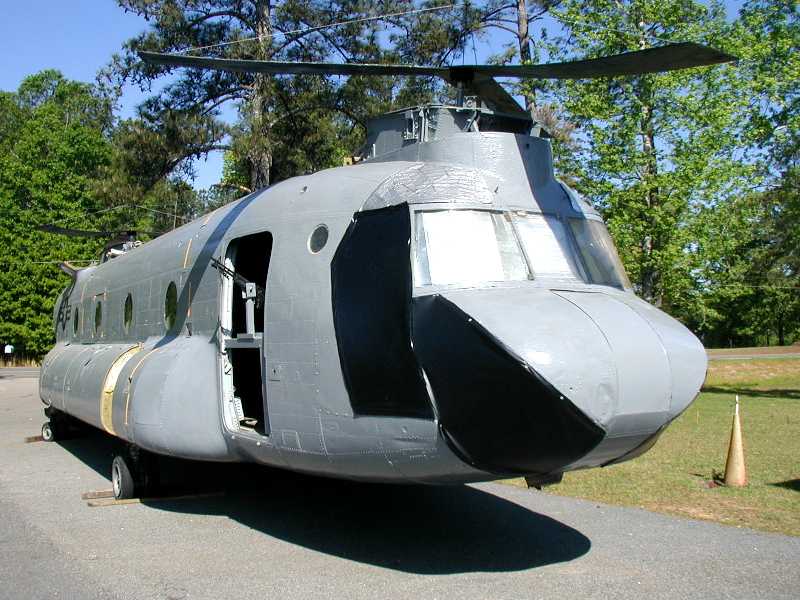
Butch Walker's Amaze-N-Tow Enterprises and the Air-Mech-Strike Study Group put on a "maximum effort" to convert the "Ghost Ship" into a flight simulator by covering up all the clear areas in the nose and adding a man/computer interface for Morningside Baptist Church's Thank-the-U.S.-Military Appreciation Day on April 1, 2006, called Operation GHOST SHIP.
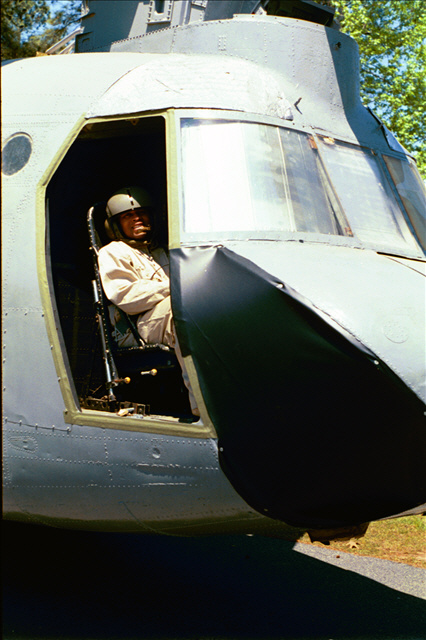
Mike's good friend, SFC Steven Turner USAR came by to show the simulator controls from the outside-in
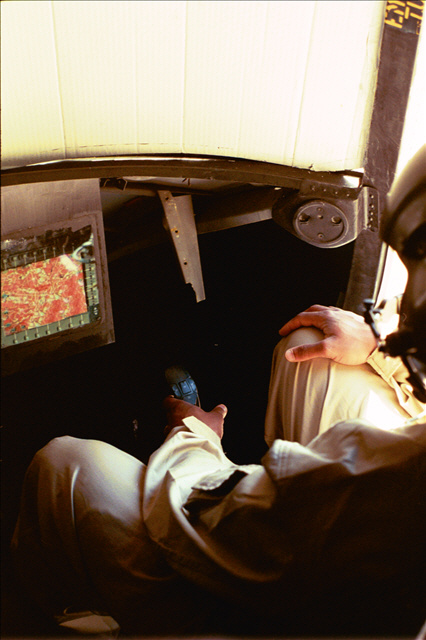
SFC Turner flies the CH-47 Chinook using a joy "cyclic" stick not unlike a F-16 pilot's stick on top of a mini-pedestal created by Zach Walker.
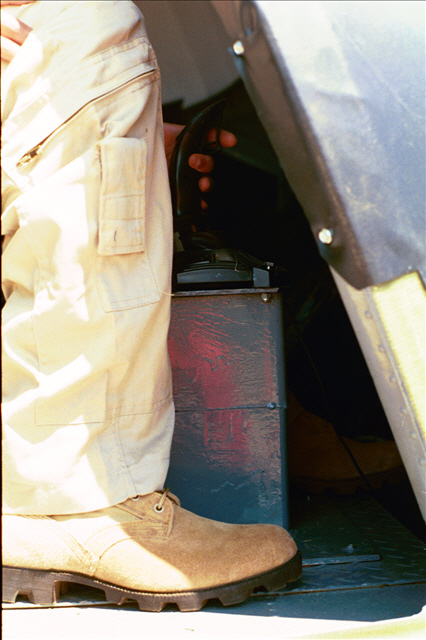
AMS-SG is developing a long cyclic stick to replace the joystick to add realism.
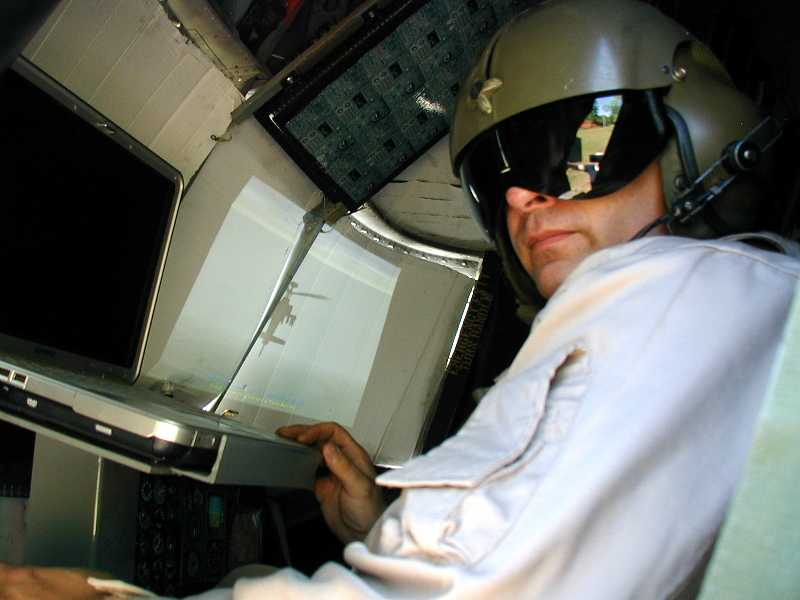
1LT Sparks switched to the co-pilot's seat to show the laptop computer pedestal station created by Brett Walker to power the flight simulation
b. Co-pilot and Pilot dressed in authentic TAN flight suits and helicopter helmets
c. Simulated CH-47F digital "glass" cockpit panel
d. Laptop-generated flight simulation using "Apache Havoc" connected to joy "cyclic" stick and projector
e. "Proxima" (Army slang for computer wall projector) sends imagery onto white backdrop panels inside cockpit canopy
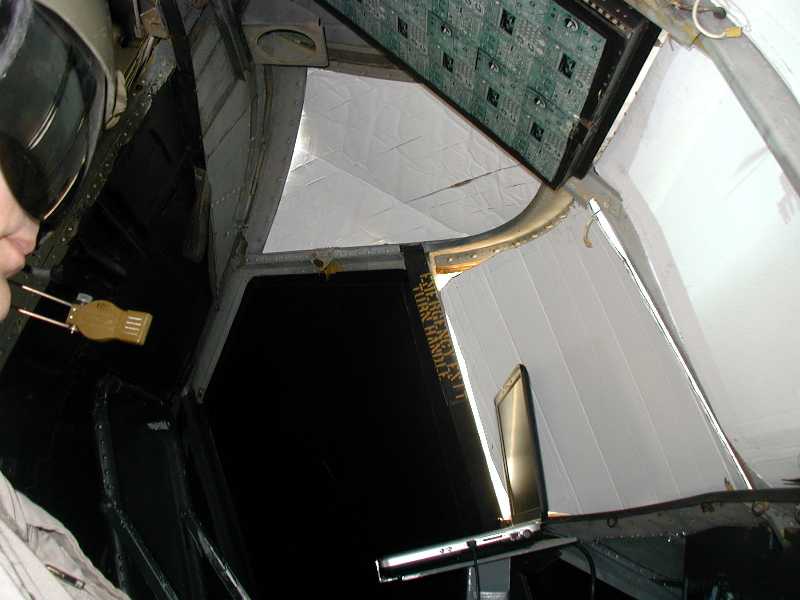
Such a laptop/keyboard in a flight simulation is not uncommon...below is a European Aircraft consortium's A-400M military transport turboprop's flight simulator in action...the question arises--WHERE IS THE STICK FOR THE CO-PILOT TO FLY THE PLANE? (FYI in fixed-wing aircraft co-pilot is in the right seat) Does he fly the A-400M using a mouse?
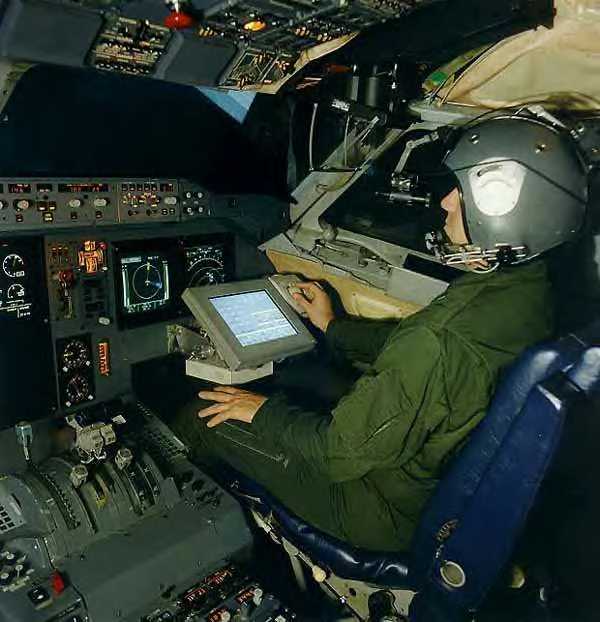
Flight Simulator of Multi-Billion Dollar, (ehh, Euros) A-400M Transport Plane
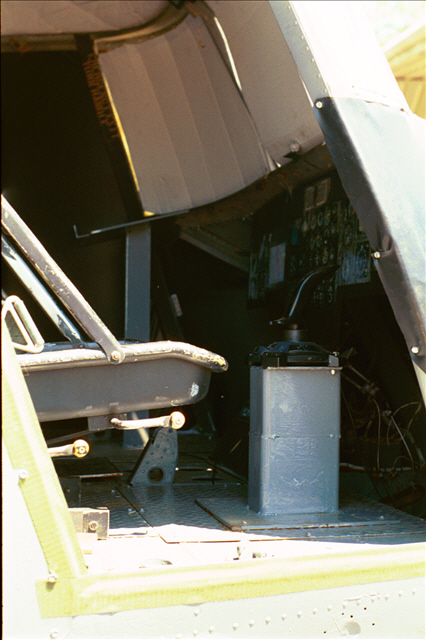
With outer cover removed, its possible to see a close-up of the CH-47 Chinook pilot's position showing his seat, cyclic and in the background the laptop pedestal
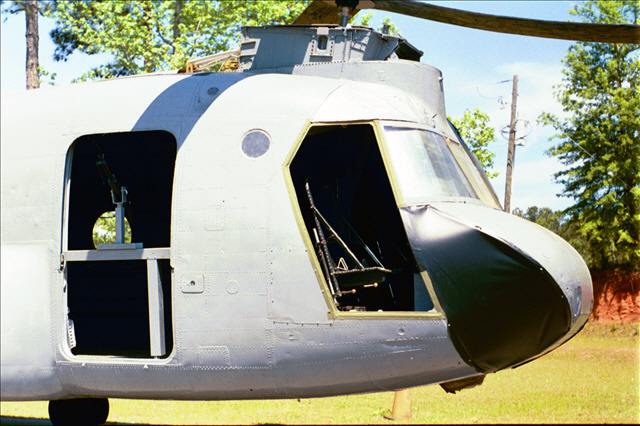
The side black vinyl panels are removable and attached by wide velcro ("Hook, Pile, Tape" in military lingo), sewing was done locally by Ranger Joe's in Columbus, Georgia
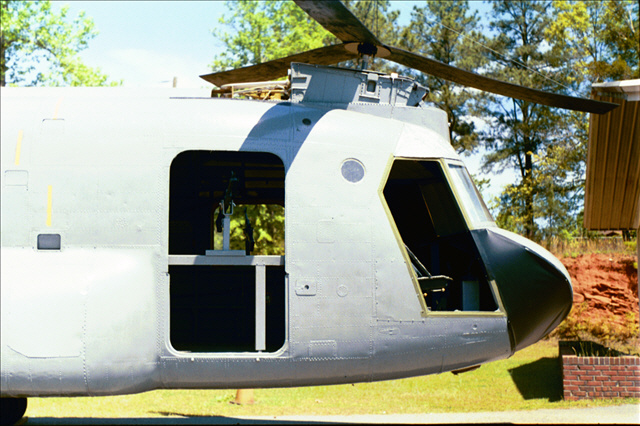
Notice the side M60 7.62mm medium machine guns, authentic helicopter seat, cyclic pedestal and simulated front main rotors above...
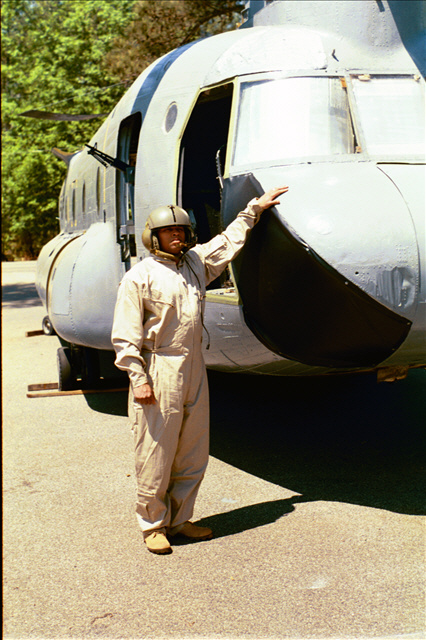
Here, SFC Turner poses by the Ghost Ship nose to provide a sense of size/scale...notice the outer side of the cockpit panels are silver to reflect sunlight like a car sun shade
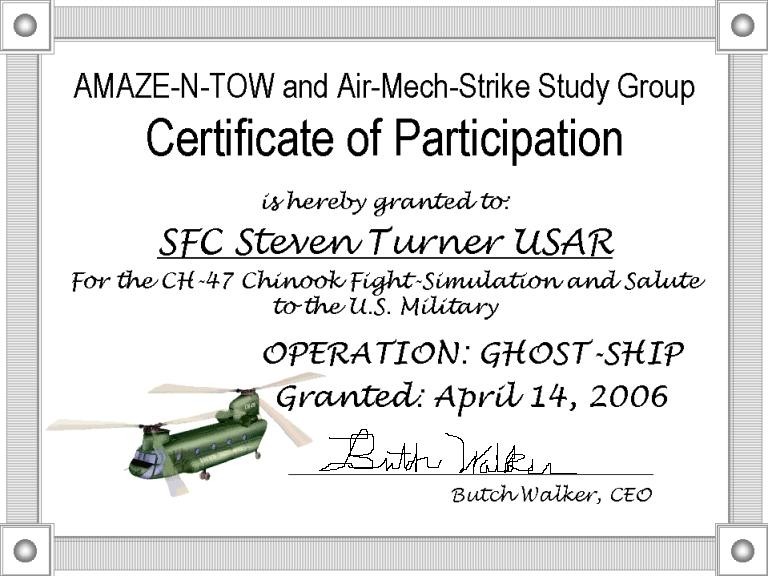
All who fly, re-enact as Soldiers in the back or roll-on/off a combat vehicle for load tests from the CH-47 "Ghost Ship" receive a certificate that they completed their mission safely...certificate created by Ms. Carol Murphy

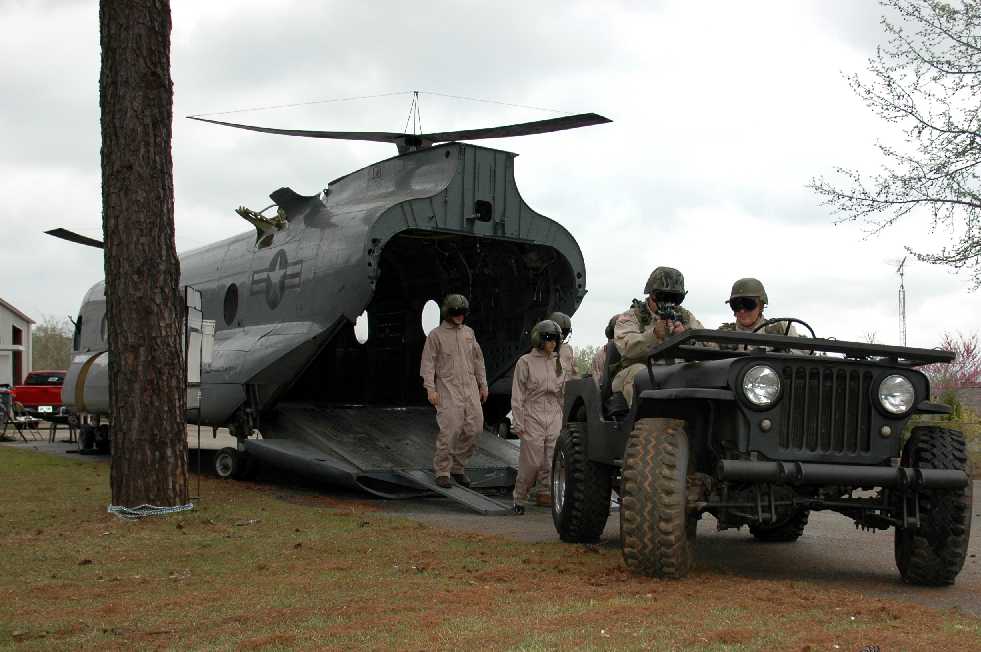
Photos by Bill Rawn and Hans Halberstadt
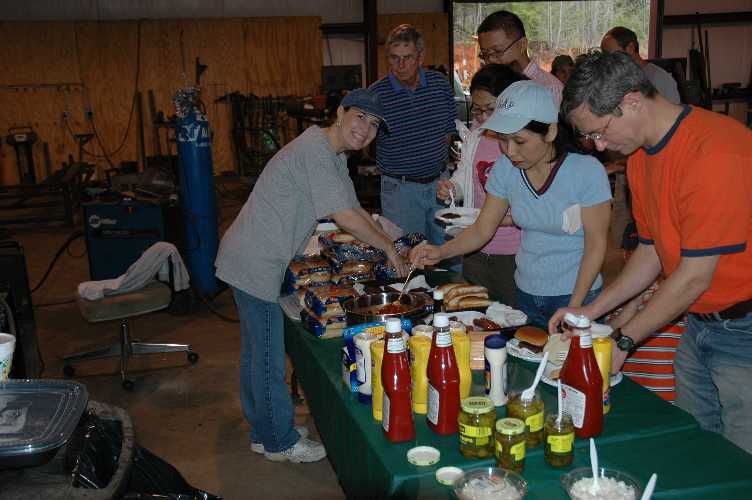
"An Army Marches on its stomach"--so we first had to feed the troops.
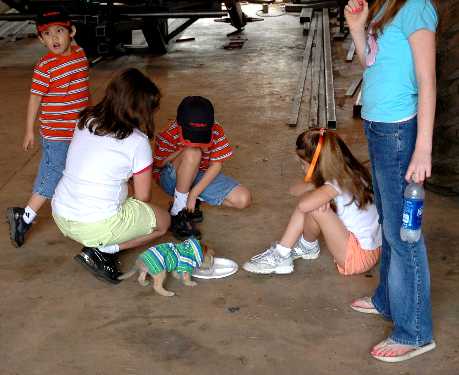
A star of the festivities was a casually-attired puppy...

Also casually attired in a bright print shirt was Justin Belew, Leader of the Morningside Baptist Church "Passion Play" for the upcoming Easter memorial

"The Puppy! I want to see the PUPPY!! Where is he?" cried the children. We should have named the event Operation: PUPPY...with a guest appearnce by a CH-47 Chinook!
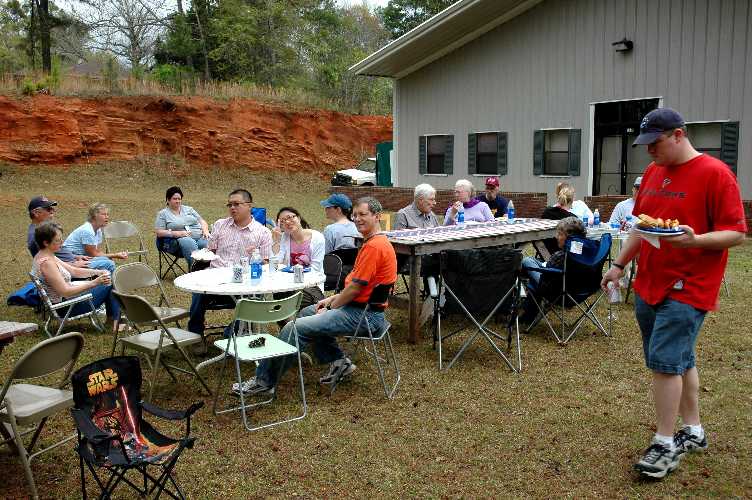
The sky was slightly overcast, not great for pictures but comfortable for the church troops to sit and enjoy a lunch and demonstration without getting sun stroke
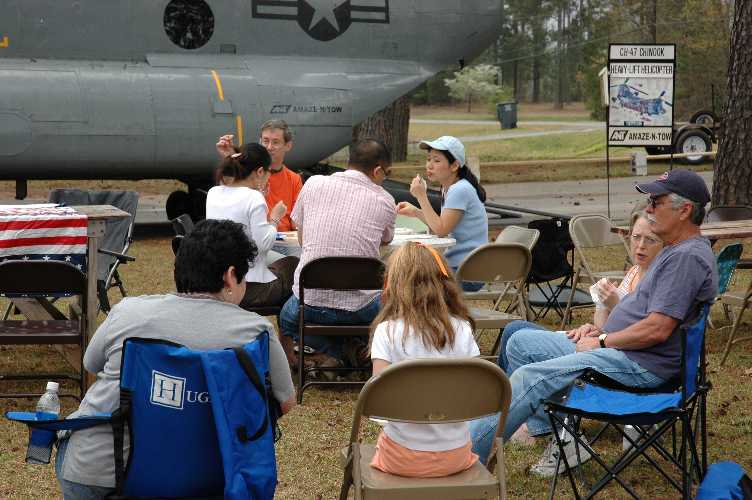
The Mighty CH-47 Ghost Ship lurks in the background as the church troops devour their BBQ...
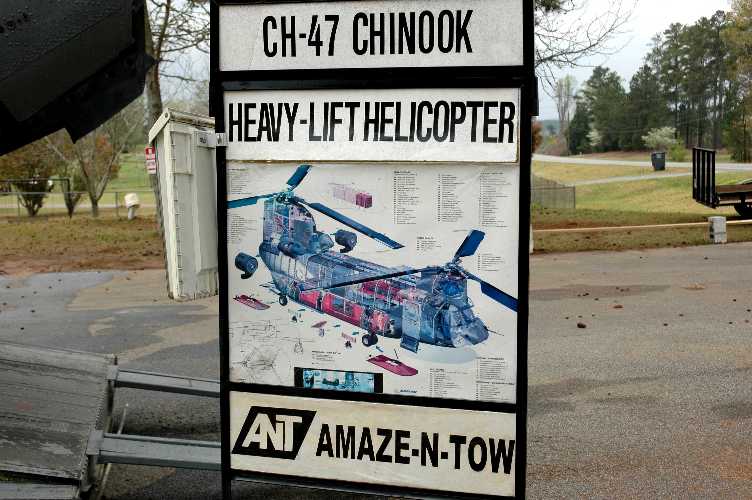
A cut-away poster of the CH-47 Chinook shows its inner workings and many attachments....
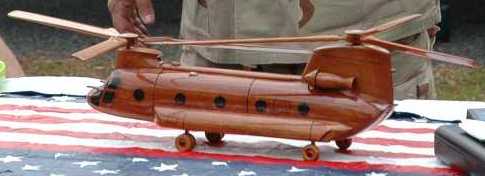
On the American flag table was a beautiful mahogany wood CH-47 Chinook model to give the church troops a closer look at how the aircraft is composed
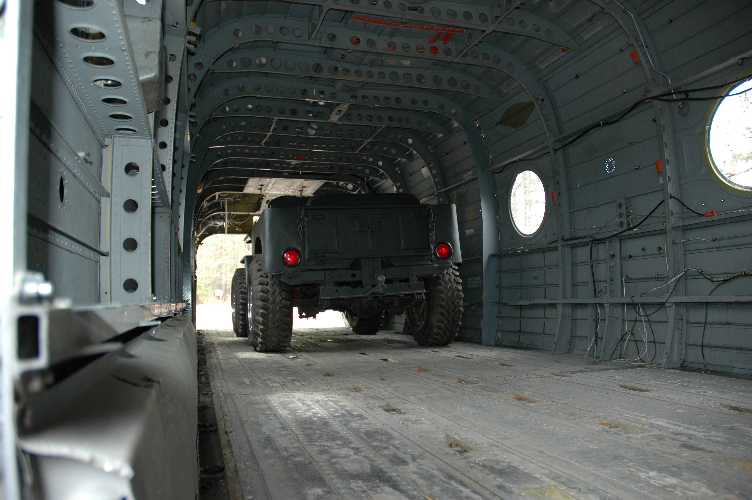
The ANT Willy's 4x4 Jeep stands ready to roll off the rear ramp and into action...
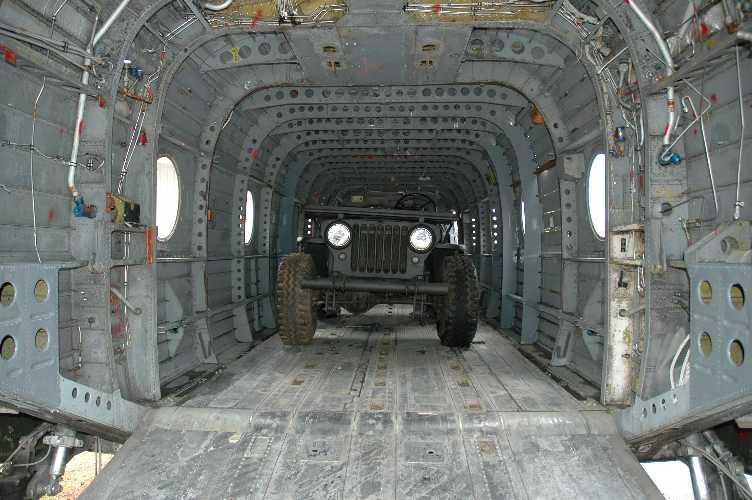
Front view showing there is still space on each side of the internally-loaded Jeep for troops to pass...many did and got a peak....
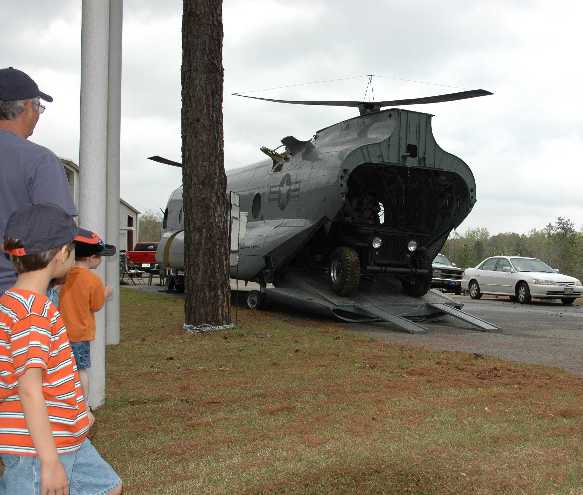
RRRRRRRRRRRRMM! RMMMMMMMM! the Ghost Ship Demonstration Team prepares to spring into action!
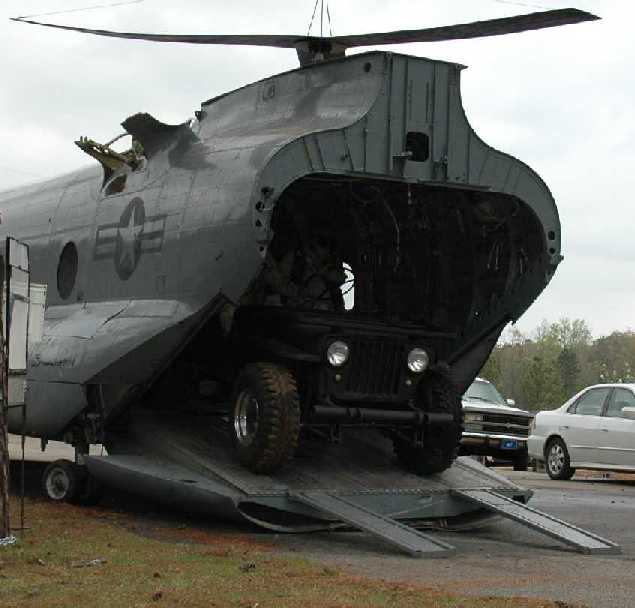
Here comes the jeeep!!!!!
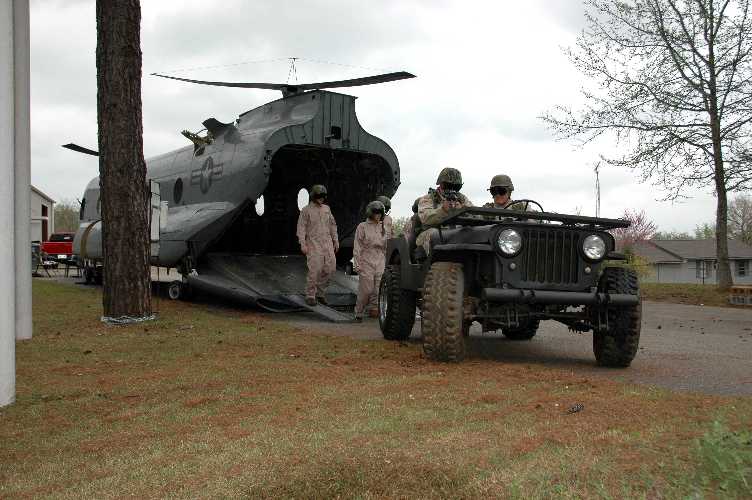
The Willy's Jeep roars out the rear ramp and ramp toes of the mighty CH-47 Chinook with LNG CEO Butch Walker at the helm and 1LT Mike Sparks riding shotgun with a M4 5.56mm carbine....
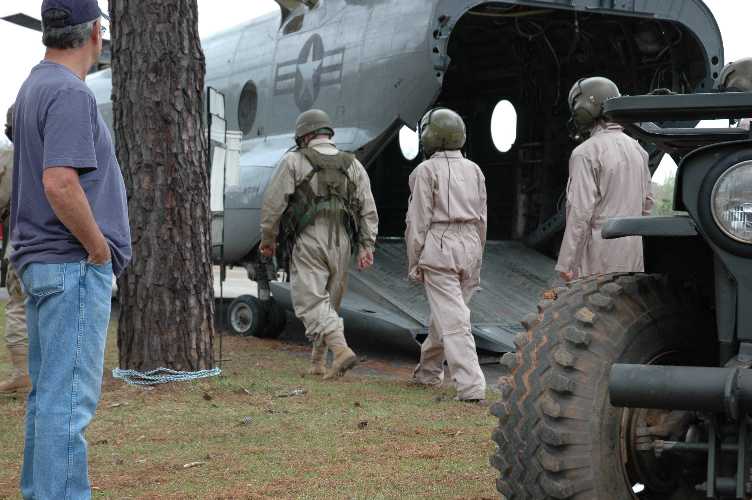
Stopping the jeep, 1LT Sparks hops out to provide security as CEO Walker leads the rest of the Ghost Ship demonstration team forward...
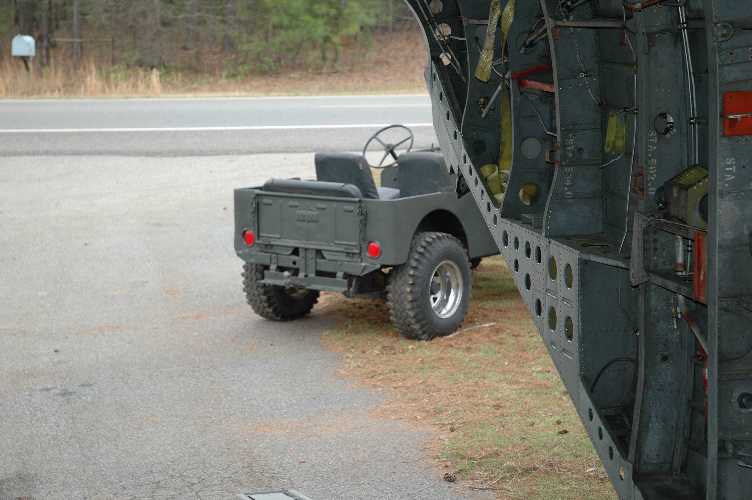
View from the rear ramp a crew chief would see of the parked Jeep...
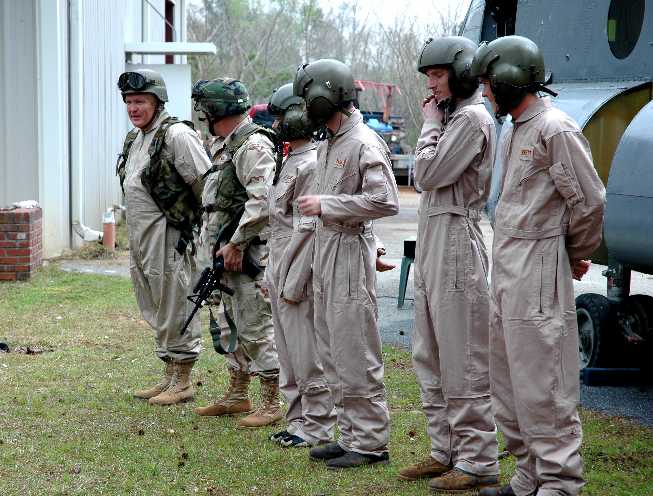
LADIES & GENTLEMEN: MEET THE CH-47 GHOST SHIP DEMONSTRATION TEAM!
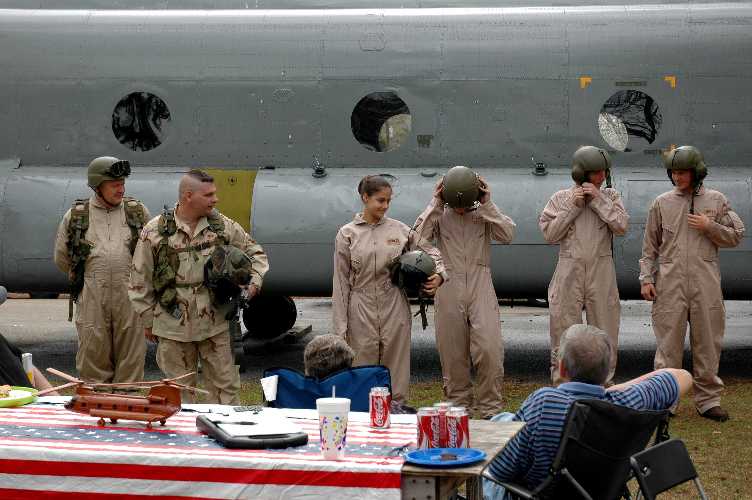
Butch introduces the pilot-in-command for today, the lovely Miss Ashlee Jackson...
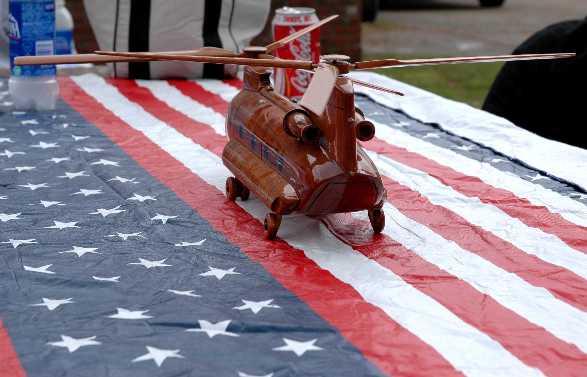
Meanwhile, the Ghost Ship's "Little Brother Mahogany" waits for his turn in the limelight...
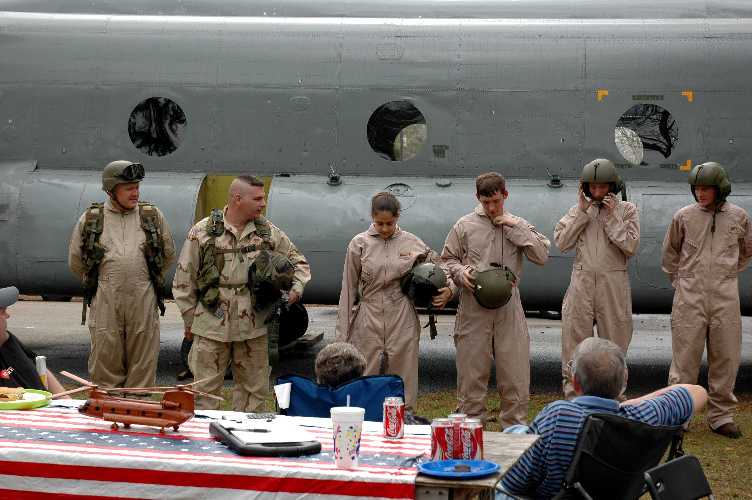
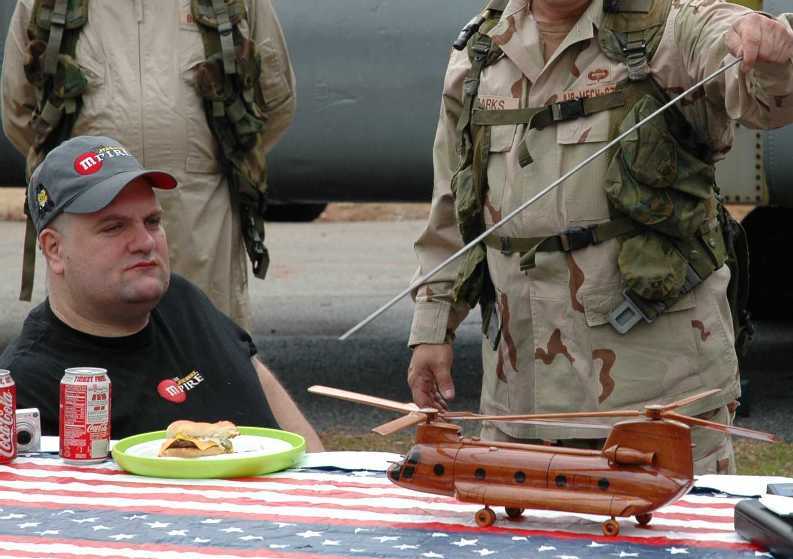
Here, the L.T. uses a pointer to show how the rotors of the Chinook rotate in opposite directions to counter each other's torque so no lifting power is lost as happens when you use a tail rotor...
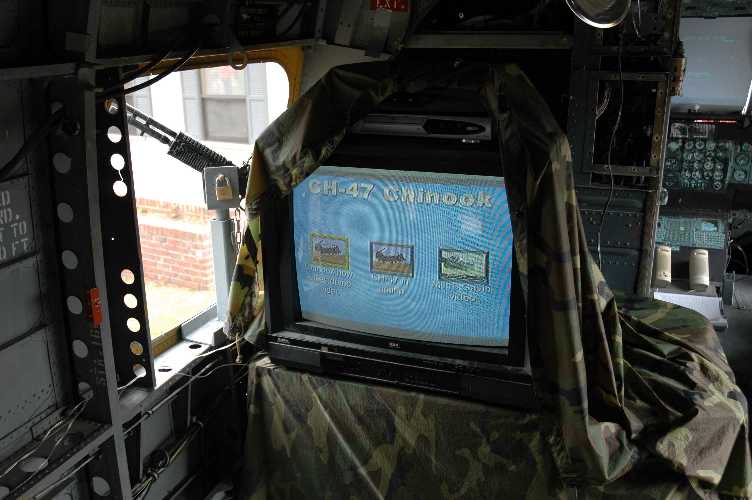
After the briefing, the church troops march in and watch a video of the Chinook in action
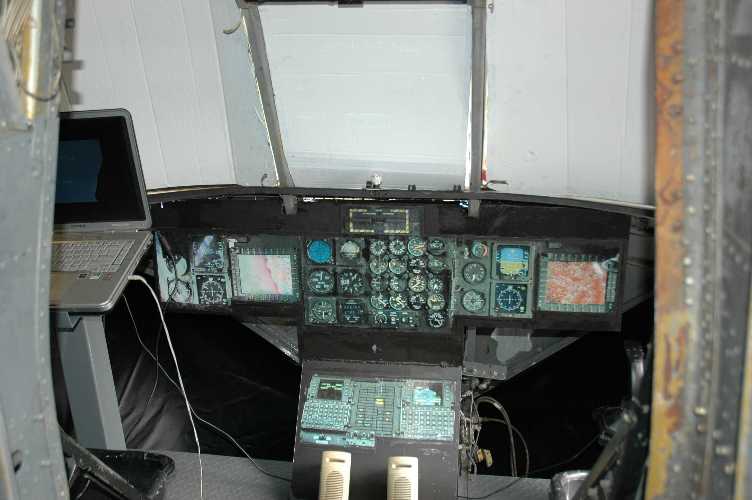

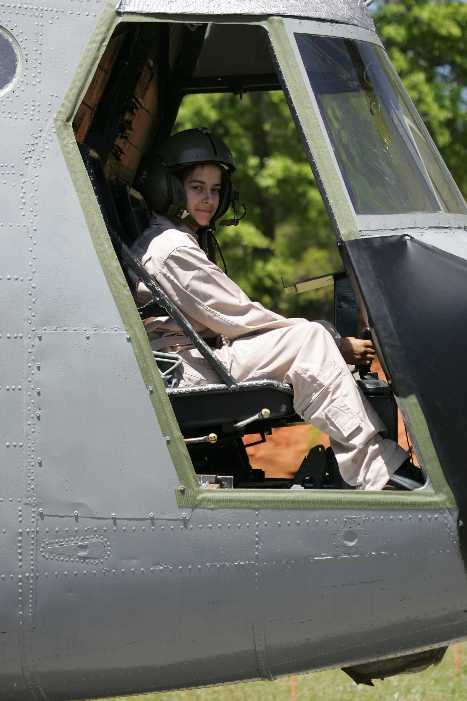
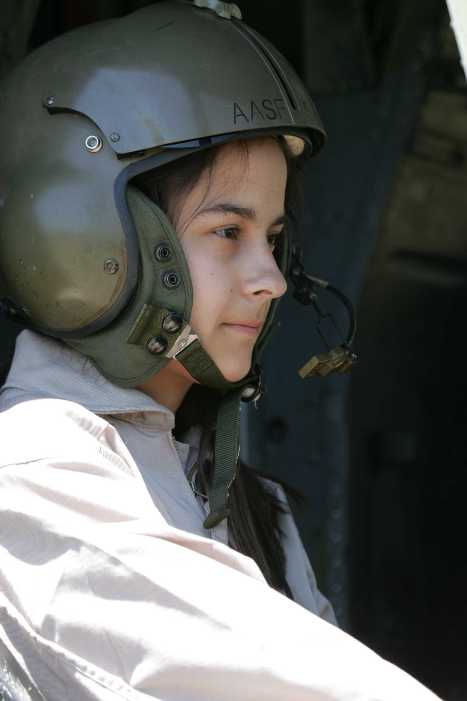
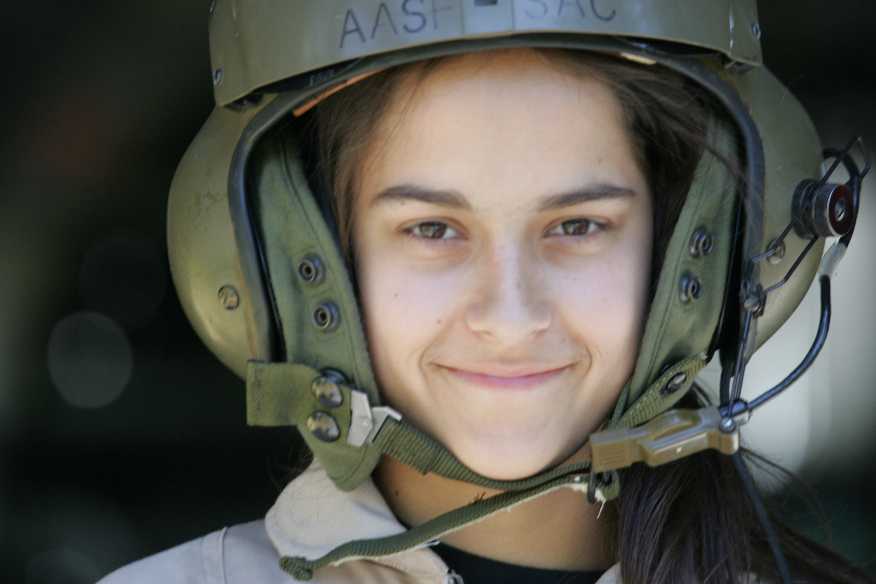
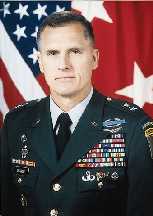
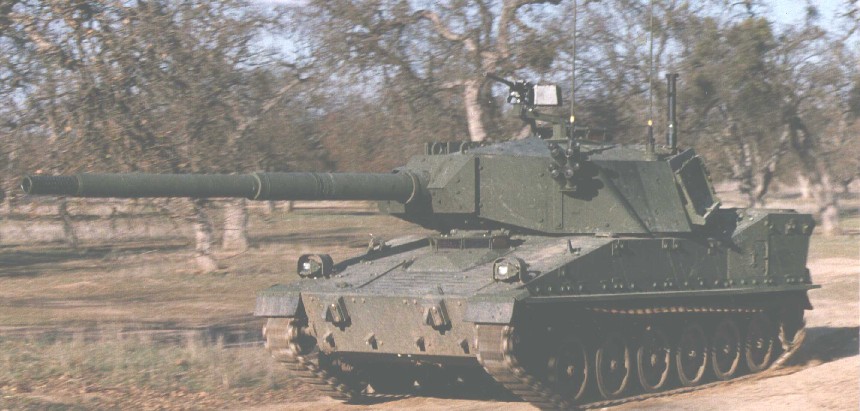
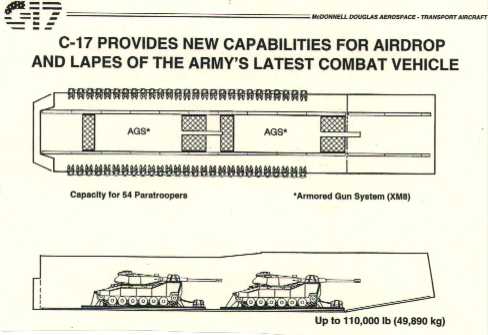
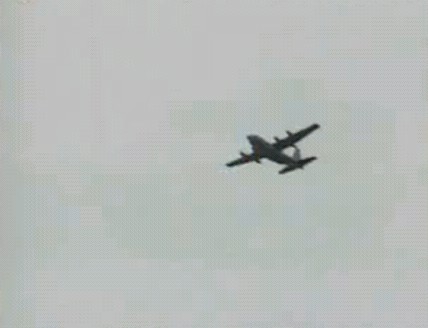
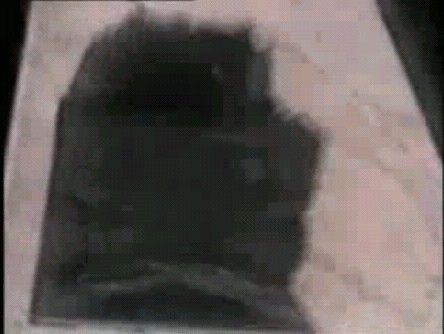
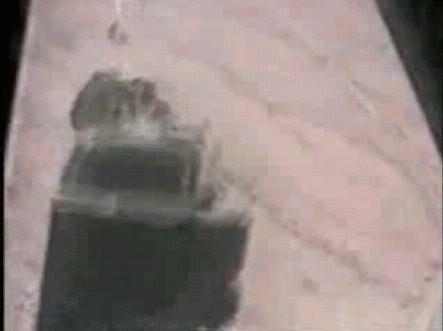
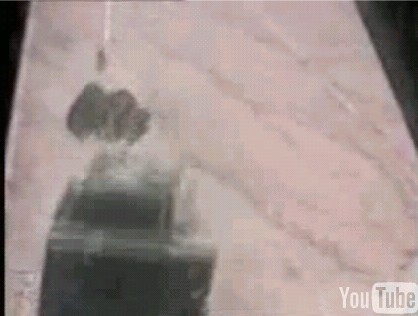
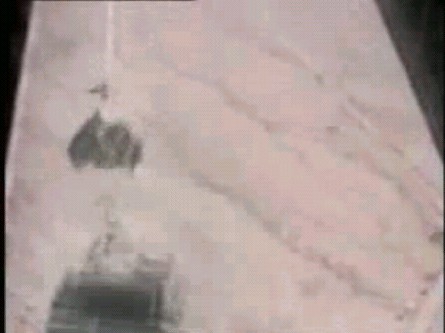
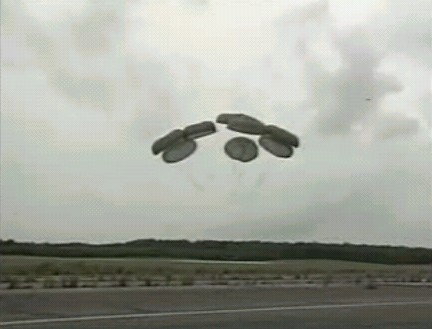
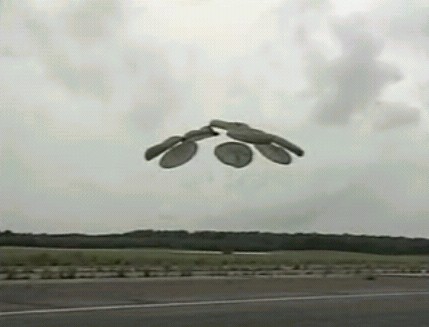
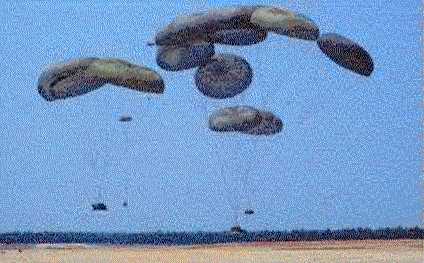
www.cnn.com/TRANSCRIPTS/0404/26/ldt.00.html
Replace the hopeless Humvee, Pentagon chiefs are urged
(Filed: 28/04/2004)
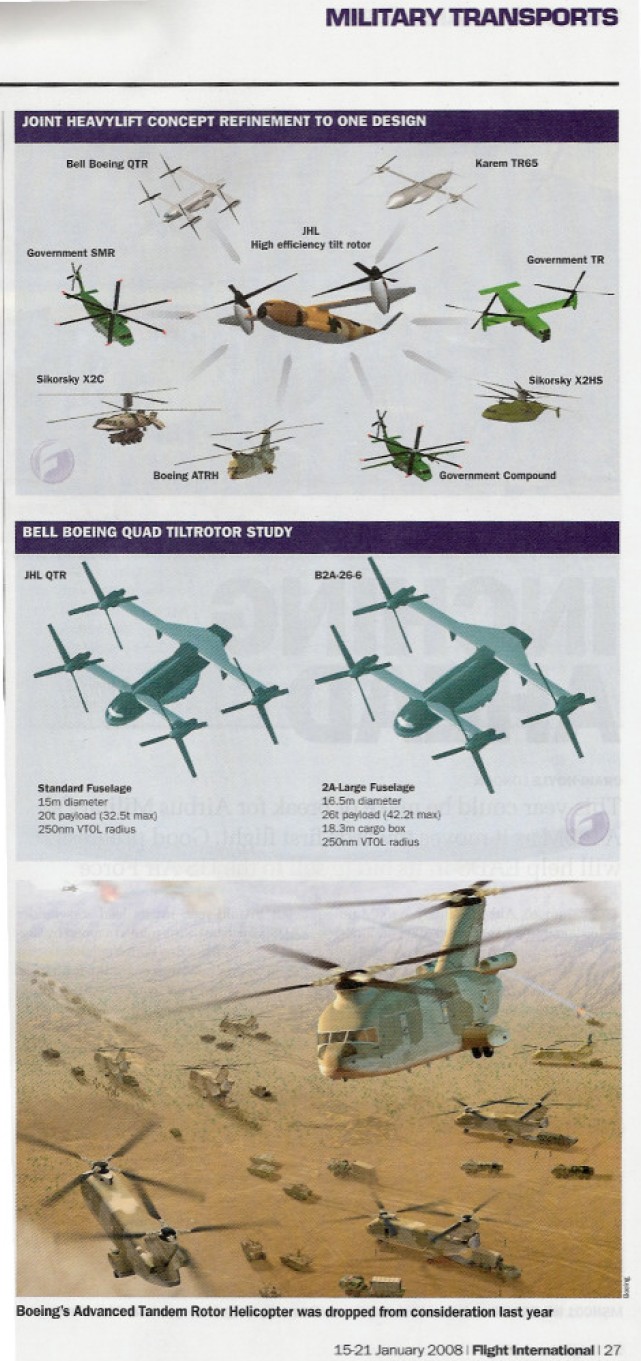
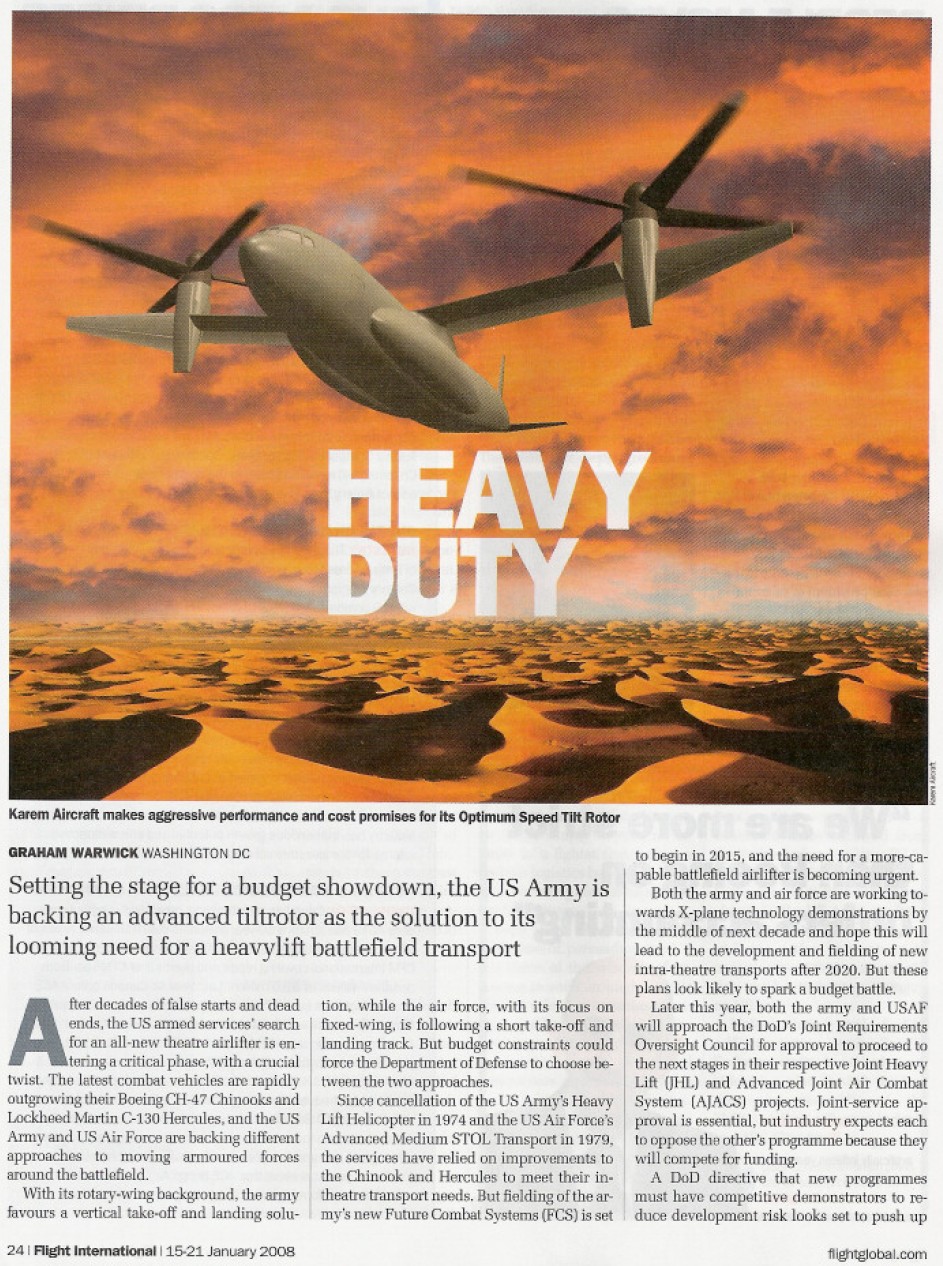
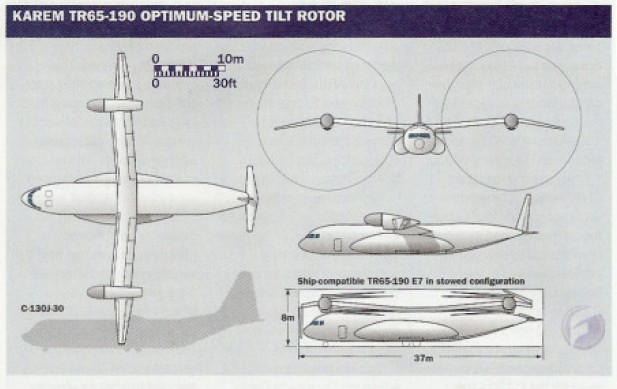
Vertical Envelopment
About $500 Million of that has come from the marine's annual budget. The Corps has forsworn new Humvees to pay for extra armor for the vehicles it already owns.
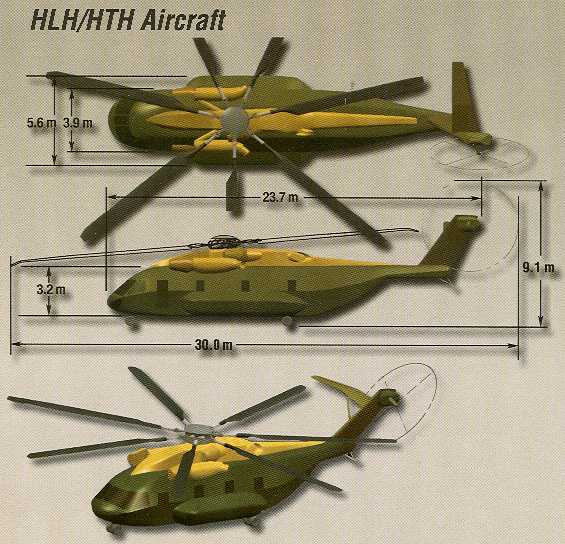
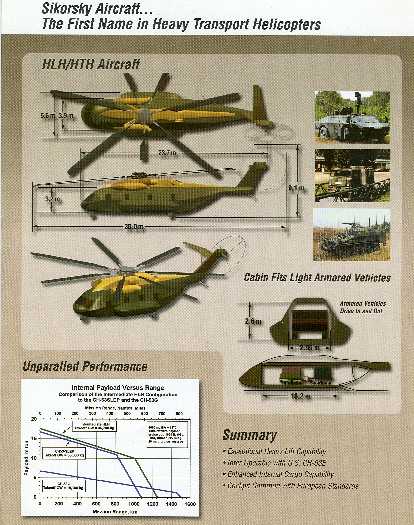
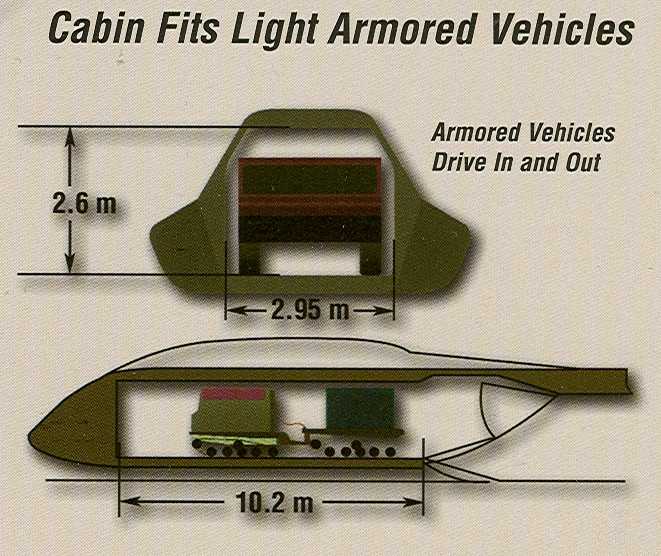
Reducible Height 92 inches
Length 361.4 inches with barrel/turret facing forward
? inches with barrel/turret facing aft
100 inches at its tracks
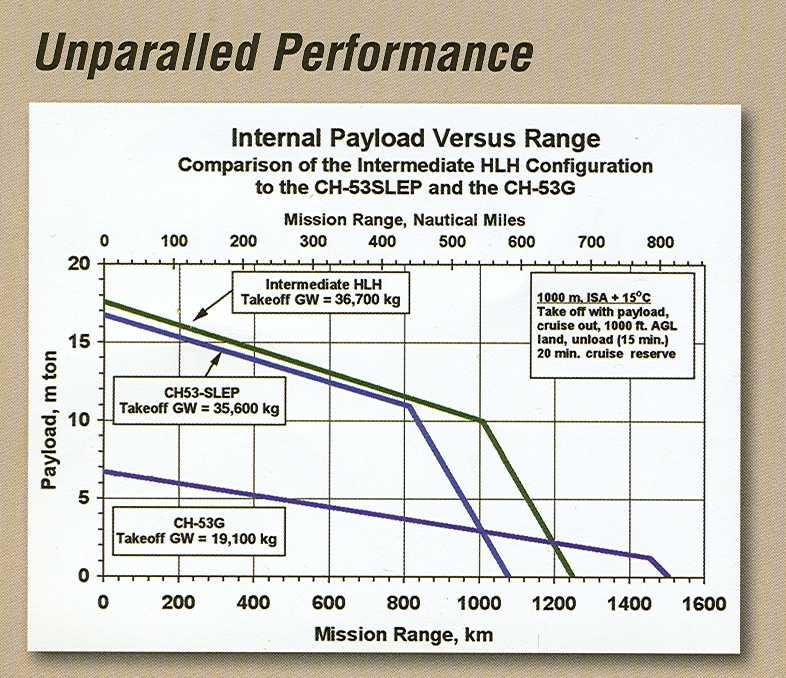
USMC Plans Combat Version of CH-53
By GAYLE S. PUTRICH
DefenseNews.com
Posted 01/16/06 11:01
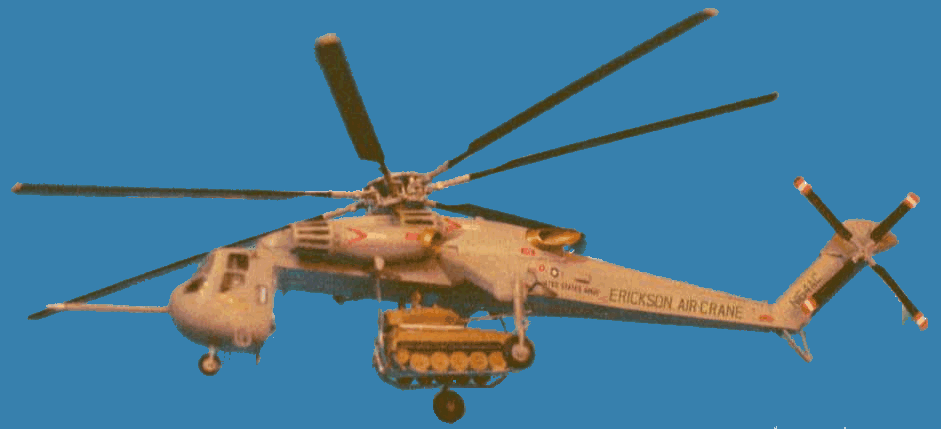
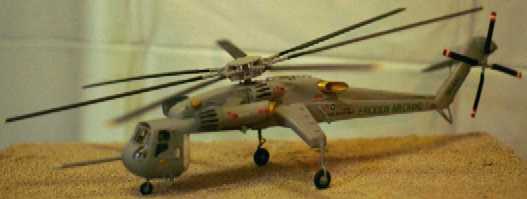
Maximum power, minimum weight: CH-53E SkyCrane sheds 6 tons of CH-53E fuselage to become a 20-ton cargo lifter!
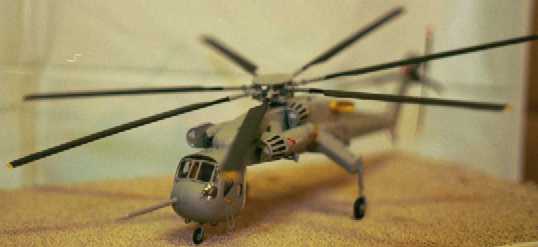
Note the powerful 3-engined CH-53E powertrain & 7-bladed rotor system
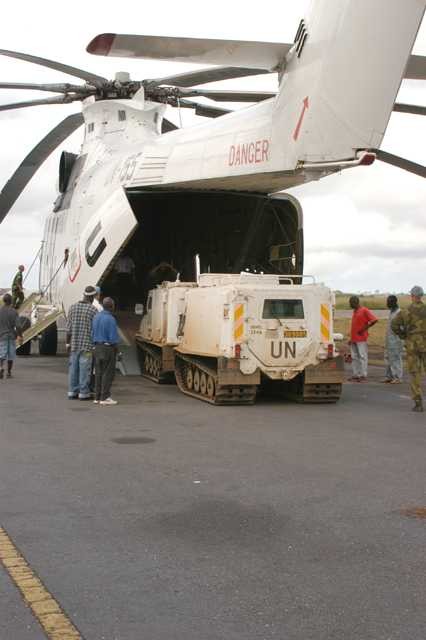
www.flug-revue.rotor.com/FRheft/FRH9807/FR9807e.htm
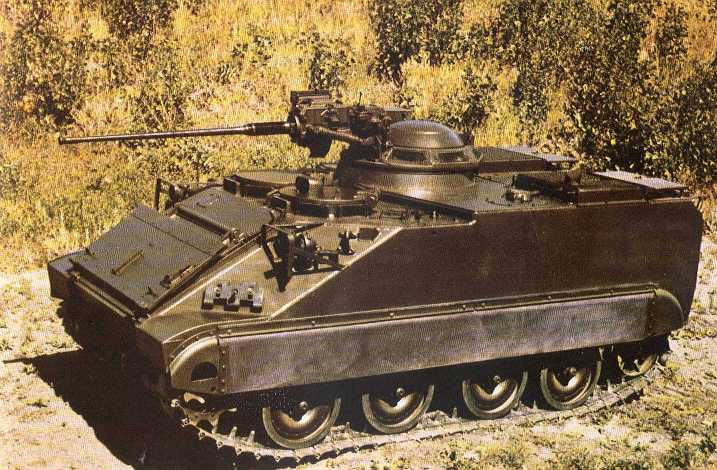
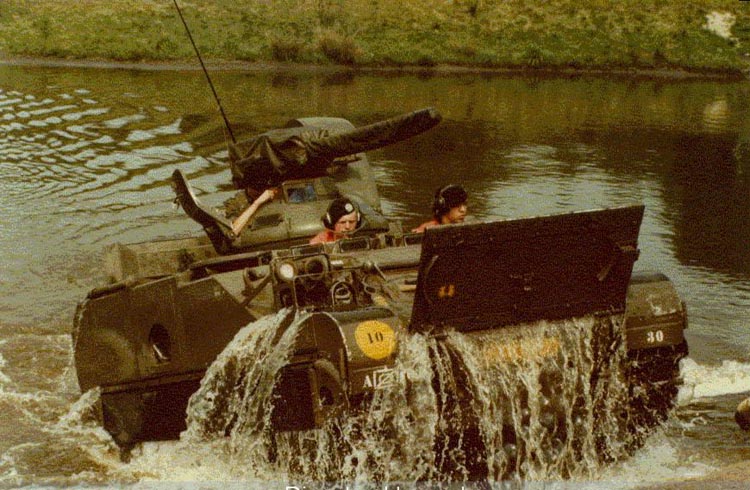
"Mini-Gavin" = the Lynx Recon/Scout Vehicle
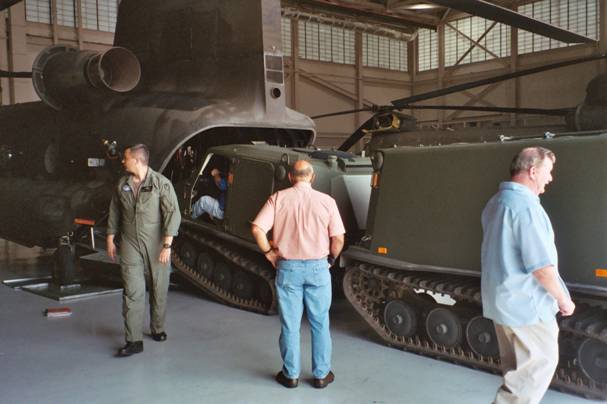
Armored Bv206S rolling onto a CH-47D Chinook in U.S. Army tests
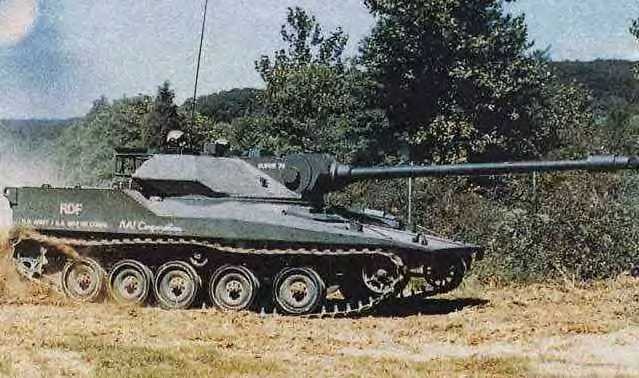
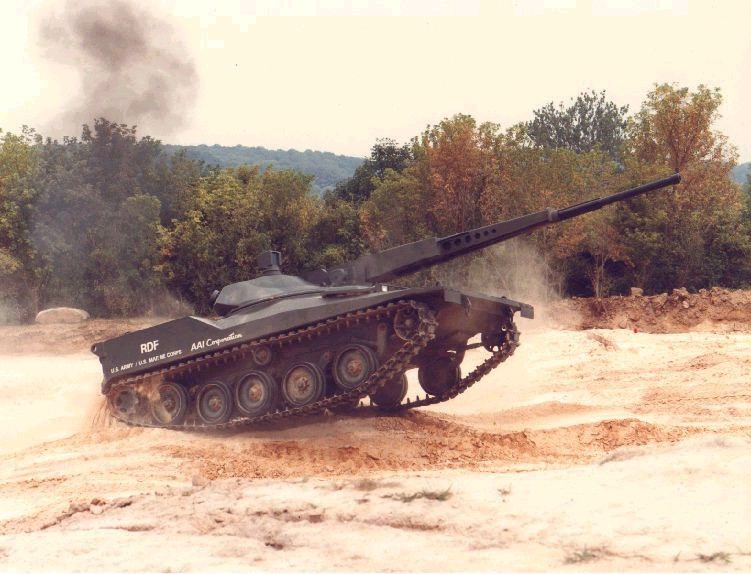
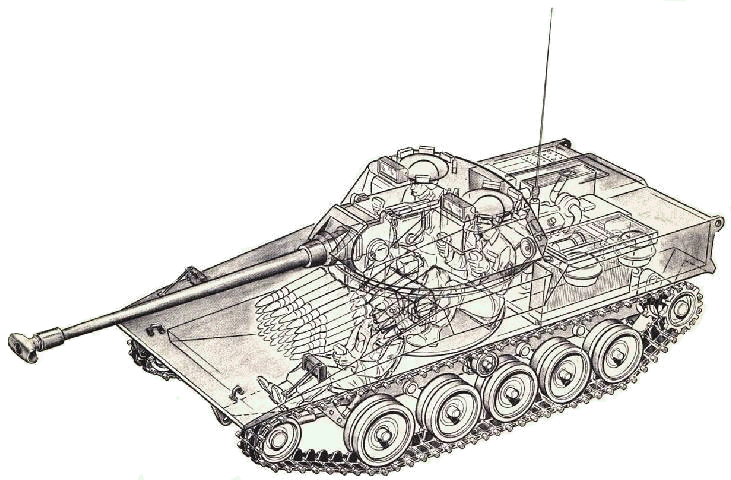
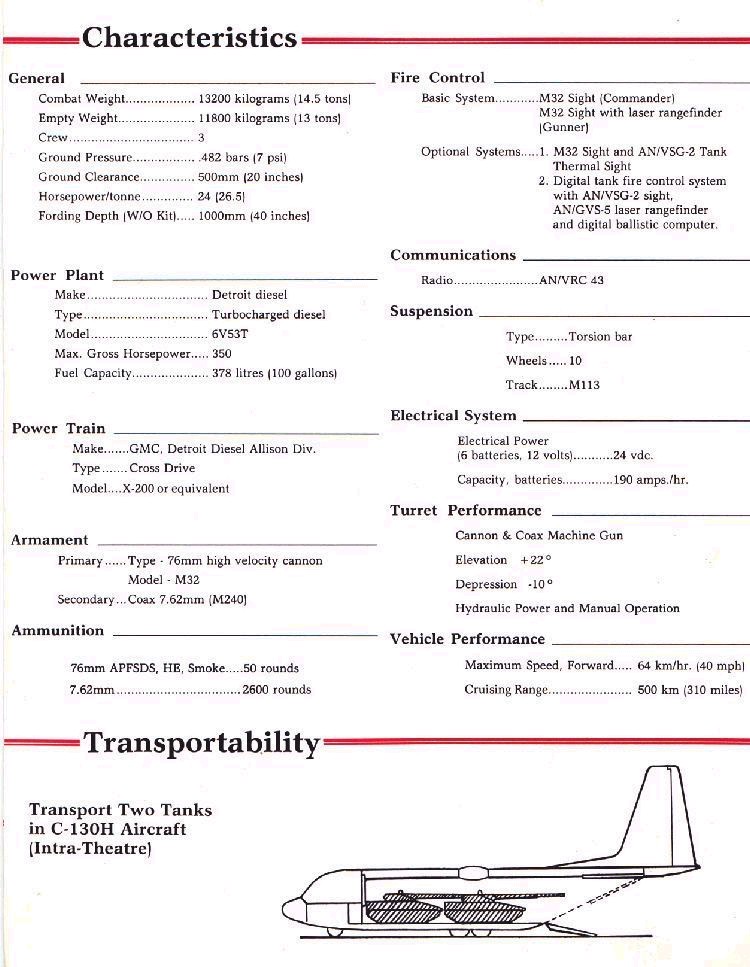
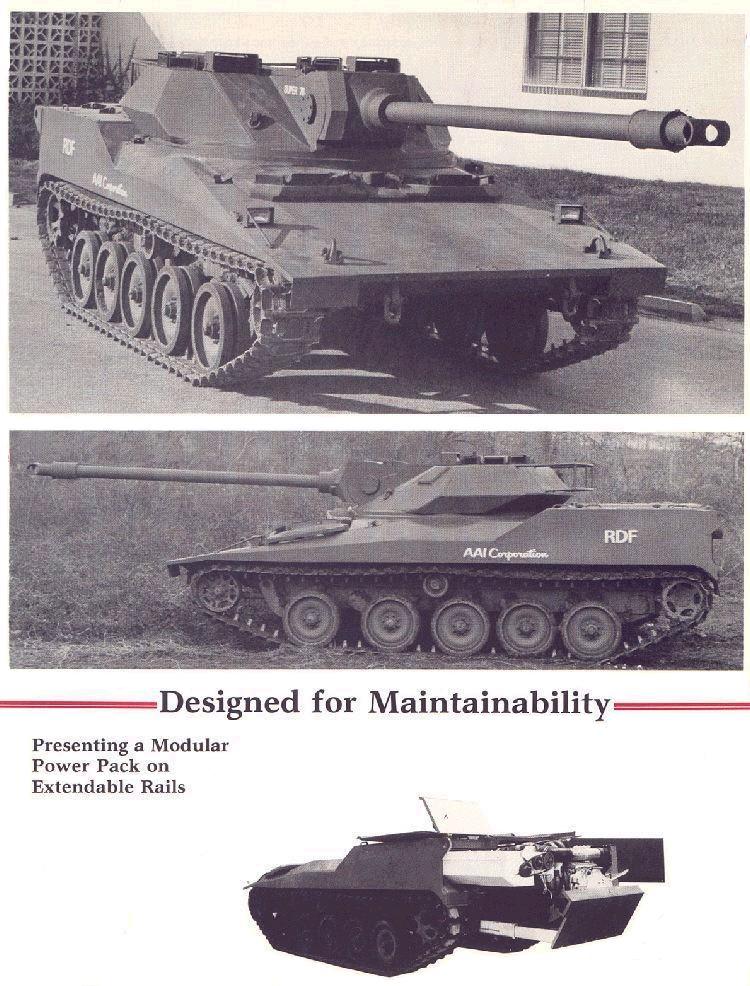
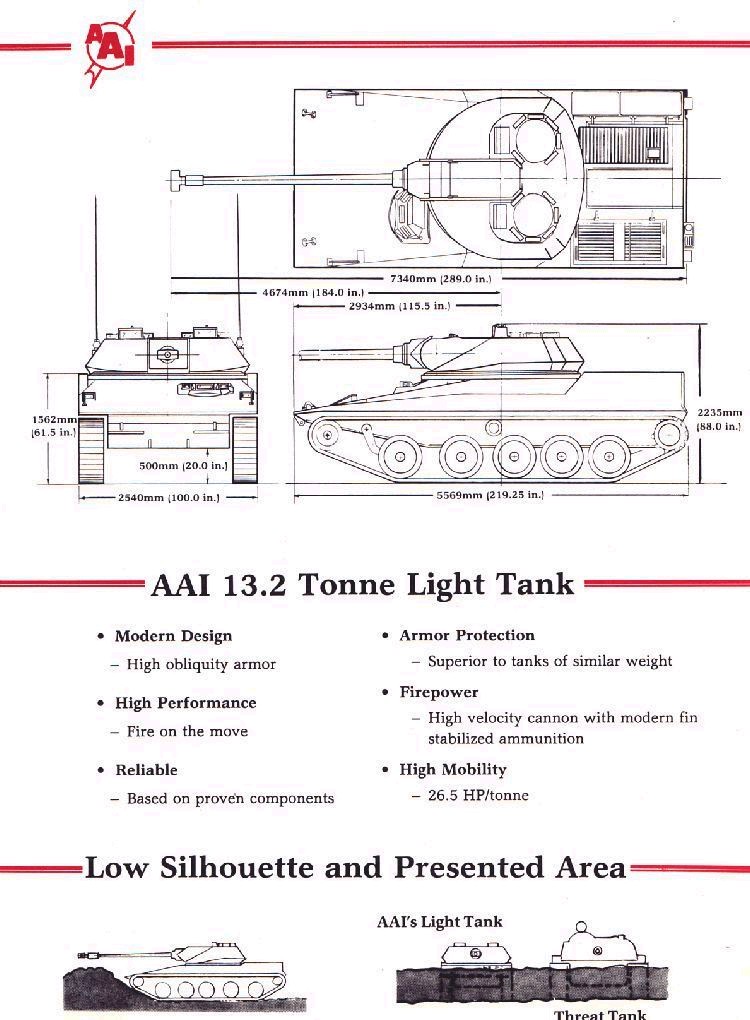
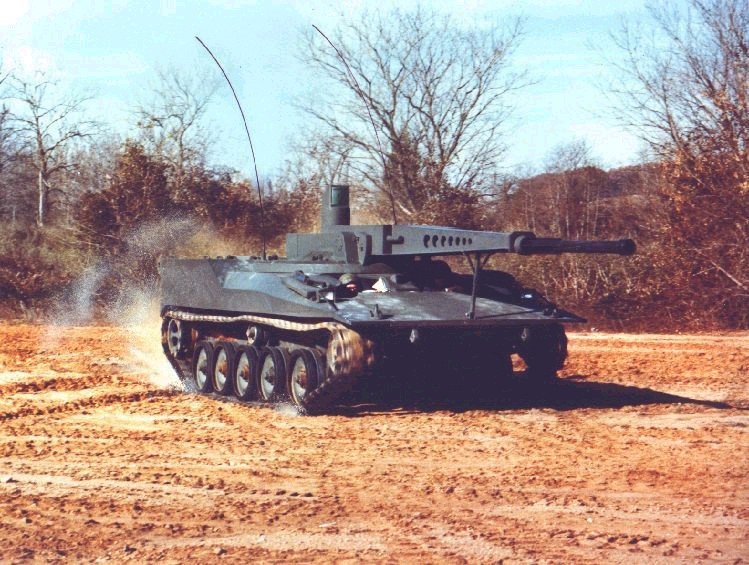
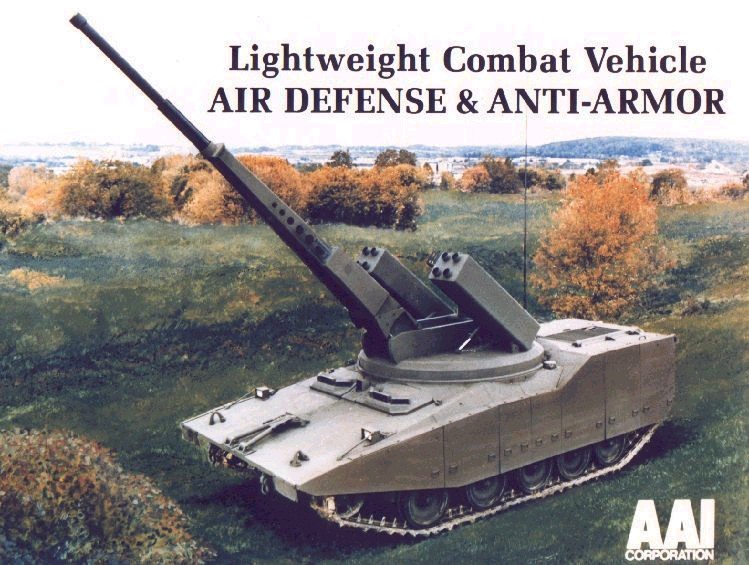
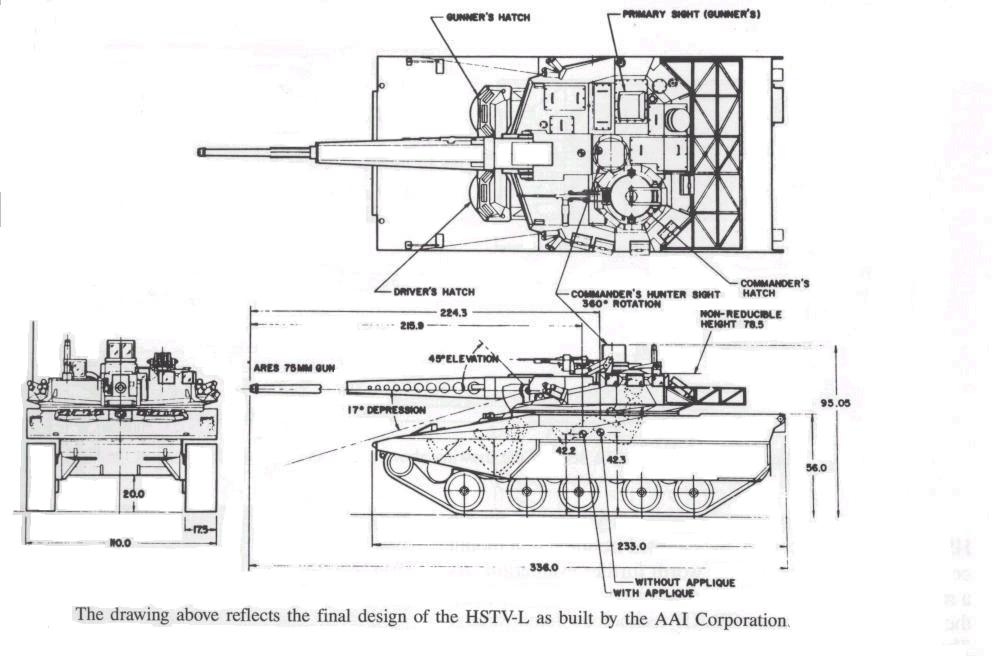
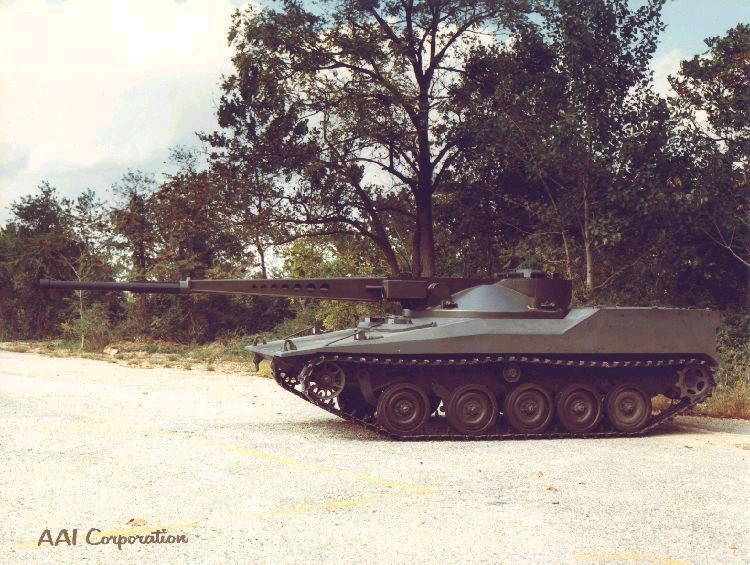
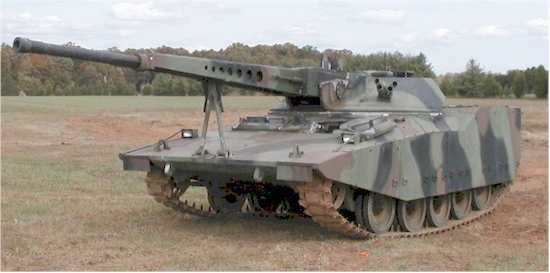
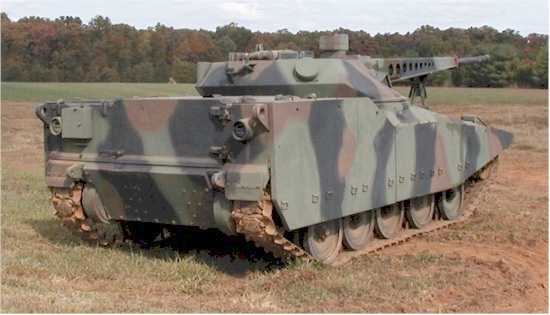
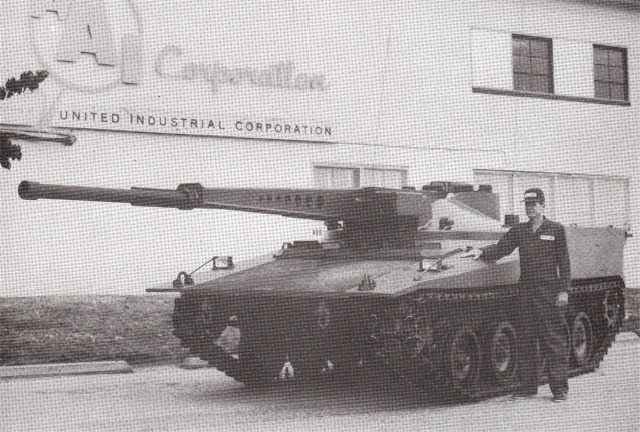
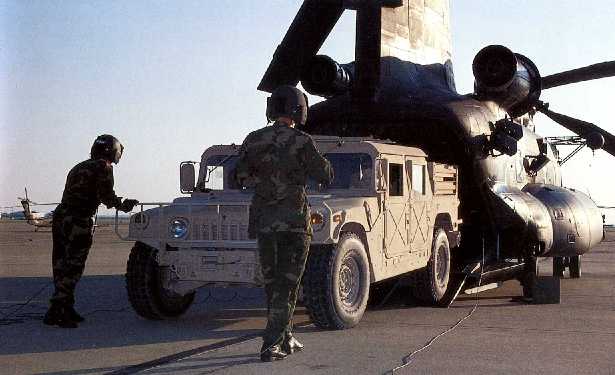
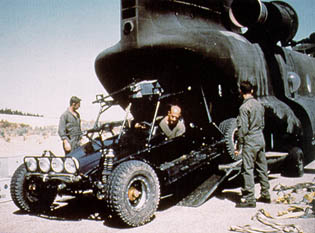
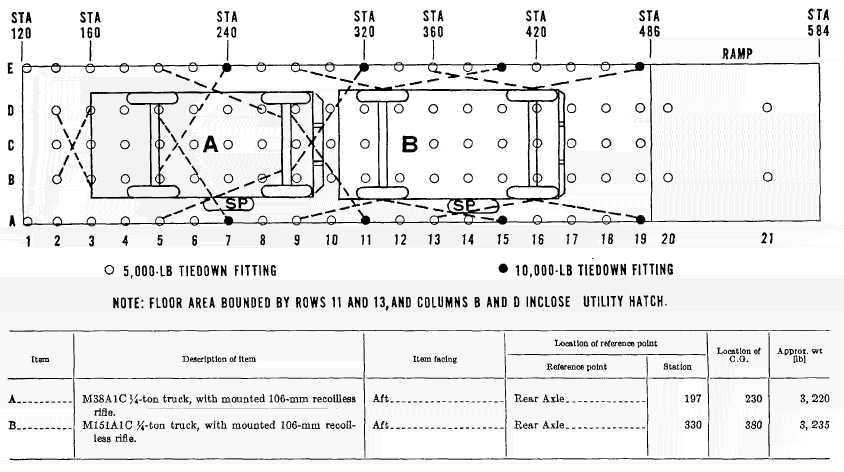
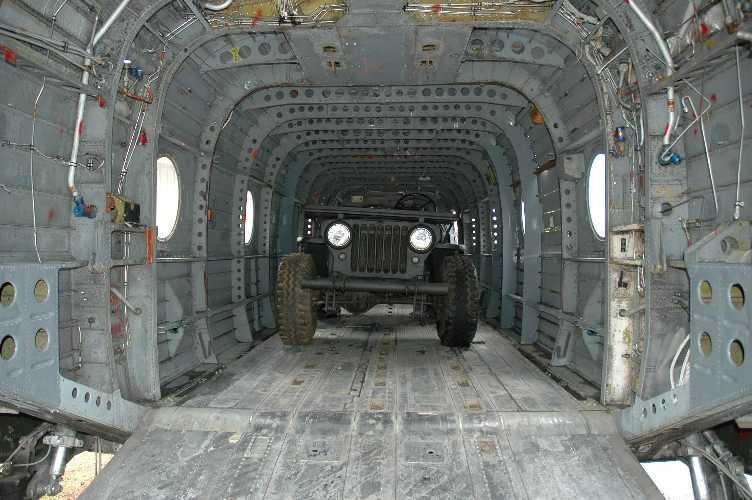
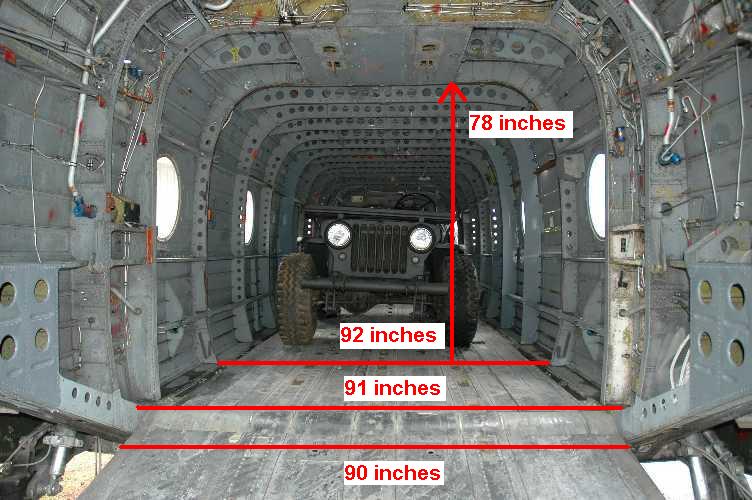
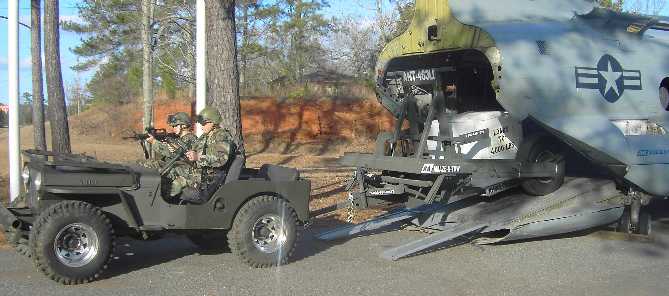
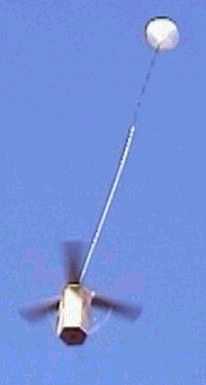
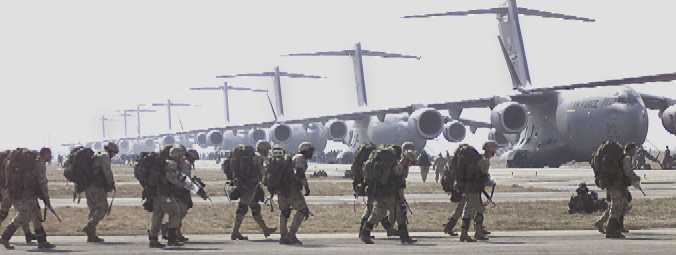
1st Platoon Bravo Company 2/2 IN M113A3 Gavin light AFVs
3rd Platoon Bravo Company 2/2 IN M113A3 Gavin light AFVs
2d Platoon Bravo Company 2/2 IN M2A2 Bradley Medium AFVs
3rd Platoon Charlie Company 1/63rd Armor Battalion M1A2 Abrams Heavy tanks
173rd Airborne Brigade in Iraq
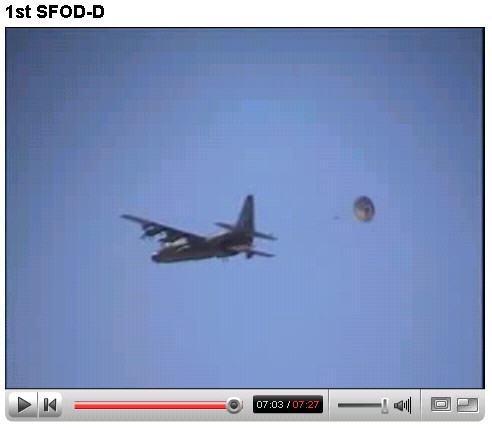
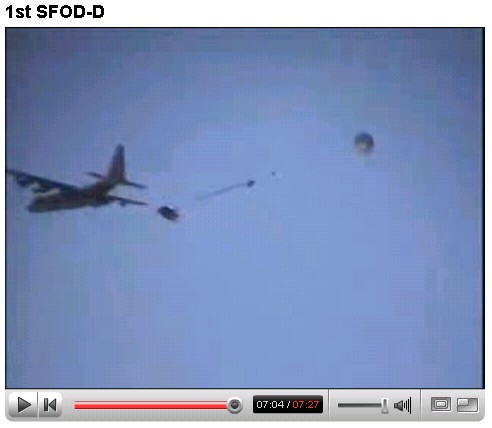
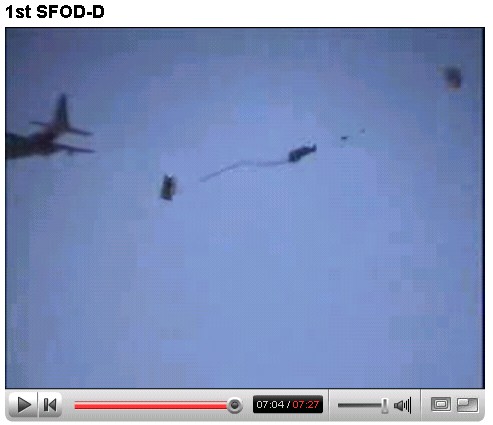
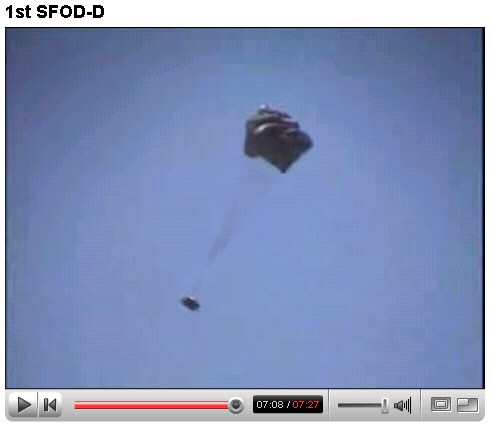
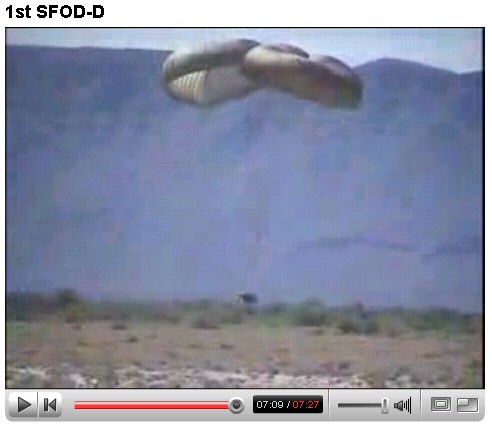
3-D maneuver warfare
Plus shipping--$6.00 first book; $3.50 each add'l
each additonal book add $28.45 to $30.95
Turner Publishing Company
PO Box 3101
Paducah, KY 42002-3101
Fax: (270) 443-0335
BG Huba Wass De Czege, U.S. Army (Ret.)
LTC Richard D. Liebert, Infantry USAR
LTC Lester W. Grau U.S. Army (Ret.)
LTC Larry A. Altersitz, Field Artillery (Ret.)
LTC Charles A. Jarnot, Aviation (Ret.)
MAJ Allen L. Huber, Aviation
CPT John S. Wilson II, Armor USARNG
CPT Carlton G. Meyer, former USMC
1LT Michael L. Sparks, Infantry USAR
SSG Brian Heitman, Infantry
SGT John E. Richards, Military Intelligence
Mr. Jacob W. Kipp, civilian intelligence analyst
Mr. Roy S. Ardillo, former Military Intelligence
Emery E. Nelson, former Armor Soldier
Carol A. Murphy, web designer
1-800-788-3350
Visa/Mastercard accepted
 U.S. Army/Air Force Aviation Journal
U.S. Army/Air Force Aviation Journal
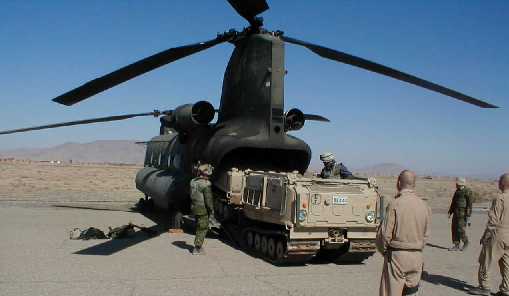
by Maj. Chuck Jarnot
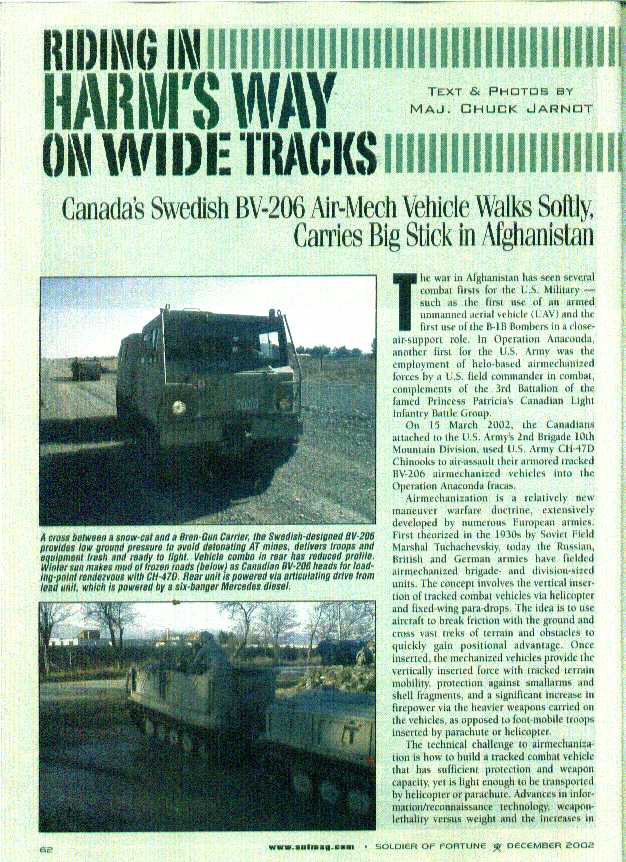


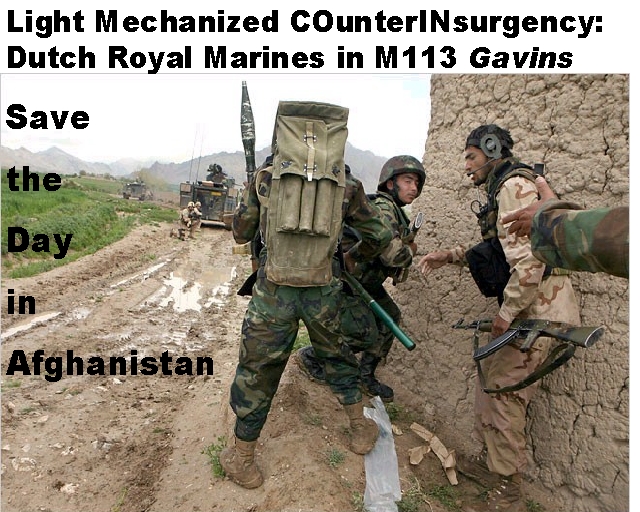
 www.youtube.com/watch?v=ZKa3tK3zi4c
www.youtube.com/watch?v=ZKa3tK3zi4c
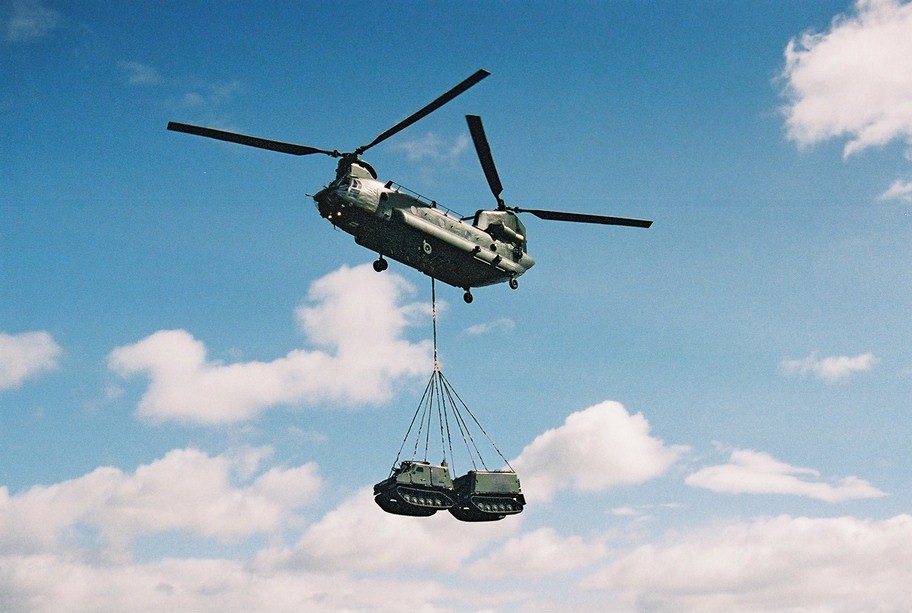
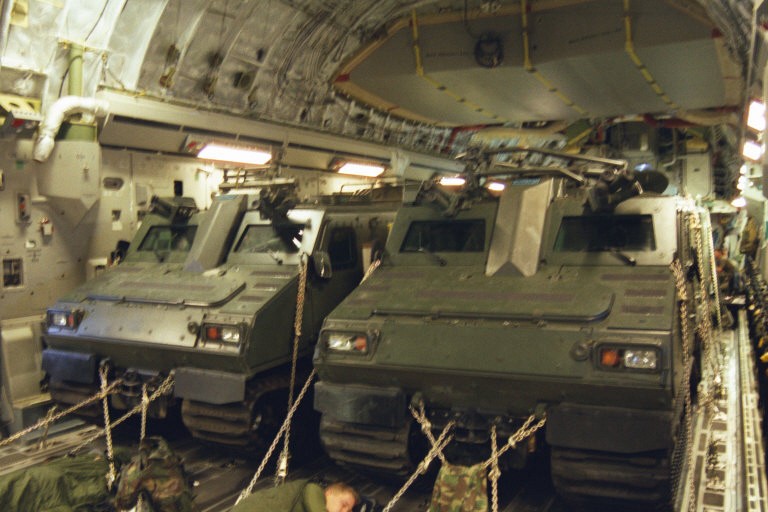
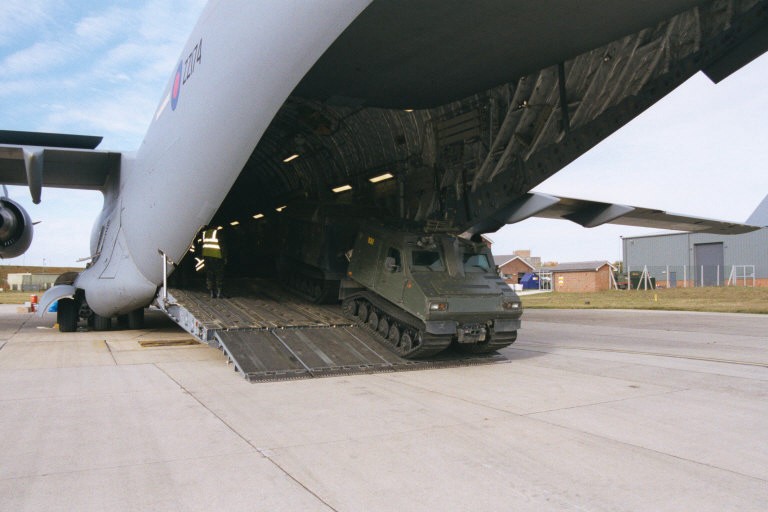
To: itsg@hotmail.com
Subject: BVS10 - VIKING / Royal Marines
Date: Sun, 18 Feb 2007 20:38:35 +0000
Maj RM
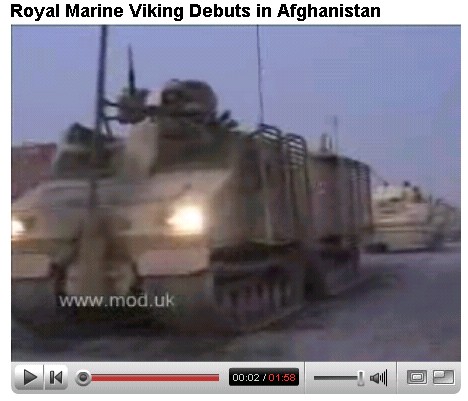
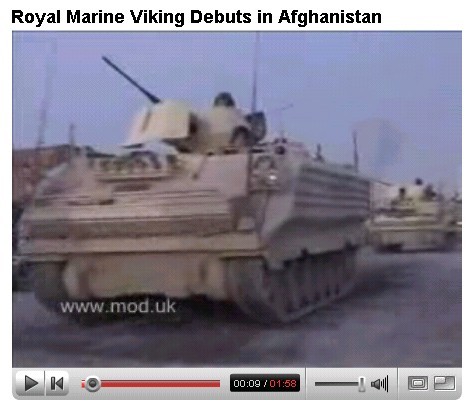
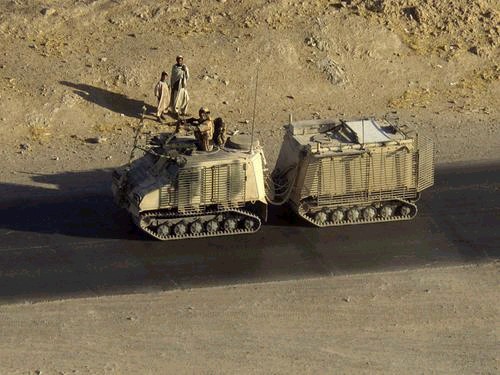
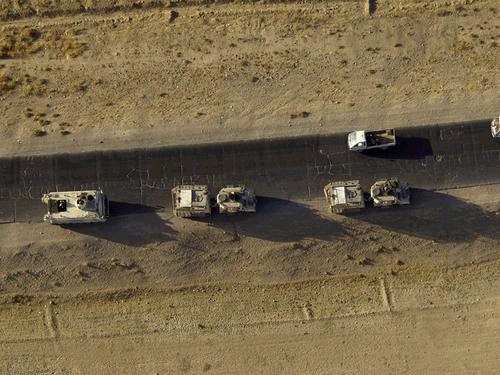
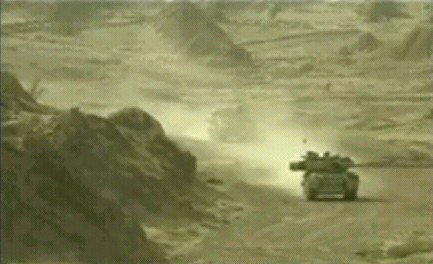
 www.youtube.com/watch?v=KbE63uMtPoo
www.youtube.com/watch?v=KbE63uMtPoo
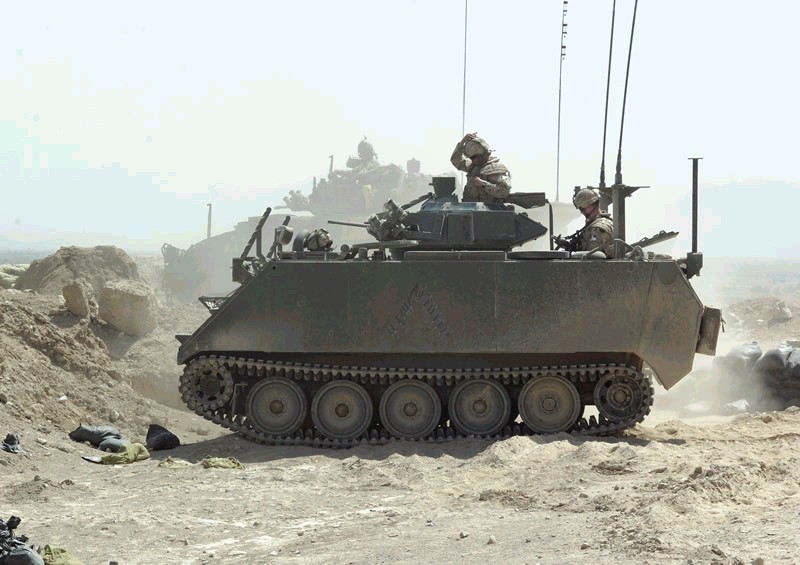
AR2007-A051-0261
15 May 2007
Kandahar, Afghanistan
Armoured Vehicles - NATO/ISAF - Southern Afghanistan - December 2006
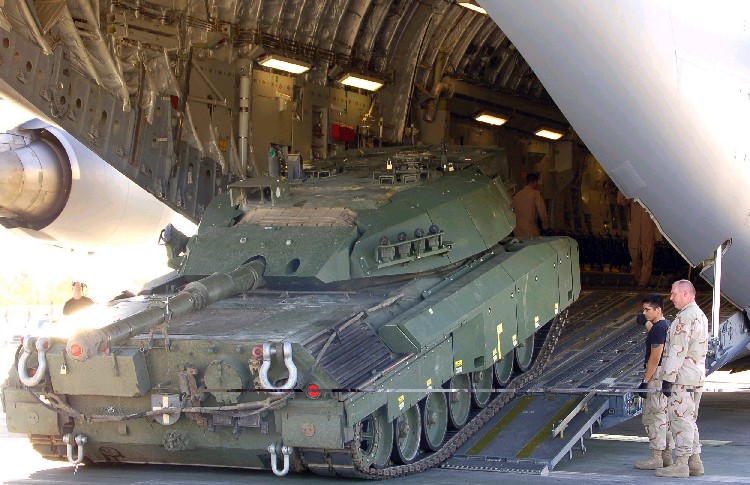
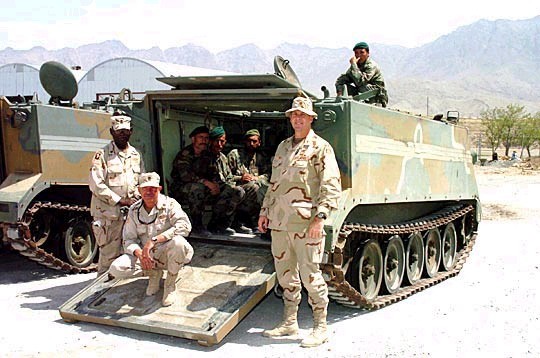
Members of the South Carolina Army National Guard's 218th Infantry Regiment pose next to an M113A2 Gavin with some of the Afghan National Army Soldiers they trained. From left are 1st Sgt. Bobby Duggins of Charleston, Sgt. 1st Class Michael Rector of Union, and Maj. Greg Cornell of Columbia. They are part of a group of embedded training team advisors from Task Force Phoenix assigned to train the Afghan National Army's mechanized kandak. Office of Military Cooperation-Afghanistan photo by U.S. Army Sgt. 1st Class Mack Davis
Office of Military Cooperation-Afghanistan Public Affairs
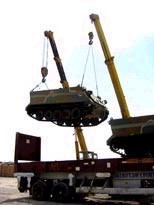
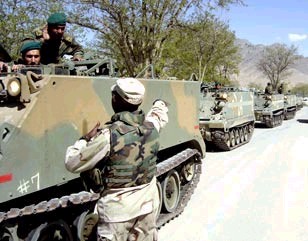
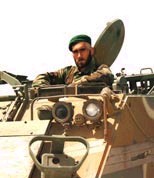
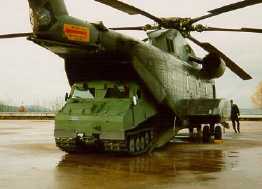
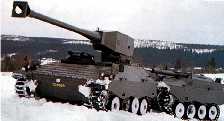
www.ludd.luth.se/~antenna/t2k/wi/ikv2000.htm
http://members.tripod.com/Strv102r/strv_2000.htm
Armament: 120mm MainGun, Ksp 39 (coax)
Ammo: 36 120mm, 2400 7.62mm
Fuel Type: D, A
Load: 500 kg
Veh Wt: 25 ton
Crew: 3
Night Vision: Headlights, Thermal/IR
Fuel Cap: 680
Fuel Cons: 140
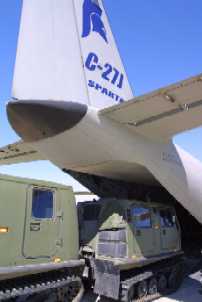
Joint Cargo Aircraft: We Have a Winner



EADS-CASA/ Raytheon Team JCA (C-295M) official site
The Aviation Zone - Beech C-12 Huron
Global Security - C-26 Metroliner
DID - DynCorp Receives $30.9M to Upgrade USAF VIP Transports. But the upgrades don't include defensive systems, whose absence is a problem in theater. The JCA will be equipped with defensive systems.
DID (Aug 2/07) - RAND on Counter-Insurgency Airlift. Lots of implications for the JCA; it mostly serves to make a strong case for the buy.
U.S. Air Force Link (June 13/07) - C-27J Spartan named as Joint Cargo Aircraft
U.S. Air Force Link (Jan 15/06) - Hub-and-spoke missions provide tactical airlift in Iraq. The JCA aircraft would be expected to play strong roles in these kinds of missions.
Inside the Air Force, via USAF Aim Points (March 27/06) - Could nimble JCA become 21st century 'surrogate' for C-130 fleet?
More Tactical photos:
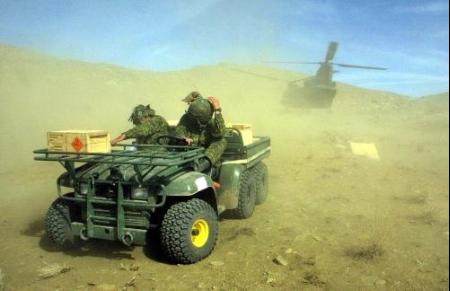
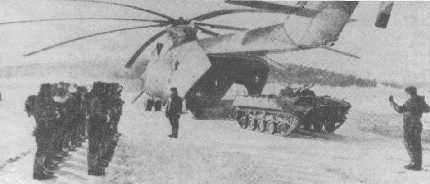
Mi-26 Heavy Lift Helicopter off-loading a BMD Armored Fighting Vehicle and its Airborne/Air Assault Infantry Squad from its rear ramp
"Its funny that while the Russian Army moves away from its wheeled vehicles (the BTR series), learning lessons from the brutal combat in Chechnya, the U.S. Army is moving towards them.
EDITOR: Dorian is right!
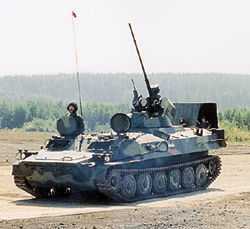
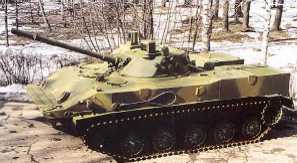
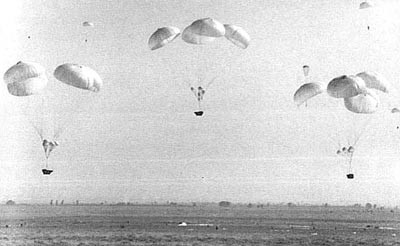
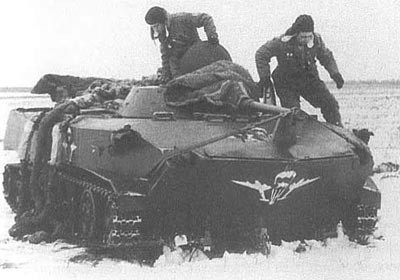
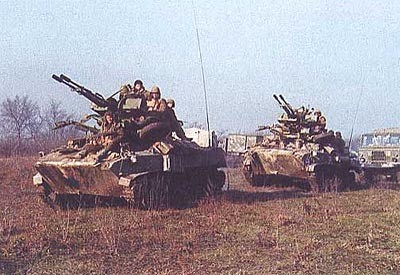
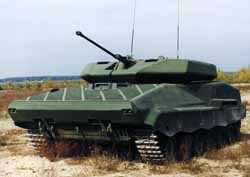 Russian 3D Maneuver combat vehicle is TRACKED
Russian 3D Maneuver combat vehicle is TRACKED
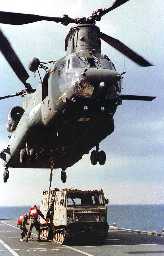
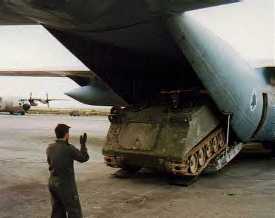
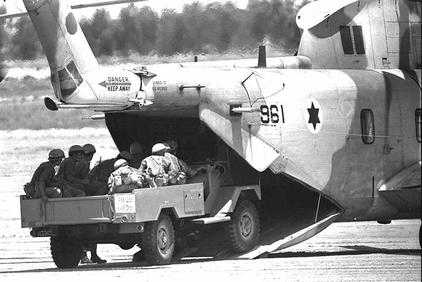
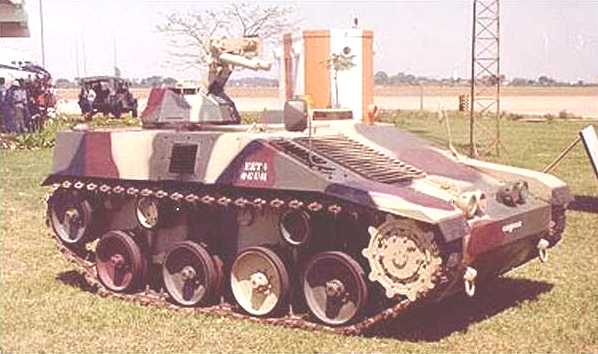
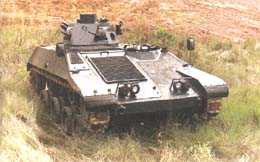
www.defesa.ufjf.br/fts/Ogum.pdf
http://army-guide.com/eng/product4492.html
www.janes.com/articles/Janes-Armour-and-Artillery/ENGESA-EE-T4-Light-Tracked-Vehicle-Brazil.html
www.dogswar.ru/oryjeinaia-ekzotika/bronetehnika/2171-bronetransporter-ee-.html
www.ecsbdefesa.com.br/fts/Ogum.pdf
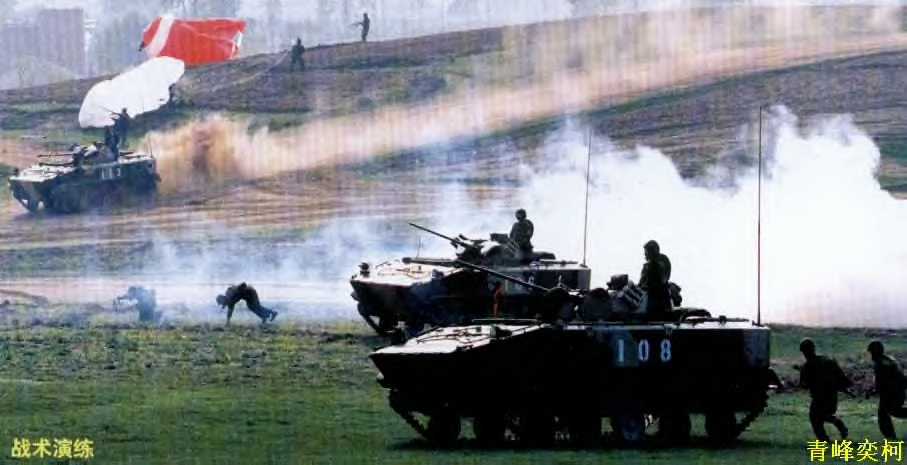
 www.youtube.com/watch?v=IafBYvu5UBo
www.youtube.com/watch?v=IafBYvu5UBo
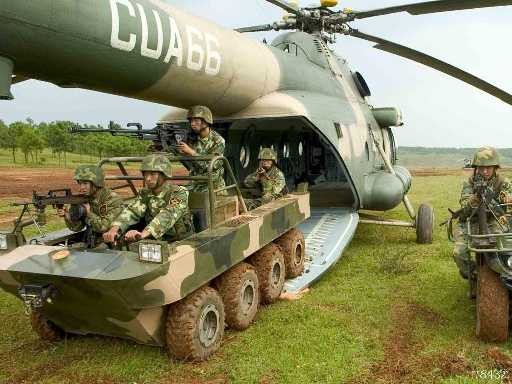
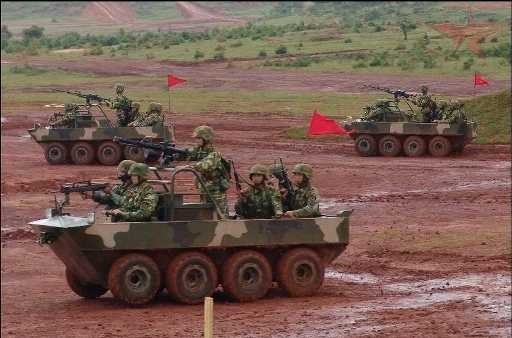
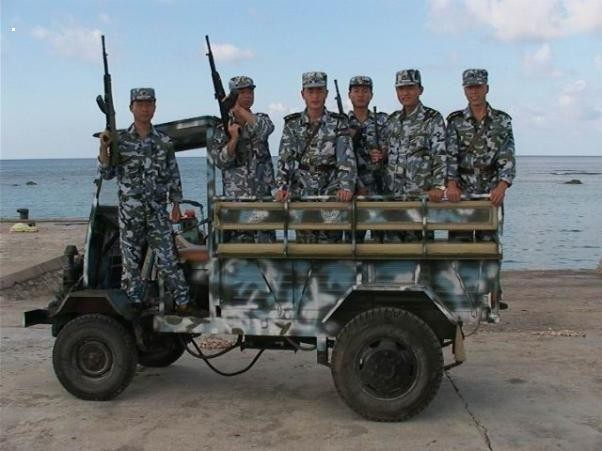
Center for Security Policy
THE FUTURE OF V/STOL?
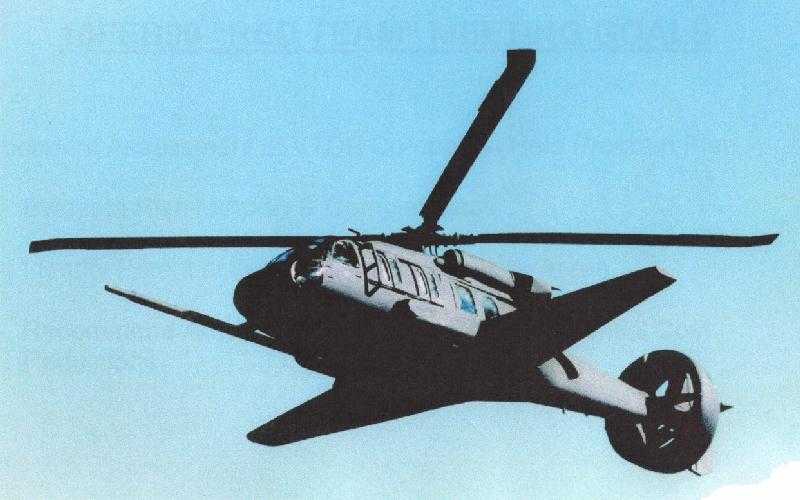
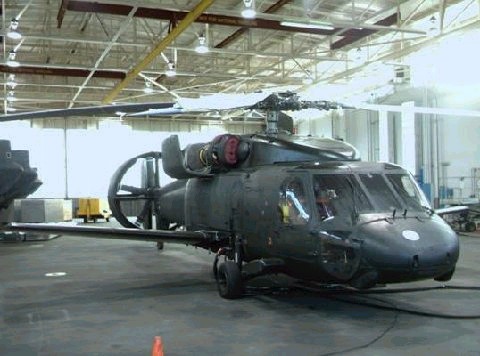
 www.youtube.com/watch?v=Yu2CwHwxJYA
www.youtube.com/watch?v=Yu2CwHwxJYA
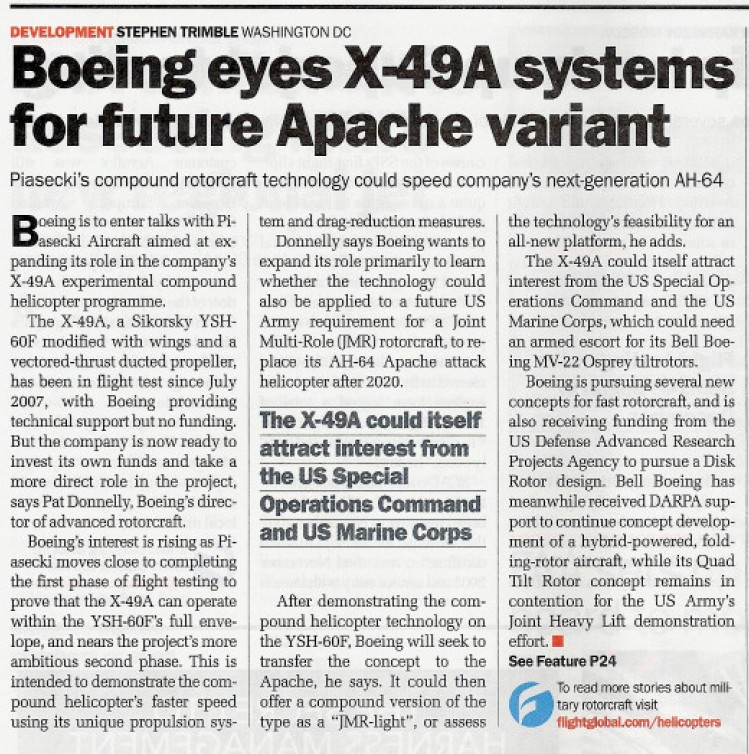
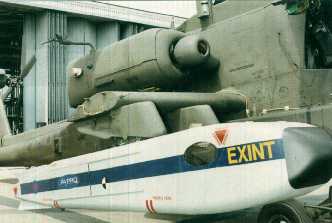
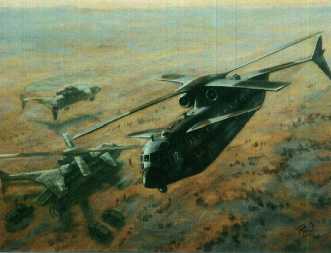
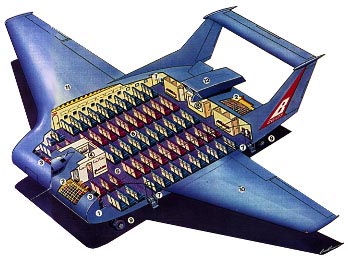
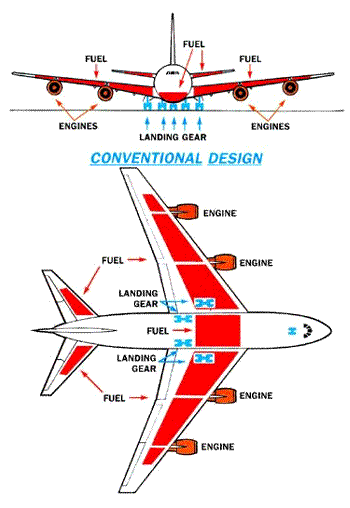
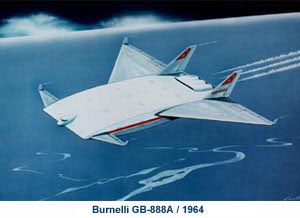
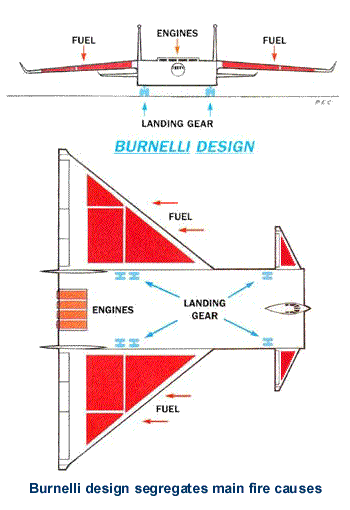
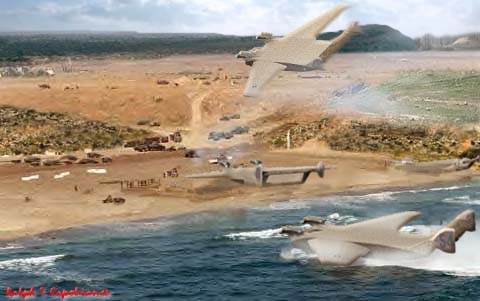
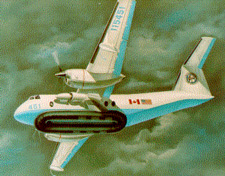
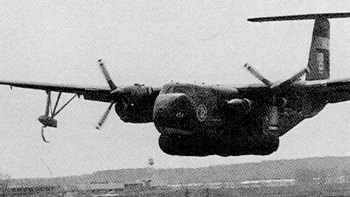
Bell perfected Air Cushion Landing Systems (ACLSs) with a DCH-8 Buffalo STOL aircraft in the 1960s...
 Boeing Phantom works adopts our Wing-In-Ground (WIG) effect concept with its new "Pelican" ultra heavy airlifter!
Boeing Phantom works adopts our Wing-In-Ground (WIG) effect concept with its new "Pelican" ultra heavy airlifter!
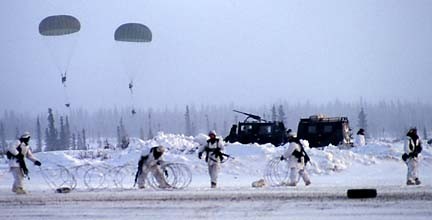 E-MAIL US! : itsg@hotmail.com
E-MAIL US! : itsg@hotmail.com
We remind readers that this web site is NON-PROFIT and for PROFESSIONAL DEVELOPMENT, SCHOLARSHIP, CRITICISM and COMMENTARY. We tell it like it is and take money from no one.
